




 Annette Scott NEWS Water
Annette Scott NEWS Water
WITH no significant rainfall since November, a man-made lake supplying water to South Canterbury farmers has forced an end to irrigation 10 weeks ahead of the usual season close on May 31.
The level of Lake Opuha, near Fairlie, dropped below 373m (4%), which brought the 2023-24 irrigation season to an end on March 19 for Opuha Water Ltd (OWL) shareholders and water users.
connectivity for as long as feasible.
This is a situation that no one in the community wanted to see eventuate, South Canterbury irrigation co-operative OWL chief executive Bjorn Triplow said, but
it is important to acknowledge that the Opuha Dam has done exactly what it was designed to do – provide environmental flows, community supply and reliable irrigation to the South Canterbury community.
The dam generates electricity for the national grid for about 4000 households and supplies water to 16,000 hectares of farmland.
“Unfortunately, the persistent El Niño weather pattern we are experiencing along the east coast has pushed the dam to the limits of what it can provide,” Triplow said.
Vanessa Winning IrrigationNZEnvironment Canterbury issued a Water Shortage Direction to OWL, which allows the minimum environmental flows to reduce to three cumecs, transitioning to natural flows where inflows into the lake equal outflows from the dam with the lake level 370m (0%). The primary objective of this approach is to preserve the river
Continued page 3 People
The prolonged absence of meaningful rain resulted in a “strikingly low” lake level coming into autumn.
“Ordinarily, the lake undergoes several filling cycles through the year, but this pattern has been disrupted.”
It has been almost a decade since the lake dropped so low with lake storage plummeting to within 50mm of zero in the 2014-15 summer.
The Ministry for Primary Industries recently declared a medium-scale adverse event in the top of the south, which has now been extended to include


$4.95
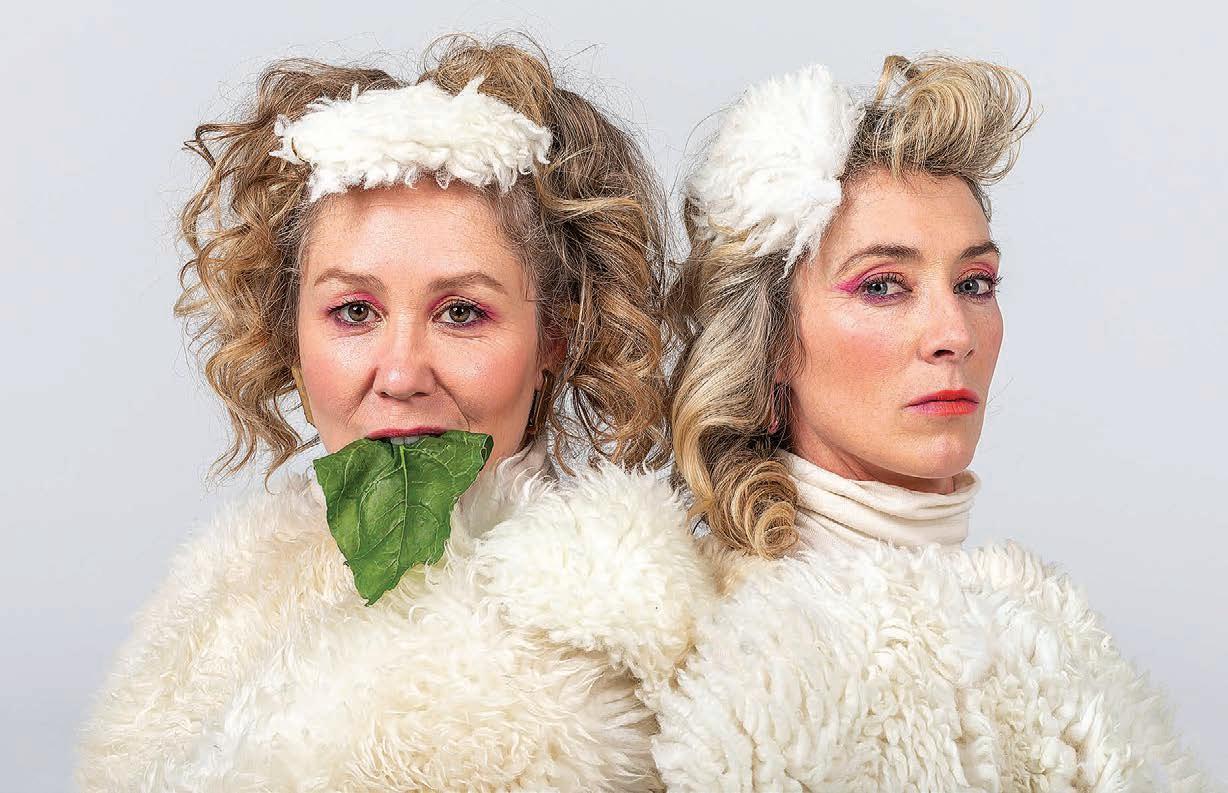
Farmstrong and the Rural Support Trust are bringing the Bitches’ Box: Episode 4 comedy show to flood-affected rural communities. Starring Emma Newborn and Amelia Dunbar, the tour begins on April 9, with shows scheduled in Northland, Wairarapa, Tararua, Manawatū and Tairāwhiti/Gisborne.
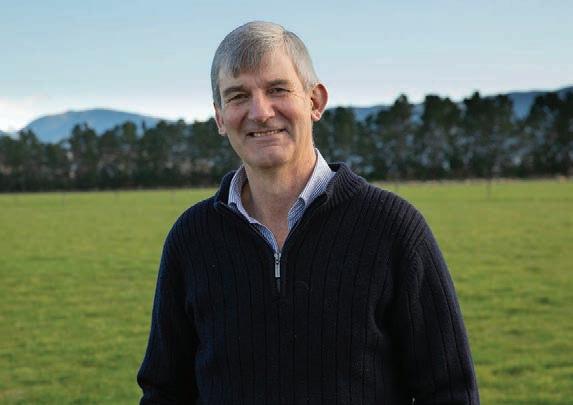
North Island maize grain growers warned to prepare for ‘perfect storm’.
NEWS 3
Retiring Alliance Group chair Murray Taggart says India has enormous potential as a sheepmeat market, but a free trade agreement that includes dairy will be difficult.
NEWS 5
Time running out for South Island farmers hoping for a late season feed flush.
NEWS 4
‘Woke’ is just a new name for the same old struggle, says Daniel Eb.
OPINION 18


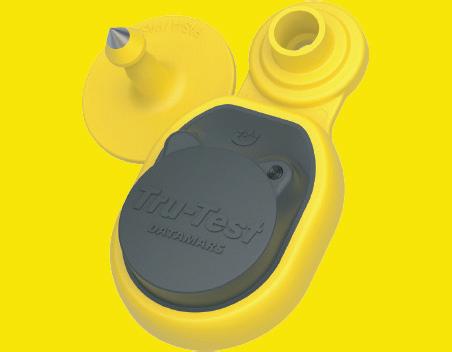
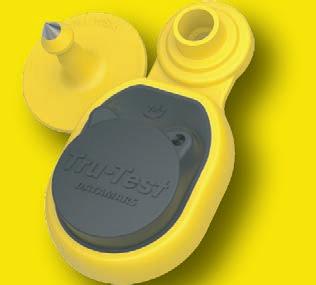
Find peace of mind with our affordable Heat & Health Tag for your dairy herd. The Tru-Test Active Tag detects and alerts heat and health events accurately in dairy systems. Easy install, reausable tags, 24/7 monitoring. Plus, win a Fence Monitoring Starter Kit* for advanced livestock management. 5-year


EDITORIAL
Bryan Gibson | 06 323 1519
Managing Editor bryan.gibson@agrihq.co.nz
Craig Page | 03 470 2469
Deputy Editor craig.page@agrihq.co.nz
Claire Robertson
Sub-Editor claire.robertson@agrihq.co.nz
Neal Wallace | 03 474 9240
Journalist neal.wallace@agrihq.co.nz
Gerald Piddock | 027 486 8346 Journalist gerald.piddock@agrihq.co.nz
Annette Scott | 021 908 400 Journalist annette.scott@agrihq.co.nz
Hugh Stringleman | 09 432 8594 Journalist hugh.stringleman@agrihq.co.nz
Richard Rennie | 027 475 4256 Journalist richard.rennie@agrihq.co.nz
Nigel Stirling | 021 136 5570 Journalist nigel.g.stirling@gmail.com
PRODUCTION
Lana Kieselbach | 027 739 4295 production@agrihq.co.nz
ADVERTISING MATERIAL
Supply to: adcopy@agrihq.co.nz
SUBSCRIPTIONS
0800 85 25 80 subs@agrihq.co.nz
PRINTER
Printed by Stuff Ltd
Delivered by Reach Media Ltd
Andy Whitson | 027 626 2269
Sales & Marketing Manager andy.whitson@agrihq.co.nz
Andrew Fraser | 027 706 7877
Auckland/Northland Partnership Manager andrew.fraser@agrihq.co.nz
Jody Anderson | 027 474 6094
Waikato/Bay of Plenty Partnership Manager jody.anderson@agrihq.co.nz
Palak Arora | 027 474 6095
Lower North Island Partnership Manager palak.arora@agrihq.co.nz
Omid Rafyee | 027 474 6091
South Island Partnership Manager omid.rafyee@agrihq.co.nz
Julie Gibson | 06 323 0765
Marketplace Partnership Manager classifieds@agrihq.co.nz
Andrea Mansfield | 027 602 4925
National Livestock Manager livestock@agrihq.co.nz
Real Estate | 0800 85 25 80 realestate@agrihq.co.nz
Word Only Advertising | 0800 85 25 80 Marketplace wordads@agrihq.co.nz
Dean and Cushla Williamson
Phone: 027 323 9407 dean.williamson@agrihq.co.nz cushla.williamson@agrihq.co.nz
Farmers Weekly is Published by AgriHQ PO Box 529, Feilding 4740, New Zealand
Phone: 0800 85 25 80
Website: www.farmersweekly.co.nz
ISSN 2463-6002 (Print)
ISSN 2463-6010 (Online)

New Zealand King Salmon has returned to profitability, declaring a net profit after tax of $28.5 million in the financial year ended January 31.
The pro forma earnings before interest, tax, depreciation and amortisation were $24.5m, compared with a loss of $2.7m in the previous financial year, and a guidance of $23.5m to $27.5m. NZ King Salmon has a strong balance sheet with cash on hand of $24m, to be used for a pilot farm in the new Blue Endeavour aquaculture site.
Welsh shearer Llyr Jones knocked New Zealand’s reputation for having the fastest shearers in the world by winning the country’s richest speed shear prize in Te Kuiti.
Jones claimed $4000 for winning the North Island Speed Shear Championship with a 17.72 second last blast at the Waitete Rugby Club in Te Kuiti. NZ speed shears supremo Jimmy Samuels of Marton was runner-up, shearing 19.1s in the final.
Preparations are in full swing for Fieldays 2024, which starts on June 12. The build of the small city starts taking shape in early April, transforming the 114 hectares of Mystery Creek Events Centre into a showcase of New Zealand’s food and fibre sector. With more than 1000 exhibitors, Fieldays visitors can expect to see a range of cutting-edge agricultural technology, innovative farm equipment and rural lifestyle exhibits.
A Waikato farming family have been fined $23,000 for failing to provide sufficient food and care for their cattle, which resulted in the death of more than half a dozen animals.
Shane Ross Quigley, 49, Colin Ross Quigley, 75, and Margaret Heather Quigley, 72 were sentenced on four charges under the Animal Welfare Act.




 Gerald Piddock NEWS Arable
Gerald Piddock NEWS Arable
GRAIN and seed traders are warning North Island maize grain growers to prepare for a “perfect storm” this autumn as oversupply issues, few storage options and falling prices hit the industry.
Feilding-based grain trader Bruce Gibson of Gibson Grain said it is the result of several interwoven factors.
There is a substantial amount of grain carried over from the 2023 harvest, resulting in storage issues for this season’s crop.
The low payout at the start of the season led to dairy farmers halting their spending, with many choosing home-grown feeds over grain or imported feed. More crops were also planted last spring as farmers prepared for a drought after warnings of an El Niño summer.
Instead, many North Island farmers had one of the best summers in recent years for growing pastures and summer feed crops, resulting in high feed surpluses.
“All of the regions – Waikato, Manawatū, Taranaki etcetera – had such good grass growth, they were making grass silage that they would not have already made and that’s added to the woe as well,” Gibson said.
Maize grain growers, particularly those without contracts, should seriously consider cutting some of their crops for silage or greenfeed because of a lack of available storage and drying facilities, he said.
Continued from page 1
all districts in the Canterbury and Otago regions, based on the extended period of very dry conditions affecting the livestock sector in particular.
Meanwhile Irrigation NZ is pressing ahead with water storage projects it proposes as a critical component of climate adaptation and land use change.
IrrigationNZ chief executive Vanessa Winning said NZ has demonstrated to the government the need for enabling policy to build resilience from droughts, floods and “those times in between”.
She said early engagement with the key ministers in the coalition has set the stage for new policies endorsing water storage.
Geared towards national, regional and local on-farm adaptation, these policies focus on securing water availability
The oversupply issue is not exclusive to maize, with other grains also affected including bypass (processing) peas and malting barley – both of which are being sold as lower value stock feed.
The high inventory levels are also making buyers reluctant to buy this season’s grain, he said.
“With drying space and storage maxed out, there will be crops with nowhere to go.
“To add insult to injury, one of the large multinational companies imported 30,000 tonnes of maize grain from Eastern Europe in December.”
While most of that was for one client, some of it went onto the open market, he said.
Next season’s planting decisions could be seriously influenced if this excess supply is not used.
“Some people that I deal with and know could still have 2024 maize grain unsold come planting time, but they could also have 2023 maize unsold. That’s not going to encourage them to plant for the 2025 crop.”
Some of the excess has already been sent to drought-stricken farmers in Marlborough, with 10 tonnes of grain sent in midMarch to assist those farmers, he said.
The situation has prompted PGG Wrightson North Island grain manager Kevin Flaxman to send out a letter warning growers there are limited storage options.
“Storage is expected to be in high demand, with many warehouses around the country storing large volumes of other types of feed.
“Because of these factors we
for land use, particularly in areas with highly productive soils and those supporting horticultural production.
IrrigationNZ participated in the consultation for changes to the fast-track consenting regime.
Winning said it’s pleasing to see the government demonstrating support for projects that need help managing the resource management minefield, reducing reliance on river run and supporting the infrastructure needed to grow food and support the environment.
IrrigationNZ has presented four projects it is eager to begin, with details on the Bill review and project list now expected in early April.
“Focusing on water management, we’re seeing a shift towards strategic climate resilience and support for farmers transitioning land use. Fasttrack consenting and funding for water storage projects mark a

anticipate a surplus of maize being available in the market this season,” he said.
Flaxman said it is unlikely that PGW will purchase maize that is above the contracted quantity.
Federated Farmers arable chair David Birkett echoed Gibson and Flaxman’s assessment.
“There has been a large carryover from last year and the problem that it causes is that silo storage – particularly in the North Island – is already partly full with last year’s grain.”
It puts a premium on space for this year’s harvest, he said.
He said many growers are already following Gibson’s advice and are cutting their crop for silage because of the lack of space.
The downside of this advice is that silage prices have fallen as much as grain prices.
Last year, maize silage was 30-35 cents per kilogram of dry matter. That has fallen to 20-25c/ kg DM. Similarly, maize grain has fallen from around $600 a tonne 12 months ago to $400/t.
Growers need at least 30c/ kg DM for silage and $500/t for grain to break even, he said.
significant change.”
Key focuses include groundwater release, managing over-allocated catchments, community engagement, integrating with drinking water and renewable energy, and supporting iwi and hapu to thrive while improving the environment of our flora and fauna.
“We need to get the balance right. There is enough water for all if we capture and store it properly.
“If we do this well, we will keep our social licence and support our communities to manage through changing climatic conditions, provide choices for productive use and help our communities prosper.”
While new projects are exciting, Winning said it’s crucial to improve water efficiency and outputs to demonstrate leadership in water management.
This credibility is vital for discussions with regulators and
Fonterra’s bounty has begun to normalise
 Hugh Stringleman NEWS Dairy
Hugh Stringleman NEWS Dairy
EQUITIES analysts have praised Fonterra for its continued profitability as disclosed in the interim results for FY2024.
But what they call a golden run of super-normal profits is ending as stream returns return to historical relativities and the tail winds for Consumer and Foodservice margins moderate.
The second half of FY24 will see normalisation of trading and contractions of margins but sharemarket investors and farmershareholders should stay positive.
With drying space and storage maxed out, there will be crops with nowhere to go.
Bruce Gibson Gibson Grain“It’s not just maize grain. Wheat and barley have done a similar thing and have dropped from $650/t to the mid-$450/t. The whole grain market has corrected.”
He is also concerned for growers along the east coast, who were still recovering from the impact of Cyclone Gabrielle and were late getting crops in the ground last spring. They also did not have the option of turning it into silage because of the lack of dairy farms in that region.
“Now they’re planted, and they are looking like good crops and they’re going to struggle to find a home for them.”
Birkett said they are also in discussions with Rural Contractors NZ to see whether the grain can be bagged in large tubes for storage.
communities, especially evident in schemes and irrigators in Canterbury and Otago.
Water infrastructure projects proposed by IrrigationNZ for the coming year in order of priority are Tuki Tuki in Hawke’s Bay; Falls Dam, North Otago; Wairarapa scheme revamp; and Klondyke water storage, Mid Canterbury.
“We expect these projects to employ a robust decision-making process.
“They are genuine whole-ofcommunity projects and it will be crucial to have the community on board to join up solutions where everybody wins.
“People do understand if we are going to build resilience for our farming communities, particularly growing industry such as horticulture, then water storage is the genuine enabler,” Winning said.
“Like everyone else, we are now waiting on government to put the [fast track] list out.”
“The impact of strong results on the balance sheet is very positive,” Jarden’s head of research, Arie Dekker, said.
“Changes in the capital structure, in more flexibility for sharing up, position Fonterra well for milk, especially as a key competitor is struggling at present.”
After his reference to Synlait, Dekker noted that the co-operative said farmers are interested in joining Fonterra and this is positive for the manufacturing capacity.
He again raised the possibility that Fonterra could sell its Australian plants and businesses, now coupled with Fonterra Brands NZ, and make another big capital return to shareholders.
Analysts for three brokerages have forecast net profit after tax this financial year of around $1 billion, falling to between $750 million and $850m in the two following financial years.
These projections expressed in earnings per share (EPS) are 58-64c in FY24, 45-53c in FY25 and 45-55c in FY26.
After applying Fonterra’s dividend policy of paying out 40-60% of earnings, the consensus dividend forecasts are around 50c this year and 28-32c in the two following years.
Forsyth Barr analysts Matt Montgomerie and Benjamin Crozier have increased their expectations towards the top end of Fonterra’s dividend policy range.
Jarden and Craigs Investment Partners have both increased their target prices for Fonterra Shareholders Fund (FSF) units by 6% to $4.05 and $3.92 respectively, with overweight ratings.
Forsyth Barr does not provide target prices.
Craigs analysts said that following a spectacular run over the past 18 months, Fonterra’s bumper results are now behind the company.
“While Fonterra now lacks near-term catalysts, and may report a down year in FY25, we think the units remain good value versus their agricultural peers.”
The Forsyth Barr duo said they were gaining confidence in Fonterra’s execution of its 2021 strategy. Operating expenditure has been controlled well in an inflationary environment.
“It continues to pursue and invest for cost efficiencies in its operations, which underpins our modest EPS upgrades.”

WHEN will it rain is the big question for farmers who turned out in their droves to a field day focused on managing their farming operations through the winter months.
Organised by Beef + Lamb New Zealand (BLNZ), hosted by Braided Waters Farming in the Rakaia Gorge and led by Mark Everest of McFarlane Rural Business, the field day provided more than 50 farmers with key information aimed at supporting the crucial decisions they will have to make.
On the agenda was everything from feed budgeting to financial scenarios.
Opening the seminar, BLNZ chair and northern South Island farmer director Kate Acland acknowledged the “incredibly challenging summer”.
“It’s been the perfect storm with the weather and the market conditions.
“We are here to focus on tools we can give farmers to succeed now and into the future,” Acland said.
Braided Waters Farming manager Angus Lang said the past few months have been a “very stressful time” in which, together with farm owners David and Miller Harper, he had to make some critical decisions around livestock numbers and what comes next going through winter as he prepares himself, the team and the 7000 hectare farming operation to come out the other side of the dry.
“It was dry here early January, the pasture covers were looking good, we had hay shut up, we went away on holiday, came back and it was not looking so good, as quick as that.
“We need to be growing 50kg a day but we were only doing 20kg.
“By early February it was, I can’t see a way out of this.”
With dairy grazing the main part of business, owners were notified and the call was made at the end of February to get stock off farm, dropping from 8600 stock units to 4000.
Braided Waters carries about 1150 cattle, 1200 ewes, 130 heifers either bred or bought in and a few beef cows. It finishes 600 deer and 4000 lambs.
“I have been farming in the gorge here for over 20 years and this is the first time we have had to de-stock.
“When it hits us, it hits us hard and it costs us. It was a big cash flow loss to lose all these animals and two months’ income, but the key was letting our dairy farmers know early,” David Harper said.
“Two weeks ago we were only growing 5kg, this week we are at 17kg, in balance but not gaining anything and we are bloody lucky the winter feed crops are looking okay.
“We are in recovery phase now to get though winter and come spring we will work out how we make some money,” Lang said.
Harper said the pressure was on to make the right decision.
“There was stress on everybody in the chain but once we made the call, made a plan we all got on with it,” Harper said.
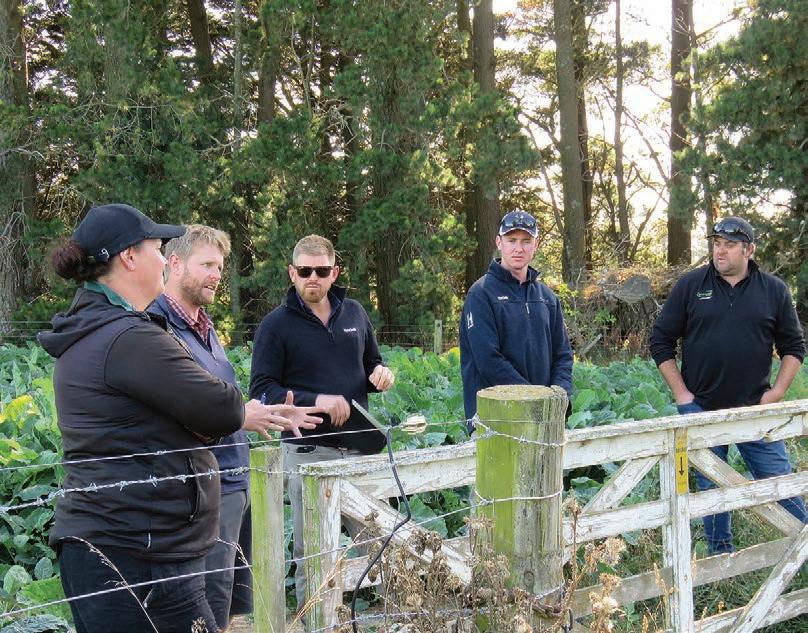
Making the plan is key, Everest told farmers.
“When you are 900m down a 1km runway you are pretty much in the poo.
“If we get no rain by April 5 we are in trouble
He urged farmers to make a plan early and continually review it.
“Action it now, one bite at a time, to get into and through winter and out the other side.
It was a big cash flow loss to lose all these animals and two months’ income, but the key was letting our dairy farmers know early.
David Harper Braided Waters Farming
STRESSFUL:
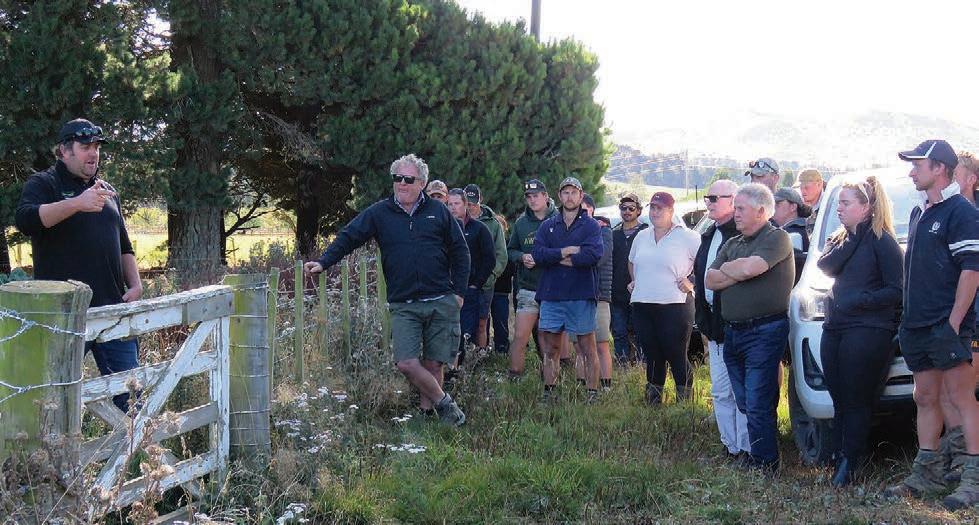
“It’s about evaluation of options and opportunities. Be honest, understand where you are at now and where you are going to be in four to six weeks to make proactive decisions.
“What drives cash; define the business drivers, consider the animal needs and feed stability; when, where and what can influence the plan, then rigorous plan implementation with whole team buy-in.”
Everest said the banks are willing to support but they need a line of sight.
“Get finance sorted, get the management team together, the accountant, family and other
stakeholders and give the bank an early heads-up. Communication, both internal and external, is key.”
Re-stocking is a long way down the track.
“There’s four to six months of problem to get through then revitalising feed is the first priority and recovery is to optimise what we are going to sell next year.
“We have been here before; we will be here again.
“You have adaptive brains, but you need to give the head a chance to clear.
“Take time to be social, to clear the brain to think clearer to make critical decisions.”

TIME is running out for droughthit South Island farmers hoping for a late season flush of feed from autumn rain.
The arrival of autumn has brought cooler temperatures, which farmers fear will negate much of the benefit from any rain that could fall.
Marlborough Federated Farmers president Evan White said the district has had some light frosts.
“We are nearing the end of March and it is going to get colder and we really needed rain before now to boost feed for winter,” he said.
“Each week we are getting less daylight and the ground temperature is cooling down.” He said soil moisture maps reveal most of the top of the South Island is below wilting point.
Recent rain in Marlborough has been minimal, at 1mm to 2mm, and the drought-affected area is
increasing to include the mid and upper Awatere Valley, Linkwater and Rai Valley areas that were previously hanging on but where farmers are now having to quit stock.
The spreading dry conditions are impacting areas where farmers provide winter grazing for dairy cows.
White, a dairy farmer, is milking three times in two days but will shortly cut back to once a day.
It is going to get colder and we really needed rain before now to boost feed for winter.Evan White Marlborough
Rain also remains a rare commodity for inland parts of most of the rest of the South Island.
Otago and North Otago have had a few millimetres of rain but it has
not been enough to ease ongoing drought conditions.
Otago Federated Farmers president Luke Kane said Central Otago and parts of South Otago are very dry with some farmers having to feed winter crops to young stock.
Kane said forecast wet, cold weather over Easter, while welcomed by some, could be an issue if conditions turn too cold to prompt growth.
North Otago Federated Farmers president Myfanwy Alexander agrees, saying while coastal parts of the province received some rain last weekend, it was patchy.
Her farm in the Waitaki Valley received just 2mm while other areas missed out.
Alexander said feeding out to stock is still widespread and most farmers have so far been able to ration feed without having to buy in.
Omakau farmer Andrew Paterson said the normal autumn rains have been absent from Central Otago and irrigators in the Manuherikia
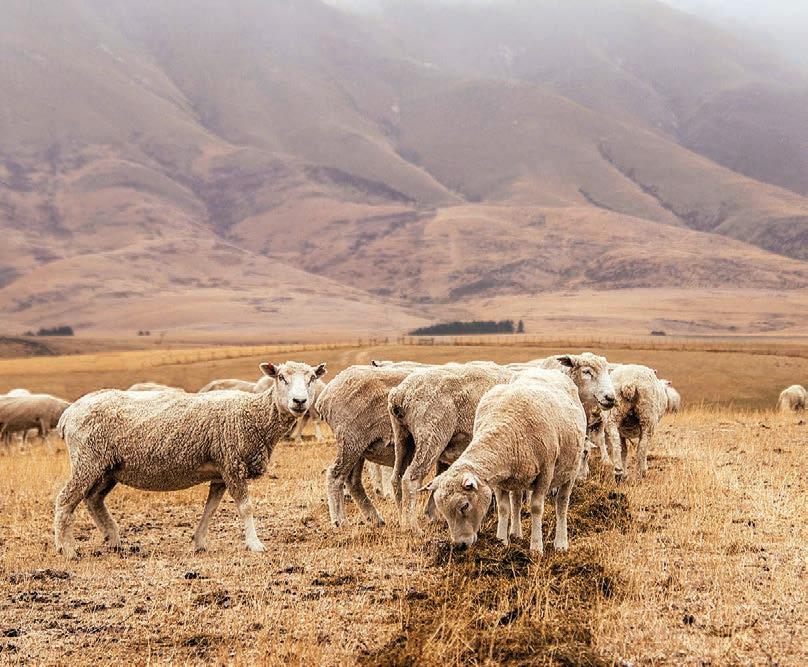
Valley are on 25% restrictions. He received about 7mm this week but it was patchy, with others getting about 1mm.

THE government is being urged to stay the course in pursuit of a free trade agreement with India even if it means initially excluding dairy.
Retiring Alliance Group chair Murray Taggart said India has enormous potential as a sheepmeat market, but if trade negotiators want a comprehensive free trade agreement that includes dairy, then it will be difficult.
“Frankly, including dairy and getting it through? They’re dreaming,” Taggart said.
India is the world’s largest dairy producer and has an active farming lobby, Taggart said.
Speaking to Farmers Weekly as he prepared to leave the post he has held for 11 years, he said the government should start with a less comprehensive agreement, nurture relationships with the Indian government and sector groups and then renegotiate terms.
Alliance has since 2013 been supplying QualityNZ, a company owned by New Zealand cricketers Sir Richard Hadlee, Stephen Fleming, Daniel Vettori and Brendon McCullum, with its Pure South branded lamb, which is sold to
340 five-star Indian hotels in 25 cities.
In 2020 Alliance bought 10.4% of QualityNZ, which also supplies seafood and wine.
Alliance moved into India to avoid being overly reliant on China and given the year-on-year growth, Taggart believes there are significant market benefits for NZ sheepmeat exports.
Taggart retires as Alliance chair next month after a career that has traversed the meat industry’s inevitable boom and bust cycles but which has seen the cooperative’s turnover grow from $1.4 billion to $2bn.
His tenure began after a difficult 2012 financial year in which Alliance reported a $51 million loss on turnover of $1.37bn.
Consecutive profits followed, peaking in 2022 at $117.2m on turnover of $2.2bn.
It ends with the economic tsunami of last year: weakness in China and high inventory and staffing costs in preparation for a drought that never eventuated, which resulted in a $97.9m loss.
Taggart said the market appears to correct itself every 10 years, but it takes another two or three years to recover that lost ground.
Taggart began his working career in retail, credit and corporate banking for ANZ with the intention of one day going
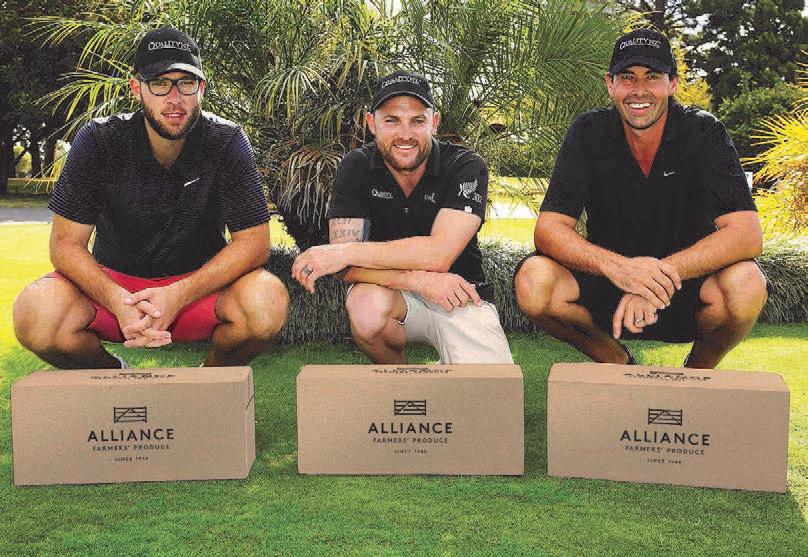
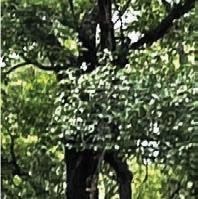
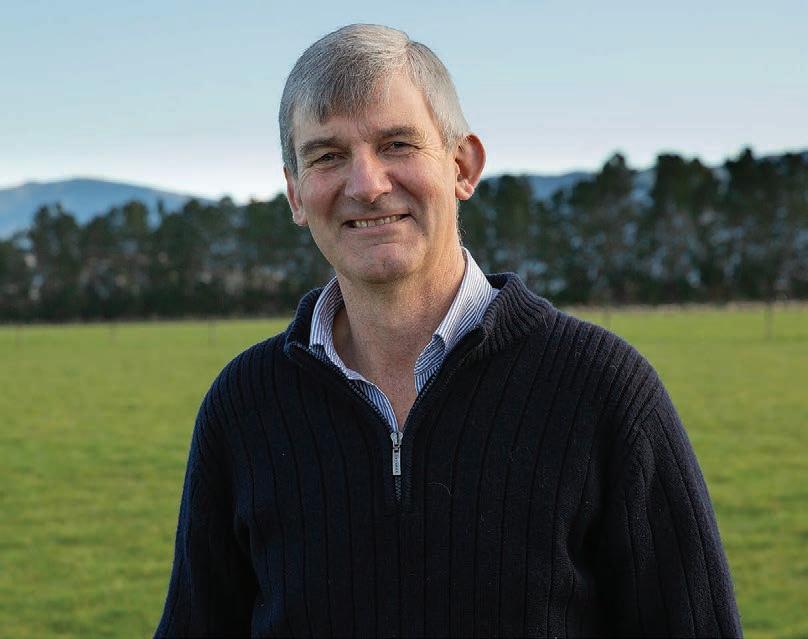
farming.
His brother had settled on the family farm at Oxford in Canterbury, and when he decided to switch careers and go fishing, Taggart and his wife Gina took the opportunity to shift onto the farm.
Believing there were opportunities for meat companies to capture more value, in 2002 Taggart was elected to the Alliance board as a supplier-director.
What he found was an industry where change was difficult because of the fine margins, large capital requirements and a market that regularly corrected itself.
“You don’t actually get an opportunity to move the peg forward,” he said.
Having lost his board seat in the 2007 election, Taggart was reelected in 2010 and elected chair in 2013.
He found an antiquated business using a 1983 computer system that was so old, the developers had advised they were no longer going to support it.
Most of the growth in the cooperative’s turnover was due to rising global prices, driven predominantly by China, but Taggart said Alliance continuously looks to add value, a process that is not quick and is never ending.
A recent example of a new
product is female cattle reproductive tissue, which is being freeze-dried and used in pills that are sold into the health and wellbeing market.
“We have a whole pipeline of projects. We have looked at the carcase and asked ourselves
Our employees should have the right to go home each night to their families.Murray Taggart Alliance Group
‘Where is the next layer of value?’”
It was also an industry that did not take health and safety seriously enough.
“Back then total recorded injury frequency rates were over 100 per one million hours worked. It is now 13.5, the lowest in the industry,” Taggart said.
“Our employees should have the right to go home each night to their families.”
One of the first steps taken to reduce injury rates was to install blade-stop saws, with the co-op buying the new manufacturer’s full year’s production.
Taggart said governance of a cooperative can be challenging not only for the legal responsibilities
directors have for health and safety, resource management and finance, but also in being accessible to shareholders.
He said this accessibility deters potential independent directors and management candidates who do not have that responsibility in private companies.
Finding farmer director candidates is becoming more difficult and Taggart said it is the duty of all shareholders to find those who are suitable.
While he is optimistic about the future of Alliance, Taggart said an enduring issue is ensuring the strength of the co-operative’s balance sheet.
It is a regular tussle to ensure livestock suppliers have sufficient shareholding to match the number of animals they supply.
In recent years Alliance has retained funds off stock supplied, actively sought shareholders to share up to match their supply volumes and retained distributions.
Taggart said managing primary sector businesses has been complicated by government changes to labour laws and policies that make it advantageous for investors to convert farmland to forestry.
He cannot see an end to the trend of falling sheep and beef numbers.
“We are at the mercy of world markets, so we don’t need competition from a governmentcreated artificial carbon market.”
Taggart intends spending more time on his 730 hectare livestock and cropping farm while also continuing his governance career as chair of forestry company Taumata Plantations Ltd (“we don’t convert farmland to forestry”) and a director on FMG’s board and several others.
He said he has had a privileged career.
“I feel really privileged to have had opportunities, learnt so much, had amazing experiences and having met wonderful and incredible people.”
Taggart has been replaced as chairman by independent director Mark Wynne.

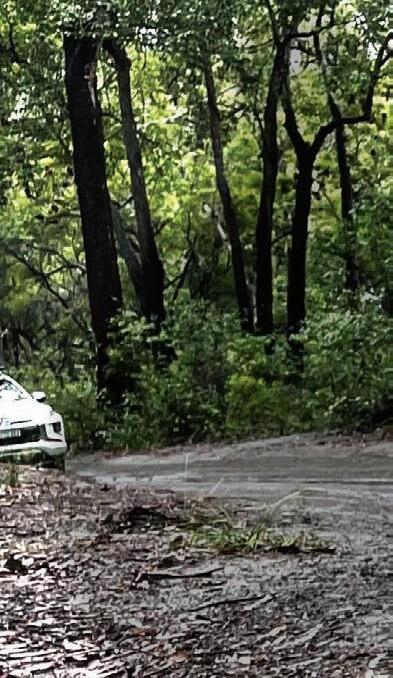



































Superphosphate helps keep your farm growing now, and in the years ahead. Production and output remove nutrients from your farm system, so you’ve got to top up to keep your productivity up. Book your application today on 0800 100 123.
 Neal Wallace NEWS Governance
Neal Wallace NEWS Governance
NEWLY created on-farm support teams are not included in proposed job cuts initiated last week by the Ministry of Primary Industries.
The Ministry has employed 45 staff in on-farm support teams and in response to questions from Farmers Weekly, an MPI spokesperson said it is committed “to protecting our vital primary sector from pests and diseases, and helping farmers and growers meet challenges including recovery from adverse events”.
“There are no reductions proposed to our frontline biosecurity work at the border, including ports, airports, and mail centres. Nor are any reductions proposed to our on-farm support teams.”
The coalition government has asked the MPI to find savings of 7.5% in the coming financial
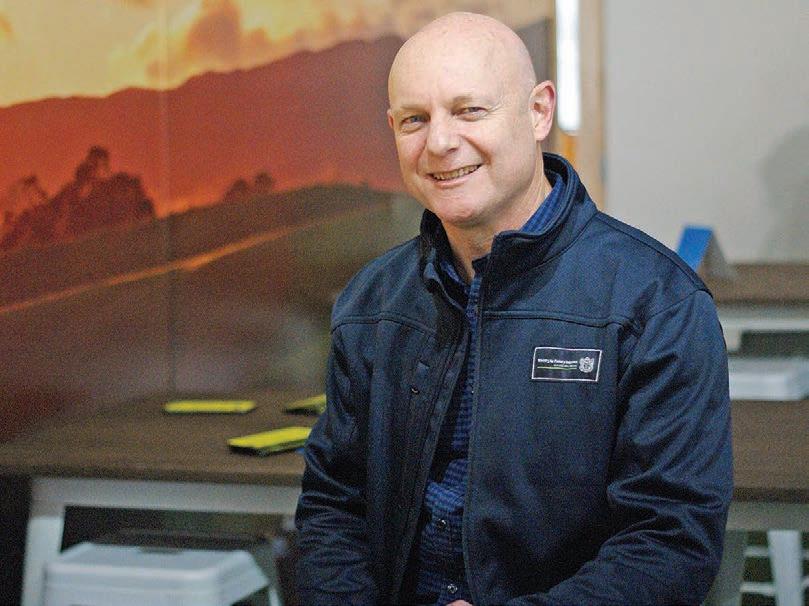
year and the Ministry has started consulting staff on proposals that will result in a net reduction of 384 positions, 9% of its workforce, of which about 40% are currently vacant.
Public Service Association
(PSA) national secretary Duane Leo described the 7.5% savings target as an arbitrary and blunt instrument that has no rational reasoning.
As at June 30 last year, the MPI employed more than 3800 people
 Neal Wallace NEWS Trends
Neal Wallace NEWS Trends
FARMER sentiment has risen for the second consecutive quarter but still remains low, according to the latest Rabobank survey.
Completed last month, the survey found farmer confidence in their sector’s performance was a net score of minus 16%, up from minus 47% previously.
It found 38% of farmers were expecting economic conditions to worsen in the next 12 months, down from 58% last quarter, with 22% expecting conditions to improve, up from 11%.
The balance, 39%, expect conditions to stay the same, up from 29% previously.
Rabobank chief executive Todd
Charteris said primary producers seem more comfortable with the direction of coalition government policy (28%). Their optimism was also boosted by rising commodity prices (20%).
Rising input prices (63%) and falling commodity prices (45%) were the major drivers for those with a negative outlook.
Farmer confidence in their own business performance rose strongly across all sector groupings, with growers the most optimistic about the year ahead and sheep and beef farmers the most pessimistic.
“Confidence is still well back on where we’d like to see it, but it is encouraging to see overall sentiment improving,” Charteris said.

and in the past five years it has increased its headcount by 1100.
Leo said given the growth in exports, tourists and population over that timeframe, an increase in MPI staff was warranted.
He said the PSA would support a considered approach to find efficiencies, but a 9% reduction in the workforce will affect services, could result in the loss of essential staff and increase the workload on those who remain.
He fears this round of cuts could be followed by another to achieve the government’s budget cut targets. An MPI spokesperson said cost savings include a mix of programme reductions along with the staffing proposals currently out for consultation.
The financial target the MPI is being asked to meet is budget sensitive and won’t be available until the process finishes in May.
Federated Farmers board member David Birkett said government departments need to
Fonterra’s increase in the farmgate milk price in February has driven a sharp improvement in dairy farmer confidence, increasing between surveys from minus 20% to plus 5%.
“Expectations for their own businesses were significantly higher among sheep and beef farmers too but, with sheepmeat pricing continuing to underwhelm, the overall net reading remains low at minus 31% – minus 62% previously.”
Charteris described as a major black spot in the survey the rise from 6% to 9% in the number of farmers self-assessing their own operation as unviable.
“We did see this number lift as high as 12% in Quarter 3 last year before dropping back to 6% last quarter. And while the general
live within budget constraints, but any cuts cannot be at the expense of core, frontline roles such as biosecurity.
Birkett said programmes should be scrutinised, especially those that have not delivered as intended.
The federation’s board regularly meets with the MPI and Birkett said it will have input into the department’s final proposals.
In a message to staff last week, MPI director-general Ray Smith said the proposed staffing cuts will not result in any reduction to frontline services and statutory roles such as veterinarians, animal welfare, fishery and food compliance officers or biosecurity teams at the border.
“However, we are proposing changes to roles and reporting lines in other areas of MPI, including the disestablishment of some positions.”
Consultation with staff will run through until April 9 with final decisions, following staff input, expected by mid-May.

uplift in confidence registered in the survey is positive, the rise back up to 9% does illustrate just how difficult the 2023-2024 season has been,” he said.
The survey found investment
intentions were broadly similar to last quarter with 16% of farmers saying they would increase investment over the next 12 months and 29% expecting investment to decrease.


AHAWKE’S Bay farming leader hopes changes to civil defence management of natural disasters will use the knowledge and expertise of people in rural communities.
Hawke’s Bay Civil Defence has committed to overhauling its emergency management systems in the wake of a critical independent review into how it responded to Cyclone Gabrielle last year.
The review, led by former commissioner of New Zealand Police Mike Bush from Bush International Consulting, found shortcomings in the region’s civil defence preparedness and response to the cyclone.
Hawke’s Bay Federated Farmers president Jim Galloway said rural groups, which operated under a Rural Advisory Group banner during the event, were effectively sidelined, their expertise and knowledge about what was happening and where, largely ignored.
“That is something Federated Farmers and rural groups would like in the future because we had a lot of knowledge but we weren’t taken notice of to the extent our input was valued.”
One of the review’s 75 recommendations is for regional councils to better manage the build-up of silt and gravel in rivers, something Galloway said is needed given the extent towns, orchards and valuable infrastructure are sited on river flats and flood plains.
Galloway said the cyclone reminded rural people that they need to fend for themselves for an extended period during a natural disaster.
“Whether that is having generators or more fuel on hand than they have previously, we do need to be prepared to be isolated for an extended period.”
Federated Farmers board member and Tairāwhiti farmer Toby Williams said his district’s civil defence response, while not without fault, had learnt from earlier disasters, such as the 2018 Tolaga Bay floods.
Protection work in response to earlier events also lessened the impact.
“It wasn’t our first rodeo.”
The district was also still under a state of emergency from Cyclone Hale when Gabrielle struck, so community hubs and emergency controllers were already operative.
“In our region those in change had a good understanding and connections into the community.”
The civil defence review was last week presented to the Hawke’s



– consisting of the region’s four mayors, the regional council chief executive, and mana whenua.
The committee said it accepts all of the findings of the review, saying that “our region’s emergency response system – whilst attempting to do the best it could under extremely challenging circumstances – was fundamentally overwhelmed by the scale, pace and magnitude of the event.”
The review’s findings include recommendations across local, regional, and national levels.
“Regardless of the complexity, what is clear is that as a region, we need to be prepared to undertake a complete overhaul of our approach to civil defence to ensure that our communities are better prepared to manage or mitigate the devastating impacts of an event like Cyclone Gabrielle.”
The review panel gave nine Tier 1 recommendations and a further 66 Tier 2 recommendations.
Tier 1 recommendations include overhauling the current Civil Defence Emergency Management (CDEM) system, developing regional disaster reduction and readiness plans, central government to build capabilities at regional and local levels and ensuring a recovery lead is
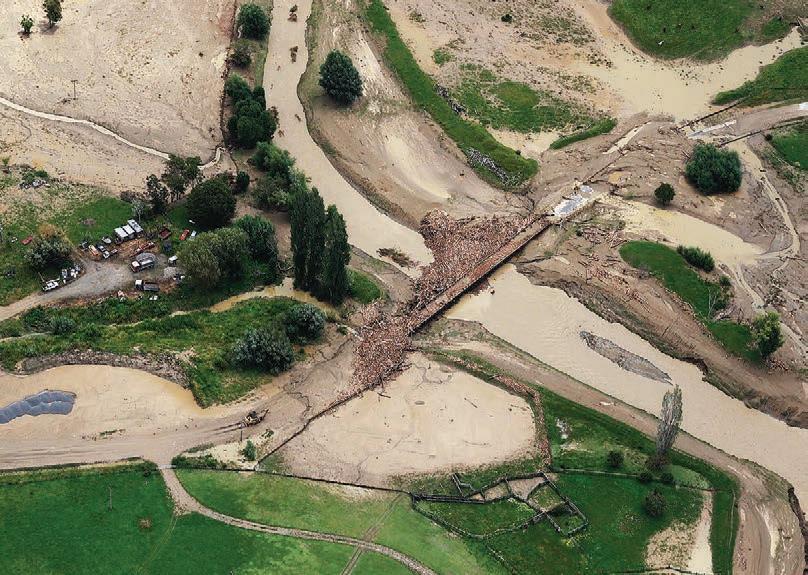
appointed early in the response phase.
The review found that the region took a “best case scenario” response rather than a precautionary approach and that this optimism was intensified by the lack of situational awareness underpinned by communications failures, power outages, and a lack of reliable, timely and accurate data.
These factors created significant blind spots and led to some critical mistakes.
The review also highlighted

low multi-agency operational experience that contributed to the inefficient co-ordination and utilisation of resources.
The committee members said they would do everything possible to ensure meaningful change occurs.
“Whilst it’s clear that there are no silver bullets, together the joint committee is united in its commitment to working with our CDEM co-ordinating executive group and council partners to develop a detailed action plan over the coming months.”
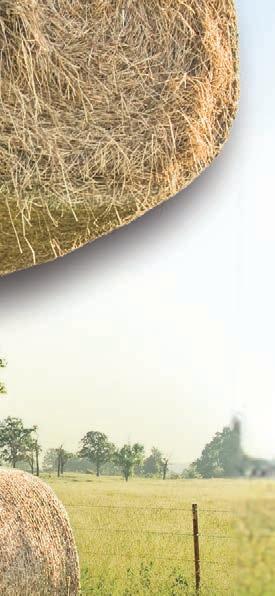


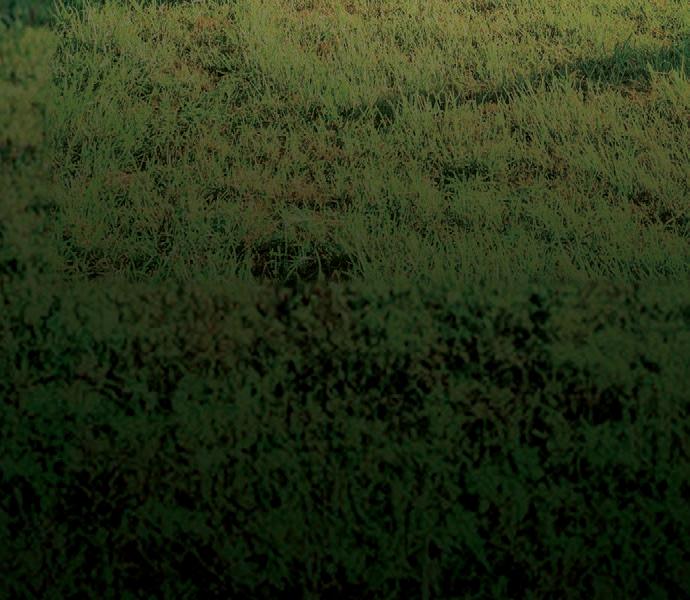




 Neal Wallace TECHNOLOGY Fertiliser
Neal Wallace TECHNOLOGY Fertiliser
THE volume of fertiliser applied from aircraft halved last year and applications from ground spreaders were back about a third.
Initial data released by the New Zealand Agricultural Aviation Association and the Civil Aviation Authority shows the volume of solid and liquid fertiliser applied by fixedwing aircraft and helicopters in 2023 fell 52% compared to 2022.
That decline was most severe with liquid products, which fell 67%, while solids declined 51%.
Aircraft operators flew 18% fewer hours.
Simon Pederson, chair of Groundspread NZ, said information from his members indicates fertiliser volumes were back about 30%, most of that decline driven by lower demand from sheep and beef farmers.
“Anyone doing work in the sheep and beef sector is well down.”
He said those working in dairying areas were less affected.
Farmers are in general making their fertiliser investment go further by applying less of it.
Pederson said looking at the current year, the dry weather is impacting production at a time when product prices, especially for sheep meat, are low.
“This year is going to be pretty average at best,” he said.
Comparable figures are not yet available from the Fertiliser Association but a spokesperson expects volumes to be down for the 2023-24 year.
Tony Michelle, executive officer for the NZ Agricultural Aviation Association, said there is some uncertainty with the 2023 data, which is being queried.
Michelle said low returns, changes in land use and the impact of escalating costs of operating aircraft have driven farmers and growers to choose lighter applications of fertiliser and reduced weed control.
He said an increase in the use of high analysis fertilisers also means less volume is applied and fewer hours flown.
Other reasons for the reduced volumes are
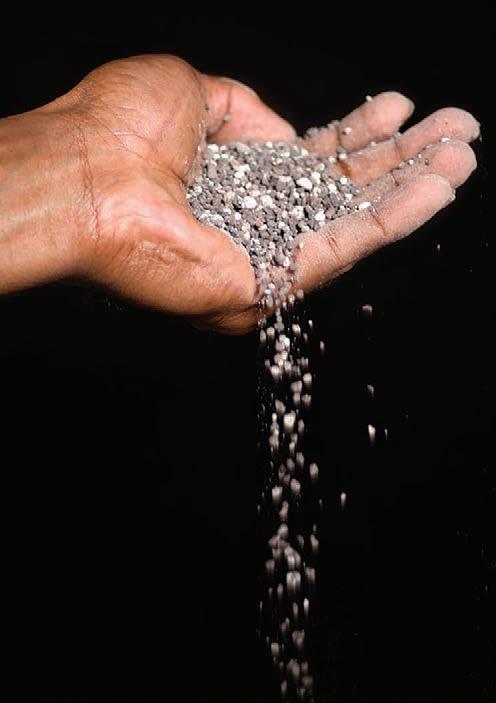
DECLINE: Simon Pederson, chair of Groundspread NZ, said information from his members indicates fertiliser volumes were back about 30%, most of that decline driven by lower demand from sheep and beef farmers.
a downturn in primary product prices, urban encroachment into productive farmland and significant increases in the cost of fertiliser, shipping and cartage.
He said almost all aviation fuel is imported, and it has increased in price along with significant hikes in labour and technician costs.
Michelle said the price of Pratt & Whitney engines alone has increased 21% while Safran engine components are 80% more expensive.
Pederson said ground spreaders are similarly impacted, with the price of trucks and parts rising about 20% in recent years and delivery taking longer.
It now takes the best part of two years to get a new truck on the road after ordering it.
To buy and fit out a new spreader previously cost $400,000; it now costs $500,000 due to higher purchase costs and the price of elements such as bins and wheels.
 Hugh Stringleman NEWS Production
Hugh Stringleman NEWS Production
ON-FARM cost increases have moderated and quickly returned to the aggregate economy inflation rates, Westpac economists say.
They are forecasting around 3% in 2024 and 1.9% in 2025, slightly higher than the CPI this year and slightly lower next year.
Westpac said that recent data shows onfarm cost inflation normalised in 2023 and came close to its prediction of 2.4%.
For comparison, the average pre-covid cost inflation rate on farms was 2%, blowing out to 7.5% in 2021 and 15% in 2022.
“Last year we anticipated a significant reduction after a couple of years of very strong increases,” chief economist Kelly Eckhold said in an Agri Update note following the latest Global Dairy Trade auction.
“It will be pleasing for farmers to see on-
farm inflation moderating and it may be a partial offset to weaker farmgate prices.”
Eckhold said the main categories of farm costs are debt servicing, fertiliser and fuel.
While the effects of higher debt servicing are still being felt, the other two categories have turned from strongly inflationary to negative.
“I wouldn’t say that on-farm costs are now falling, but the rate of increase has certainly returned to normal.
“Debt servicing costs remain elevated and are expected to remain high over 2024 as the Reserve Bank brings inflation under control. A saving grace is that interest rates currently look to have peaked.
“Wages costs are expected to moderate from the very high levels seen in recent years as the labour market continues to ease.
“As most cost categories have now normalised, we now see on-farm inflation trending close to aggregate economy inflation rates in the coming couple of years.”





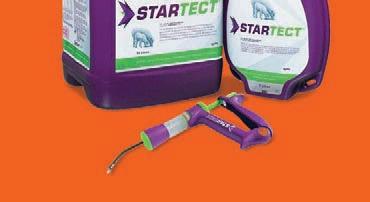







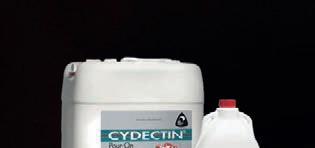

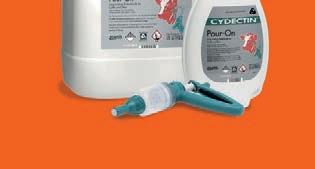


 TNigel Stirling MARKETS
TNigel Stirling MARKETS
Sheep and beef
RADE Minister Todd McClay has sought assurances that New Zealand beef exporters will face the lowest possible compliance obligations when it comes to new rules designed by the European Union to fight global deforestation.
The EU passed regulations last June requiring exporters of a limited range of commodities to prove they have not contributed to global deforestation since the end of 2020.
Exporters to the 27-country bloc must comply or risk fines equal to 5% of their global turnover.
The EU has previously indicated exporters’ reporting obligations would depend upon their country’s relative contribution to global deforestation. Exports from lower risk countries would face lower reporting requirements.
However, with a looming deadline for compliance by the end of this year and with further detail yet to emerge, concerns among NZ exporters have been mounting.

At least one major exporter fears the rules could bring NZ’s limited beef trade with the EU to a screaming halt. The market access gains for beef farmers from NZ’s free trade deal with the EU are also at risk.
The exporter said it would be impossible to provide the data required for every single piece of
beef entering the EU if NZ was classified as high risk.
He said the industry is simply not set up to provide that volume of data.
McClay conveyed these concerns to his European counterpart, EU Trade Commissioner Valdis Dombrovskis, at last month’s World Trade Organisation
agenda had been given preference.
The law was also supported by Labour, the ACT Party and New Zealand First.
A 10-YEAR campaign for a trade deal with the European Union has finally crossed the finishing line with the passing of enabling legislation in Parliament.
Five of Parliament’s six parties supported the third reading of the European Union Free Trade Agreement Legislation Amendment Bill, with little opposition to the coalition government’s decision to push it through quickly.
Outside Parliament, there was even support from the dairy industry, despite its earlier objections that it had been short-changed.
The deal is expected to bring tariff savings estimated to be worth $100 million to exporters.
By pushing the legislation through quickly, the new law will allow the kiwifruit and onion sectors to get their products to market under the new rules in a way that fits their seasonal production schedules.
Debating the third reading of the bill, former Green leader James Shaw commended this process, saying this was what urgency was designed for, in contrast to most things that the new government had done since it was elected. He went on to suggest the free trade agreement legislation could have been even quicker, and other aspects of the new government’s
Only the Māori Party opposed it, with Te Tai Tonga MP Takuta Ferris saying it overrode Māori rights under the Treaty of Waitangi.
Ferris also argued clauses protecting Māori were unenforceable, but former minister David Parker said the protections break new ground for Māori.
And he praised the agreement for another reason – the way it was drafted would make it very had to roll back established advantages at a later date.
From day one, duties will be removed from 91% of goods exported and a wide range of sectors will see these immediate benefits.
Todd McClay Trade Minister
The bill passed its third reading with 117 votes to six.
It was welcomed by Dairy Companies of New Zealand (DCANZ) despite it arguing earlier that the dairy industry got an inferior deal, in contrast with businesses such as kiwifruit and wine.
DCANZ was thwarted in its hope that complex intellectual property certification processes contained
ministerial meeting in Abu Dhabi.
“I made it clear that I thought that NZ was very low risk and that we would want to work with them to ensure that there was no cost imposed on NZ exporters.
“He was understanding of that and assured me that they were still working through the details and that NZ was not a problem, but we will reinforce that to them.”
McClay said he does not believe NZ is among the intended targets of the regulations.
“They have got to work it out for themselves but I think they will use a risk profile which says some countries will need a higher level of certification because there is a higher risk of deforestation.”
McClay stressed to Dombrovskis that it was illegal to cut down native forest in NZ without good cause and his expectation was that this would be reflected in the risk classification imposed by the EU.
“That is an equivalent if not a higher standard than happens in the EU.”
McClay said while the EU is still working out the details, his expectation is that exporters will be able to meet their obligations without being forced to generate additional data as some fear.
“I would expect a regime where there is no additional burden upon exporters to prove anything at all individually or collectively because the NZ government is able to give that assurance and we are making that case to the EU now.”
Dombrovskis had given no indication when the risk classifications for individual countries would be published.
I made it clear that ... we would want to work with them to ensure that there was no cost imposed on NZ exporters.
Todd McClay Trade MinisterHowever, McClay said he expected the implementation of the new rules would be delayed beyond the end of this year if the EU was unable to provide details of how they would work in time.
McClay said he expects to travel to Brussels in the next few weeks to continue to press NZ’s case at the European Commission for a low-risk classification for its beef exports to the EU.
in the agreement could have been simplified to save producers time and money.
“We support fast-tracking, we are disappointed that those [IP] changes weren’t made,” DCANZ executive director Kimberly Crewther said.
“We believe that they could be made without any compromise around the timing, because we are not asking for a new approach to be developed, we just asking for the government to stick with the current New Zealand approach.”
DCANZ was hoping for a last ditch amendment in Parliament, but it did not happen.
Earlier, Trade Minister Todd McClay gave Parliament a rundown of the advantages of a law change he boasted had taken just seven weeks to get passed.
“The kiwifruit industry will see $43m worth of tariff savings this year, and we estimate 35,000 tonnes of onions will be exported to the EU after May 1st, saving our onion exporters $3m per season.
“From day one, duties will be removed from 91% of goods exported and a wide range of sectors will see these immediate benefits.
“As a result of this agreement, New Zealand will remove all tariffs on imports originating from the EU ... including footwear, apparel, cosmetics, furniture, chocolate, kitchen appliances, machinery, motor homes, forklifts and some agricultural goods.”
He said benefits would spread to the services sector, too.
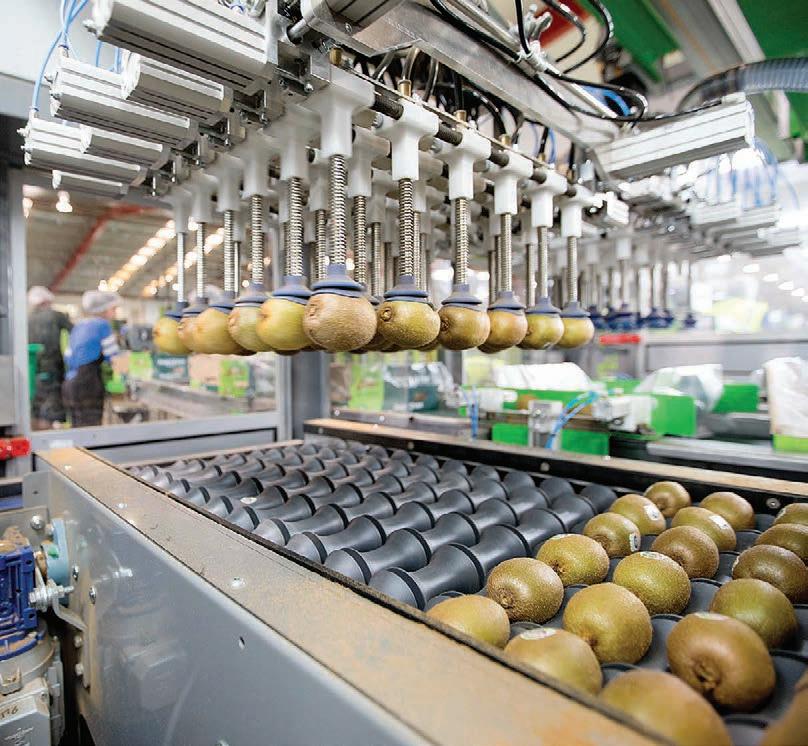
BENEFITS: The kiwifruit industry will see $43 million worth of tari savings this year from the trade deal with the European Union.
Staff reporter NEWS Business
CORNERSTONE shareholder Agria (Singapore) has advised the board of PGG Wrightson it has withdrawn its notice of a special shareholders meeting to consider proposed changes of directors.
The board has welcomed the development and dropped its preparations for the special meeting.
“Agria and the board have determined that the current
composition and the majority of the membership of the board continue to have an appropriate balance of expertise, skills, and independence.”
Agria principal and former PGW chair Alan Lai had sought to replace a majority of the directors with Agria nominees, himself included.
As it stands, the board is now chaired by Garry Moore, along with Sarah Brown and Charlotte Severne, and two Agria nominees, Meng Foon and U Kean Seng, reflecting Agria’s 44% shareholding.



Ballance Farm Environment Awards Regional Supreme winners, the de Jongs, are continuing to lead the way with their sustainable growing and soil health management.
We’re excited to see the de Jongs feature in an episode of this season’s A New Zealand Food Story on TVNZ1, where they chat to Ben Bayly about sustainability methods they’re using on their orchard. “We are continually looking at new technologies and things that we can improve to have an even smaller footprint on this planet.” – Talbert de Jong.
Scan the QR code to watch the de Jong’s episode on A New Zealand Food Story.




 Ben Bayly and Talbert de Jong
Ben Bayly and Talbert de Jong

 Annette Scott NEWS Arable
Annette Scott NEWS Arable
CROPPING farmers are steering towards dairy as they look for improved winter grazing profitability this season.
Poor lamb returns and a reduction in contracts for ryegrass seed crops is driving some Canterbury mixed cropping and livestock farmers to reduce lamb finishing numbers in favour of dairy grazing.
This was the key message from a panel of four Mid Canterbury mixed arable farmers when outlining their drivers for profitability at a combined Foundation for Arable Research (FAR) and Beef + Lamb New Zealand winter grazing seminar at Rakaia.
Methven farmer John McCaw told the seminar his arable farm is focused on cocksfoot and ryegrass seed production as well as growing vegetable seeds and cereals.
McCaw would normally trade 4000 to 5000 lambs a year, but these numbers will be back this year.
“We buy lambs based on our ryegrass seed crop area for the following spring, at 35 lambs a hectare.”
Lambs are bought in autumn, after harvest, and initially graze autumn-sown cocksfoot before being wintered on greenfeed oats, rape and fodder beet.
In early spring, lambs are used to graze ryegrass paddocks before these are shut up for seed production.
“Every paddock on the farm, apart from two last year, had stock across them, so we are an arable farm, but we are very much a mixed farm.
“We find the system works well for income generation as well as crop management, particularly the cocksfoot in the autumn and the ryegrass control in the spring.”
For dairy grazing, the farm has
had an arrangement with the same dairy farmer for 15 years with up to 300 heifer calves arriving preChristmas and staying until they are 18-month-old in-calf heifers and ready to return to the dairy farm.
The farming system also wintergrazes up to 750 dairy cows.
Methven farmer George Lilley said in the past couple of years lamb numbers on farm have dropped by 1500 to 2500-3000, while dairy cow numbers have lifted from 400 to 600.
This is largely for profitability and to reduce the risk of holding so many lambs.
The farm is largely ryegrass based, with wheat, barley and break-crops in a four-year rotation.
As there are fewer contracts for grass seed I will be reducing lamb numbers to match.
Simon Lochhead Rakaia farmerWhile the return per kilogram of drymatter is better with dairy grazing, Lilley said this needs to be balanced against the damage the dairy stock can do to paddocks and the potential difficulty in establishing crops in these paddocks the following spring.
Simon Lochhead runs a mainly no-till farming operation at Rakaia, where he aims to limit soil damage and in recent years has been exclusively lamb grazing.
However, the farm has historically done dairy grazing, and cows will be returning this year to improve profitability and to diversify and spread risk.
Lamb numbers are purchased to suit the grass seed area.
“As there are fewer contracts for grass seed I will be reducing lamb numbers to match.”
The leaving date for the last lambs is determined by the closing
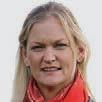 Suz Bremner MARKETS Livestock
Suz Bremner MARKETS Livestock
CATTLE-selling action returned to the Wairoa saleyards on Monday March 25, as enough calves could be mustered up from some very well-known stations to warrant opening the yard gates.
Even though the calves were not sold on a weight basis, their reputation always precedes them, and annual buyers returned to add the next generation to their farming systems.
Many of those buyers were local, but the wider Hawke’s Bay also competed.
This year just over 1200 calves were offered, of which nearly 90% were steers. It was easy to spot the reds among the sea of black and black-white lines that represent the mainly Angus, and AngusHereford, fair.
date of new season grass with the last load having to go then, irrespective of whether it is fully finished or not.
Lepoutre-Kroef farm arable manager Lachlan Angland said that its system is arable and vegetable production with grazing used for seed crop establishment and grazing cover crops during winter.
They only use lambs and occasionally the neighbour’s hoggets and ewes.
FAR senior environment researcher Abie Horrocks told the seminar that New Zealand arable growers have some of the most diverse crop rotations in the world.
In comparison to arable soils overseas, the degree of livestock integration means arable soils are in better condition because rotations that include livestock can support inclusion of restorative crops, such as ryegrass, that build soil organic matter.
In addition to soil quality, nutrient cycling and cashflow, there are other reasons why arable growers have livestock.
These include weed control, natural tillering managing height and bulk of grass seed crops, crop residue management and rotation fit.
As new environmental and greenhouse gas emissions regulations come on-stream, Horrocks said regulators need to be well-informed of the role livestock plays in an arable farming system.
“If soil quality declines, more fertiliser and irrigation may be required.
“Removing livestock from mixed rotations may have an unintended consequence of increasing pesticide use and if weeds become more problematic as a result it could introduce a risk to the production of weed and diseasefree pure seed lines.
“Quality seed lines are the ultimate driver in an arable business,” Horrocks said.
sold to expectations without being anything crazy.”
Values were very much in line with recent North Island fair results as the top Angus and Angus-Hereford steers made $900$1090 with straight Angus taking the top spot. Most other steers sold for $790-$885 and a smaller yarding of traditional heifers made $650-$760.
The top pens sold to expectations without being anything crazy.
Jamie Hayward PGG WrightsonGrowth in this region has been good this season and without a cyclone to wreak havoc the journey to sale point has been a satisfying one for vendors as the calves have done well.
PGG Wrightson regional livestock manager Jamie Hayward said the fair “ticked along well. There was a good line-up of calves and they looked well. The top pens
Buyers were able to continue their journey north for more weaner fairs as the week progressed, as Matawhero sold around 1600 steers, 130 bulls and 1000 heifer calves over Tuesday and Wednesday. These calves were very similar to those sold at Wairoa and also proved to be highly sought after.
MORE:
For more market insights, browse the range of AgriHQ’s livestock reports. Tailor a subscription to suit your needs at www.agrihq.co.nz/livestock-reports
NEWLY published research among consumers in Australia and the United States reveals interest in them improving their wellbeing through eating red meat.
Undertaken by AgResearch and Meat & Livestock Australia, the research highlights opportunities to achieve a premium for products with proven health benefits, AgResearch senior scientist Carolina Realini said.
“We know that red meat producers in New Zealand are currently facing significant challenges and are actively looking for opportunities for better prospects in the future,” she said.
The research suggests “a promising opportunity for producers to develop tailored products to align with consumers’ wellness preferences, individual needs, and various life stages; and clearly communicate the benefits of these tailored offerings to consumers”.
The US and Australia play crucial roles in the domestic and global red meat market, serving as major producers and exporters of red meat, and having substantial red meat consumption per capita.
More than 90% of survey participants across the two countries indicated interest in purchasing red meat to improve their wellness status, while about
85% indicated their willingness to pay more for red meat for potential wellness benefits.
Realini said specific interests differed between the two countries.
“American respondents showed greater interest in improving cognitive function and mood through the consumption of red meat, whereas Australians emphasised joint and gut health.”
The research was based on online surveys conducted in the United States and Australia in 2019.
Realini said the nutritional benefit of red meat such as beef and lamb is well documented in previous research.
The high-quality protein, vitamins and minerals from red meat are known to be vital to good health throughout life, and linked to brain function and mood.
However, “we still have some way to go to be able to provide compelling and specific evidence of physical and mental wellness benefits from red meat consumption”.
“As researchers, the onus is on us to provide the trusted, robust scientific evidence that supports the recommended levels of red meat consumption as beneficial for wellness.
“Such evidence is crucial to enable the red meat industry to make health claims about their products with confidence, while policymakers are encouraged to promote healthier food choices.”
 Neal Wallace NEWS Education
Neal Wallace NEWS Education
MShelley Turner, the Deputy ViceChancellor of University Services, said it expects to report a $30 million deficit this year but will financially break even in 2026 and part of that financial turnaround will come from “strategically” managing property across its three campuses.
Any sale of land or buildings will follow a divestment process, which is expected to begin later this year and continue for two or three years.
Turner said the university has a divestment schedule on which land and buildings are added or removed depending on the needs of the university or opportunities that are presented.
“The schedule identifies land

and buildings that have been deemed surplus to requirements, for example, buildings or land that are currently not being used by staff or students for educationrelated purposes.
“Massey Farms consist of over 2000ha in total, and the farmland identified on the divestment schedule is around 25ha, so just over 1%.”
Any part of a university farm has to be determined as surplus before it can be sold, and its sale must provide a beneficial commercial outcome for the university.
“This will not adversely impact farm operations, student training or research,” said Turner.
The university has significant land and property holdings and no debt.
“This is a strong position to be in, compared to other NZ universities, but initial investigations suggest we could reduce our physical footprint, while maintaining our current operations.”
Owning buildings incurs significant overhead expenses.
“Through the university undertaking spatial needs





SCHEDULE: Massey University has a divestment schedule where land and buildings are added or removed depending on the needs of the university or opportunities that are presented.
Massey Farms consist of over 2000ha in total, and the farmland identified on the divestment schedule is around 25ha so just over 1%.
Shelley Turner Massey Universityanalysis and reducing our physical footprint by up to 50% over coming years, we can significantly reduce our operating expenditure,” she said.
It can do this by consolidating teams into existing buildings that are fit for purpose, selling or leasing land and buildings that are currently not being used, or subleasing buildings to commercial entities for dual use, which it is already doing.
“The university will continue to consolidate our operations, and therefore the space it needs to operate. When space is deemed to be surplus it will be assessed to determine its most appropriate future use.
“It’s expected this work will continue for the next two to three years.”
A LAKE Tekapo farmer who failed to register 295 deer with the National Animal Identification and Tracing scheme has been fined $13,750.
Under the system all cattle and deer must be fitted with a NAIT tag and registered in the NAIT system by the time the animal is 180 days old, or before it is moved off the farm.
John Wheeler, 60, was sentenced in the Timaru District Court on four charges under the NAIT Act.
NAIT records showed the 295 deer had been tagged but remained unregistered between May 2021 and June 2022.
In November 2021, Wheeler was educated by an MPI NAIT officer on his obligations and how to meet them, but records show no animals were registered after that meeting, even though Wheeler confirmed he knew what to do for his NAIT animals.




















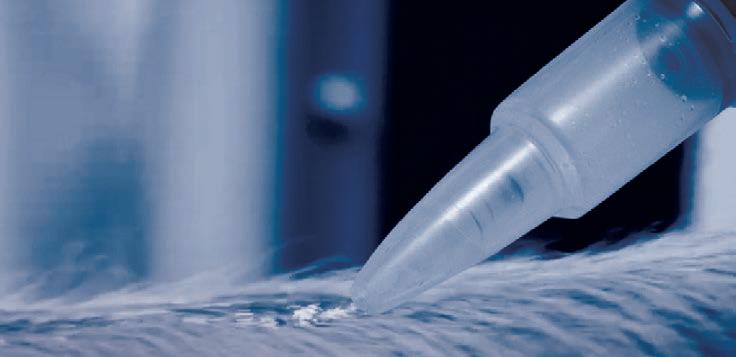






























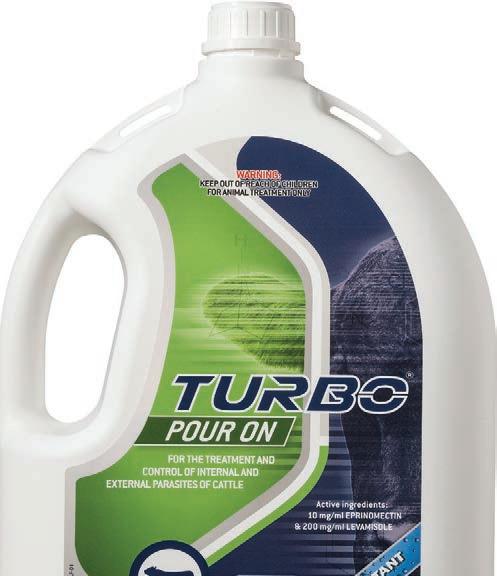














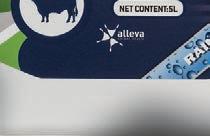





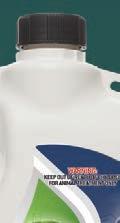




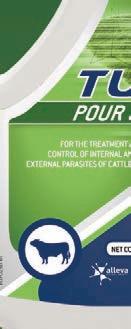



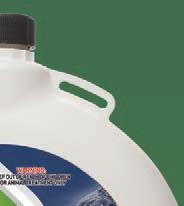







NEW Zealand is not immune to geopolitical shocks and the dairy industry needs to establish how it will manage unpredictable disruptions in future, says economist Shamubeel Eaqub.
Speaking at the DairyNZ People Expo in Invercargill, Eaqub said an example of an unpredictable shock was the sharp increase in shipping costs during the pandemic.
“No one could predict costs would jump from a $2000 mark to $10,000 during the pandemic, but it did,” he said.
Tensions in the South China Sea, for example, are also something to keep an eye on.
“It really matters for you [farmers and industry]. What’s the most important fuel on farm? Diesel. How many weeks of diesel do we have on land in New Zealand? One. Where do we keep our inventory? On boats.
“What do you think will happen if there’s war in the South China Sea? New Zealand is the last stop [on a shipping route], we’re not going to get diesel first,” Eaqub said.
“We are not disconnected from geopolitics. It can have very direct implications for how we do business and the ability to run the economy.”
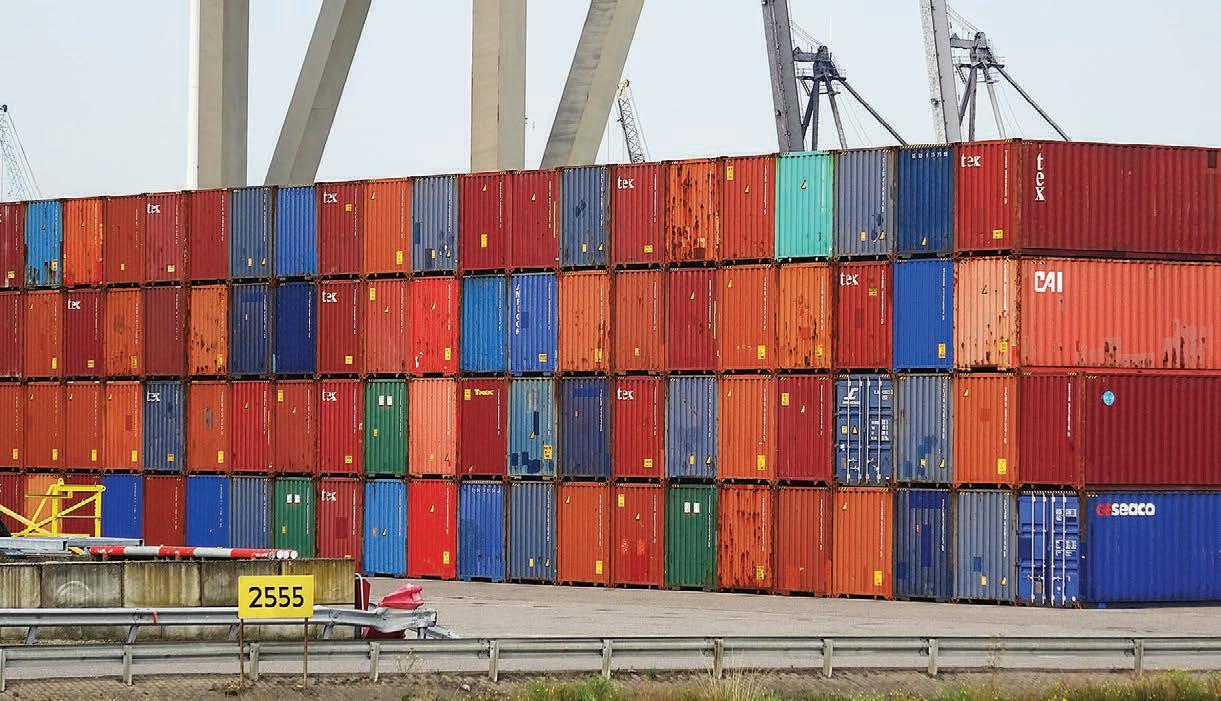
NZ perversely benefitted from the pandemic and even the invasion of Ukraine, as commodity prices were high.
However, commodity prices are now lower but the price of fuel, fertiliser and labour is still high, Eaqub said.
Many of the risks are not immediate but the industry has to have preparation plans in mind.
The dairy industry’s growth and growth in China go hand in hand, but there are limits to growth, he said.
“That insatiable demand that
was coming from China has stopped.”
There are risks to not understanding what’s happening with our end consumers, he said.
Eaqub said insurance costs will be unpredictable in future, especially if natural disasters became more common.
The amount of insurance claims paid out in the past 12 months were unprecedented when compared to the previous 20 years. Insurance companies are in business to make money and have to transfer their risks to others.
“In New Zealand insurance premiums are roughly 40% cheaper than in Australia, I don’t think it’s going to be like that for much longer. Australia has experienced a lot more natural disasters in the last 20 years, they’re much further down the track of insurance.
“The more of these events happen, the less available and more expensive insurance will be.
“We can’t always transfer risk to somebody else, we have to think about what we can do in our businesses and on our farms

THE labour shortages farmers face today are going to become fundamentally worse in future, according to economist Shamubeel Eaqub.
Speaking at the DairyNZ People Expo in Invercargill, Eaqub said New Zealand’s demographics make this statement an everpresent reality.
“The biggest exports from provinces are young people. It’s not milk, it’s not dairy. We export young people like there’s no tomorrow. We are ageing really fast in the provinces,” he said.
Every advanced economy around the world faces the same labour problem, he said.
“We want the same workers wanted in the UK, wanted in Europe, wanted in Canada and America. Everyone is facing the same demographic aging we’re facing.”
Eaqub said NZ has a “weird political relationship with immigration” and that it goes from “feast to famine” very quickly, with one cohort in the country not able to live without migrants and another saying there are too many.
The country needs politicians to create stable immigration policies, he said.
Over the past year the net migration has been to urban
centres, where infrastructure often cannot cope with the sheer numbers of migrants, but employers in provinces, such as farmers, need labour.
This contrast creates very difficult political conversations, he said.
The biggest exports from provinces are young people. It’s not milk, it’s not dairy. We export young people like there’s no tomorrow.
Eaqub said the dairy industry employs about 40,000 people, with about 4000 leaving the industry every year, often because the work is seasonal.
More people leave the industry than enter it, he said.
“When you’re turning over 10% of your workforce every single year, what do you think it does to your retention and recruitment costs?” The number of workers per cow and per hectare has been trending down, he said.
This not only means farms have to be run more efficiently, but also that workers are working much harder.
Finding quality staff is not easy

In New Zealand insurance premiums are roughly 40% cheaper than in Australia, I don’t think it’s going to be like that for much longer.
Shamubeel Eaqub Economistto adapt. Insurance retreat will come,” Eaqub said.
“One important lesson out of Canterbury is that when a natural disaster strikes, New Zealand is very good at bailing people out for the first year, the second year we are still kind, the third year we’re like ‘bugger off, you’ve had enough’.”
“Every time there’s a natural disaster, we rely on the rest of New Zealanders to bail us out. It’ll probably happen once, twice, three times.
“But given where our debt is, we probably have three more natural disasters before the public [and government] would not step in,” he said.
“If insurance has retreated and the backstop of the public has retreated, what’s going to happen?
“Regardless of the structure of government, the reality is that we are stuck at a level where we probably have run out of headroom [to cope with shocks],” he said.
and farmers will have to invest in recruitment and training, he said.
To retain labour, farmers could manage the culture and leadership on farms, which would have an impact on labour and retention.
“We have to hold up the mirror and go, ‘What can I do that’s going to give me the ability to recruit and retain people?’”
Eaqub said the best and brightest labourers often leave first as they are in demand.
“Recruitment is expensive, training is expensive, and when you lose people that disruption is expensive. It’s a triple whammy of expensive every time you lose a person. You’ve got to put money into retention,” he said.
Recent surveys have shown that salary is not the main driver for retention, but that people want responsibility, fulfilment and purpose.
Farmers have to ask what they can do to make that possible, he said.
Also speaking at the People Expo, Waikato dairy farmer Sue Fish, from Westmorland Estate Limited, said to retain staff they try to give them a sense of ownership in the business.
The estate milks over 1000 cows across three farms.
For example, staff decide what behaviour is acceptable and unacceptable on the farm and are on equal footing with managers.
Unacceptable behaviour is

NOT WORKING: Economist Shamubeel Eaqub says labour shortages will only get worse in the foreseeable future and farmers need to ask themselves what they can do to retain workers.
simply called “below the line”, and if someone acts in such a fashion a manager is simply told that there is below the line behaviour. This manner of speaking removes the emotion from the situation.
Staff also compete in a friendly employee-of-the-month competition, and participate in social outings, such as river rafting, to get to know each other outside the work environment, she said.
There are opportunities for personal and career development, and a clear work-life balance with work after 5pm a rarity, Fish said.
 Neal Wallace MARKETS Trade
Neal Wallace MARKETS Trade
Tmore technology-based economy.
Low consumer confidence in what is NZ’s key export market, has dramatically slashed returns for NZ exporters, especially for sheepmeat.
Crozier said one consumer stimulation policy to emerge
from the Chinese congress was a small increase in social security payments to pensioners.
“It’s not that they haven’t done anything, it just not something dramatic like a bazooka stimulus to artificially boost the economy,” he said.
Instead, it wants to grow the economy by adopting new technology, including in manufacturing, and digitisation.
Some of this is driven by necessity as Western nations have restricted China’s access to hi-tech products.
Crozier said it appears the government will allow the struggling Chinese housing market and soaring local government debt, which has weighed heavily on consumer sentiment, to largely resolve itself without government stimulus. Previously it would have responded to help a sector like property to adjust.
Crozier said little emerged from the congress that would indicate when consumer confidence may return and China’s consumers start spending again.

“Chinese consumers are not broke. They have kept on saving and are waiting to see what will happen next.
“If the Chinese government stays the course – and it will require nerve – ultimately the economy will be stronger and provide a more sustainable basis for economic prosperity.”
Crozier said the Chinese government needs the mandate of its people and listens to consumer sentiment.
It also has tools and levers it can pull if it senses consumer disquiet.
He described the Chinese market as subdued “but certainly not
dead”, and noted it emerged from covid a year after most other nations.
Last year the value of NZ exports to China fell 9% but were still worth $18.4 billion, representing 27% of our global exports – twice that of any other market.
Last month Zespri sent its first kiwifruit shipment of the season to China, and Crozier said there is optimism it will be well received by consumers. Increasingly tier three and four cities in China, which have smaller populations, are seeking high value imported products.
These cities have populations of millions of people and that
growth potential is linked to expanding e-commerce and growing global awareness of alternative products.
He said the current rebalancing of the Chinese economy highlights the need for exporters to adopt a China-and instead of a China-or approach, to ensure they are not overly reliant on the market.
“For a number of sectors China is their top export market so it is sensible to look for new markets.”
However, establishing supply channels including meeting regulatory requirements is a complicated process, so diverting product to alternative markets such as India will take time.









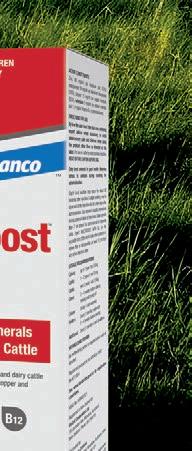



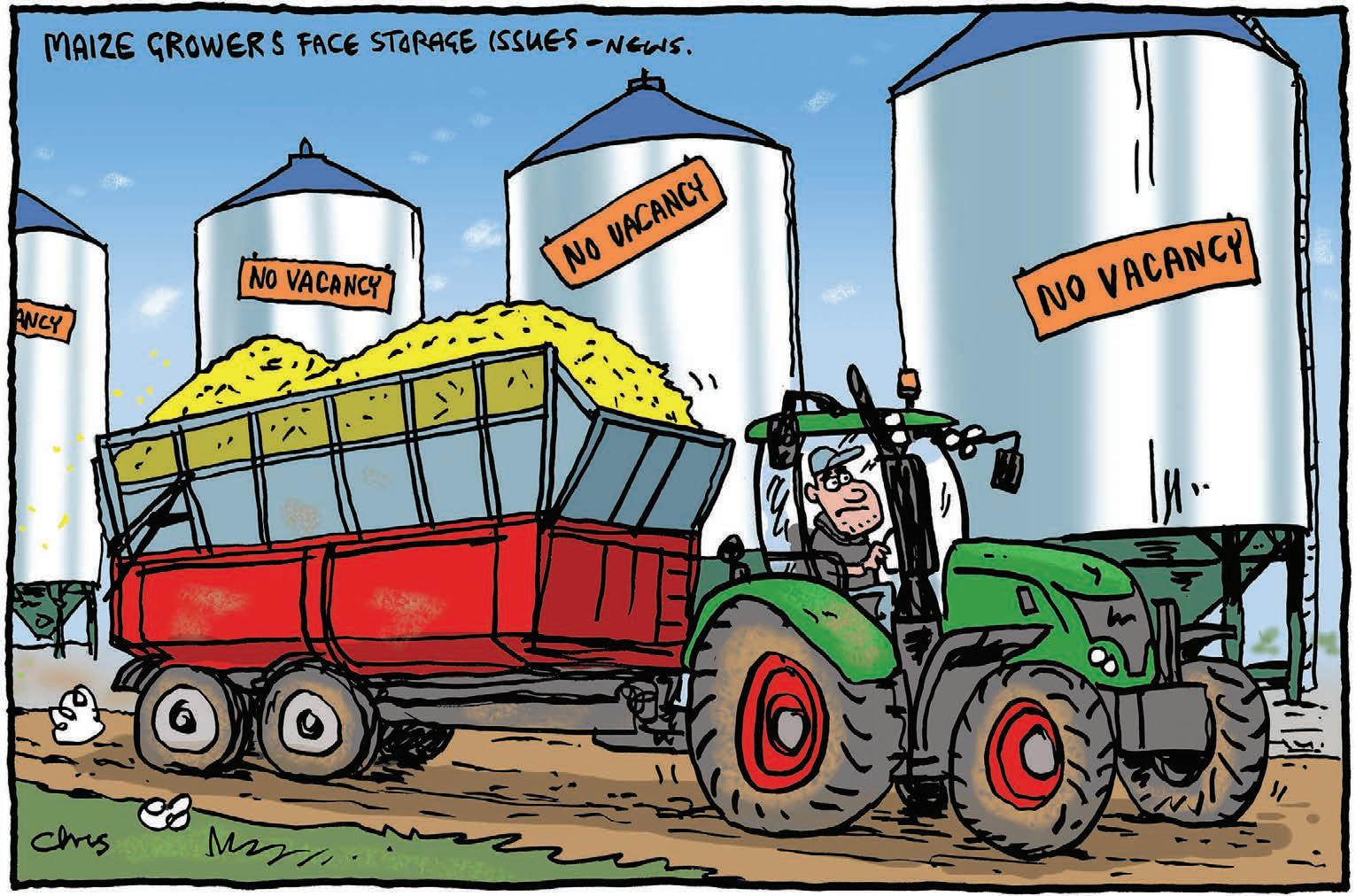
 Neal Wallace Senior reporter
Neal Wallace Senior reporter
FOR decades meat industry politics was as bloody as the process of dissecting animal carcases.
Fortunately, for the last 10 years that has not been the case.
In the past year the chief executives and chairs at our two largest meat companies have retired or are about to – Simon Limmer (CEO) and Rob Hewett (chair) at Silver Fern Farms, and David Surveyor (CEO) and Murray Taggart (chair) at Alliance.
They have been replaced by, respectively, Dan Boulton and Anna Nelson at SFF and Willie Wiese and Mark Wynne at Alliance.
A feature of those appointments and also of their replacements, is that they have all spent most of their careers outside the meat industry, which brings a different approach to business and not the inherent competitiveness that was a feature of the 1980s, ’90s and early 2000s.
Back then turf protection, securing livestock and not giving a competitor a half chance was a priority of management.
This was driven by the need to keep their multi-chain processing plants, designed to
handle the burgeoning sheep numbers of the 1970s and early 1980s, full and running efficiently.
Empty hooks are costly.
Little love was lost among senior managers of either co-operative, fuelled in part by an inherent rivalry prevalent among the co-operatives, Alliance and PPCS (now Silver Fern Farms).
Other players were not immune.
Fortunately that era has passed, partly due to economics but also reality.
Weighed down by $387 million of debt, in 2013 Silver Fern Farms recorded a $46m loss, prompting banks to impose strict covenants. Three years later a partnership agreement was reached with Shanghai Maling.
Alliance didn’t have the same scale of financial challenges but neither was it awash with profits.
Another factor was the appointment of senior managers and directors from outside the meat industry: Dean Hamilton for Silver Fern Farms in 2014 and David Surveyor at Alliance in 2015.
Equally, the two chairs, Murray Taggart at Alliance and Rob Hewett at SFF, were focused on the business, not industry politics.
The two companies are still fiercely competitive but gone is the hostility that soaked up management time and energy and derailed the many attempts to get them to merge.
The focus of the two companies shifted to what was needed: efficiency and adding value to farmer returns.
It was a largely unheralded moment in
the sector’s history and a change welcomed by farmers.
As Taggart notes in this week’s story in his retirement from the Alliance board, it is a tough industry with narrow margins and large capital requirements.
Improving returns needs the total focus of managers and directors and he used the example of new health and wellbeing products and Alliance pursuing India as a developing sheepmeat market.
The co-operative has been developing markets in India through its shareholding in QualityNZ, which it owns with New Zealand cricketers Sir Richard Hadlee, Stephen Fleming, Daniel Vettori and Brendon McCullum.
As the government seeks to secure a free trade agreement with India, Taggart says access is possible for sheepmeat but a comprehensive agreement that includes dairy makes it more difficult.
Alliance diversified into India to avoid overexposure to China and he is optimistic about its potential.
The government should listen to Taggart and Alliance as it considers how to develop trade with the world’s most populous country.
SFF is pursuing its own strategy, which includes targeting net high worth consumers with meat that is verified as net carbon zero or what it calls nature-positive.
Global consumers are demanding more accountability from food producers and if we are to reverse the current low sheepmeat prices, we need companies to be totally focused on finding the best-paying markets.
THANK you, David Eade for a fascinating discussion in Farmers Weekly, “A reserve bank for the environment” (March 18).
Once I got my old brain around the idea I began thinking about the mechanism. I can foresee difficulties in pricing – I’m not quite sure how that happens – but I’m sure as long as it is quite clear that there are no exceptions these are not insurmountable.
Meantime there is at least a wellestablished methodology for assessing GHG emissions.
Just as the Reserve Bank is charged with maintaining financial stability so could a reserve bank for the environment (RBE) be charged with maintaining biological and environmental stability on our little corner of Planet Earth.
As things stand most of our energy in and around the political and economic framework ignores the future of a livable planet. It promotes and justifies our existing plan of endless growth and ever greater consumption, and passing those costs on to our grandchildren.
Unfortunately we appear unable to view these issues beyond our own short-term expectations. These are pandered to by aspiring politicians and political parties and we buy into them.
They are fostered too – shamefully – by an economics profession that now works very largely for big banks and big business and advocates ever more of the same thing that now threatens the future of humanity.
Around the world – as David says – there is a trajectory of change on these issues, desperately slow but at least in the right direction. It is too often a question of two steps forward and one back.




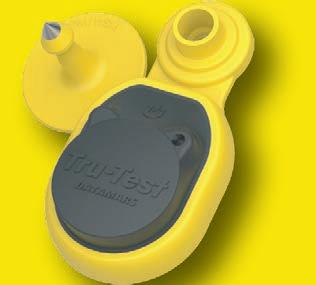


In my view ... Is our dairy
IN DAIRY farming, herd fertility reigns supreme. It’s the lifeblood of a successful operation, directly impacting genetic gain and farmer profitability, and reducing environmental impact by breeding cows that last longer in the herd.
Yet, despite the plethora of advances in reproductive technologies and management practices, the national average six-week in-calf rate has stagnated at around 66% for the past seven years, according to New Zealand Dairy Statistics 2022/23.
Fonterra’s commitment to reducing greenhouse gas emissions and protecting international market access has put the spotlight back on reproductive performance.
The key to achieving the 30% emissions reduction by 2030 is moving the dial as quickly as possible towards our industry target of a 78% six-week in-calf rate.
Doing so will result in more days in milk and increased per cow production, while reducing the GHG emissions per kgMS. It reinforces the urgency of our situation and reminds us that complacency is not an option.
This season’s pregnancy scanning results are in. The NZ Society of Dairy Cattle Veterinarians has reported a 4% increase in the six-week in-calf rate this season in the North Waikato region and a 2% decrease in the not-in-calf rate.
With repro results across the country looking more favourable, dairy farmers have reason to celebrate.
Or do they? Let’s not mistake
Continued from previous page
Here in New Zealand we have had 30 years to painfully scratch away at the issues around the future of humanity and Planet Earth. Sadly we now have a government determined to turn the clock back.
David calls for an environmental “lever” to be charged with pricing GHG emissions and with controlling “environmental inflation – too much production coming from too few natural resources”.
There are two issues to be faced before we get an RBE with a model and mandate similar to the Reserve Bank.
First the time frame. The Reserve
progress for success. We cannot afford to rest on our laurels when the trajectory of our national herd fertility remains disappointingly flat.
One solution that is already available to dairy farmers for enhancing fertility is sexed semen, frozen or fresh. Published international research on pasturebased operations shows that there is no significant difference between the performance of both options available to farmers. At the end of the day, that gives farmers more choice.
For herds with good fertility management, using sexed semen from the best sires in the highest genetic merit cows is the best and fastest way to lift herd performance and get replacement heifers from your best cows.
From heat detection aids to tailored nutrition plans, we must empower farmers to make informed decisions.
“Good fertility management” is the operative phrase here. The success of sexed semen is hugely dependent on managing all the variables well, including semen quality, herd nutrition, body condition at calving and mating, heat detection, identifying your best cows and AB.
It’s a balancing act but failing to get all your ducks in a row won’t yield the best return on your sexed semen investment.
The high cost of sexed semen has historically posed significant barriers to widespread adoption. Farmers rightly demand value for their investment.
The onus falls on us, as providers, to make quality sexed semen more accessible and cost-
Bank’s inflation mandate offers a much shorter feedback loop. Those who benefit from an overspend will also pay the price of interest rate measures designed to curb excessive consumption.
An RBE would expect today’s consumers and voters – with their addiction to consumption and growth – to curb their demands for the sake of their grandchildren and Planet Earth. A hard ask when so many are perfectly relaxed about passing their costs forward.
And then there are the consequences. The consequences of failure to live within our planetary resource base carries forward not just passing failure and pain in the financial markets but catastrophic and existential risks for our descendants.
David offers a positive contribution to the situation we face. I hope his proposition gets the interest and mileage it deserves.
effective at a time when farmers need to chase better replacement heifers.
By offering tailored packages and providing comprehensive support, we can help farmers leverage this valuable tool effectively.
The discussion needs to stretch beyond cow fertility – the bull also has a significant part to play. There are two fertility aspects to consider – the bull’s fertility breeding value and semen fertility. These are not the same thing.
We need to make sure farmers have access to the right advice and expertise to help them make informed decisions.
If we want to lift our fertility game, we also need to take learnings from conventional and sexed options that are available offshore. Heterospermic products (three sires in one straw) is a solution that has been successfully used overseas to increase conception rates.
It’s a bit like a running race, with different competitors moving at different speeds. This increases the viable lifetime of the semen inside the cow and delivers more pregnancies as a result.
Education is another challenge in our quest for improved fertility. Many farmers have dabbled in reproductive technologies but not seen the desired result due to inadequate knowledge and support.
Working alongside their trusted on-farm advisers, we need to equip them with the skills and resources to optimise their herd’s reproductive performance.
From heat detection aids to tailored nutrition plans, we must empower farmers to make informed decisions that yield tangible results. Maximising value from data will also be crucial for benchmarking performance
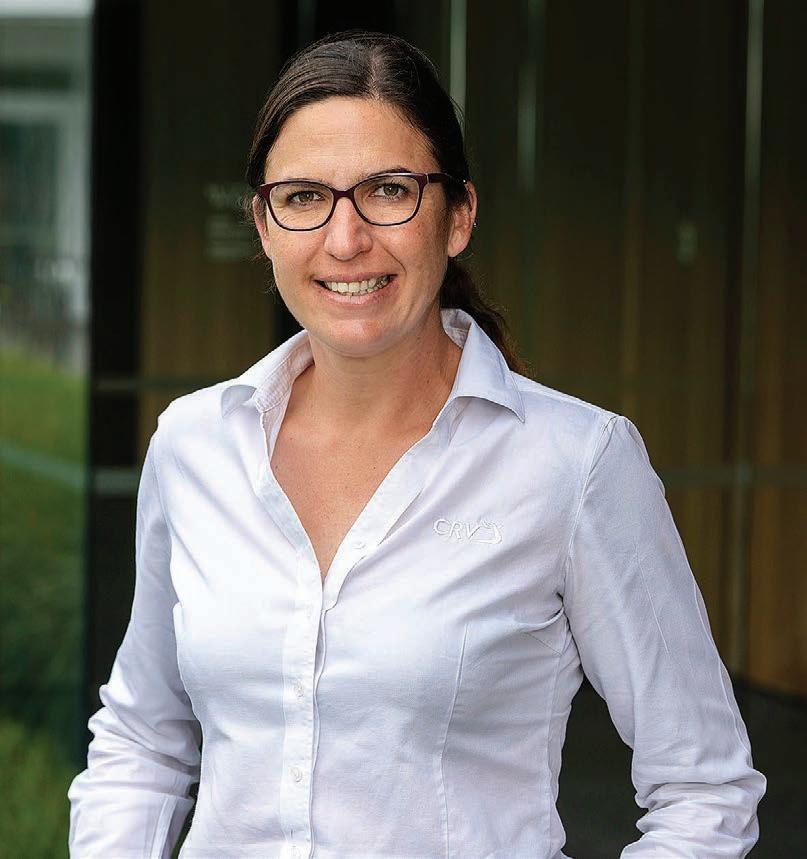
FLATLINE: We cannot afford to rest on our laurels when the trajectory of our national herd fertility remains disappointingly flat, says Julia Baynes.
and identifying areas for improvement.
Our fixation on empty rates as a measure of reproductive performance also needs to change. We need to shift our focus to the six-week in-calf rate as the true measure of success.
This shift reflects a deeper understanding of profitability and productivity within the dairy industry. It’s not merely about reducing culls; it’s about maximising milk production and breeding choices through timely conception.
At its core, averting a herd fertility crisis lies in proactive herd management practices. From meticulous dry-off plans to targeted nutrition strategies, every decision today shapes tomorrow’s reproductive outcomes.
But it shouldn’t all rest of farmers’ shoulders. We need to work together as a wider industry to support farmers and take collective action. If we managed dairy cows like we do beef cows in NZ and they were properly conditioned, our reproductive stats would look a whole lot better than they do now.
Pasture covers across most regions are thriving, and with favourable weather conditions, there couldn’t be a better opportunity to set the stage for next season’s reproductive success.
But this success will depend on decisions made now. Make sure cows head into mating in peak condition to maximise their fertility potential.
However, it’s crucial not to overextend the herd just because of the surplus feed available. The repercussions will only hinder our progress. And that is not an option.
Got a view on some aspect of farming you would like to get across? We offer readers the chance to have their say. Contact us and have yours.
farmers.weekly@agrihq.co.nz
Phone 06 323 1519

Do you know someone who deserves a story in Farmers Weekly? Why not write it yourself?
We’re keen to hear local stories about the innovators, inspirations and characters that keep our communities ticking over.
Farmers tell the best stories and we want to hear yours. yourstory@agrihq.co.nz
 Alan Emerson Semi-retired Wairarapa farmer and businessman: dath.emerson@gmail.com
Alan Emerson Semi-retired Wairarapa farmer and businessman: dath.emerson@gmail.com
IT IS with some cynicism that I’ve been following the great wetland debate. How wallto-wall wetlands will be our salvation, that they’re sacrosanct if they’re a real wetland or not. It is enough to say that if local government designates a wetland then that’s it, regardless of the facts
The Resource Management Act of 1991 defines a wetland thus: A wetland includes permanently or intermittently wet areas, shallow water and land water margins that support a natural eco-system of plants and animals that are adapted to wet conditions.
There are many different types of wetlands.
Greater Wellington Regional Council is effusive in its support of wetlands. They “form a critical interface between land and
water”, and, “they are crucial for the health of our environment and ecosystems, are of significant cultural importance for Māori”.
It goes on to add that they “help protect water quality”, which I will dispute.
They conclude by telling me that if I discover “a wet, soggy or spongy patch on your land, it could be a wetland”.
In winter over half our property could be defined as a wetland using the Greater Wellington description.
In fact on one occasion a Greater Wellington employee insisted there was a wetland where a truck had slid off a track in the middle of winter and had to be recovered.
The reality was it was a temporary mud hole, which would completely dry out come summer.
Environment Canterbury told me that “90% by area of wetland was lost in the last 150 years due to human impact”.
You’d hold your breath for that one: swamps were drained to provide fertile land that produces food and earns good money for the area. Just imagine where the country would be if we hadn’t drained the swamps.
It added that “wetlands remain a vital part of Canterbury’s ecosystem”.
In its fact sheet, the Ministry of the Environment tells me that wetlands stop further degradation of our water and enable water quality to improve within five years.
I’d dispute the claim.
A paper was presented to Grasslands headed The Benefits
and Costs of a Constructed Wetland on a Wairarapa Dairy Farm.
It was prepared by a representative of Greater Wellington, a NIWA scientist, Groundtruth Limited and a local dairy farmer, so Greater Wellington should be well informed.
The direct costs of the wetland were $55,000 with the opportunity cost of reduced grazing put at $1700 a year plus there was the possibility of losing $24,000 in capital value.
While N runoff decreased by around 40% assisted by oxidation, DRP arrived and departed the wetland at the same level.
E coli contamination increased markedly, going from an input to the wetland of 6 cfu/100 ml to releasing 700 cfu/100 ml into the environment.
Just imagine where the country would be if we hadn’t drained the swamps.
Wetlands encourage ducks and other highly polluting waterfowl.
As the authors noted, “wetland is not a silver bullet but could be part of an integrated farm plan”.
The debate becomes murkier with carbon sequestration.
Water NZ told me the humble wetland is “a carbon super-hero”, A recent cabinet paper prepared by NIWA recommended that the government incentivise carbon removal activities like restoring wetlands.

Greater Wellington wants carbon sinks such as wetlands to be included in the Emissions Trading Scheme.
Environment Canterbury rapturously announced that “wetlands store large amounts of carbon therefore are an essential ecosystem for reducing the impacts of climate change”.
There is another side to the debate, as Dr Jacqueline Rowarth recently pointed out.
Methane is naturally released from wetlands (marsh gas), but they also release carbon dioxide and nitrous oxide.
She said that “the balance of growth and decomposition of organic matter is what determined whether wetlands are a sink or source of greenhouse gases”.
The research, published in Nature Climate Change in March, suggested that warming temperatures are weakening the ability of wetlands to act as a carbon sink.
The authors said that under a global temperature increase of 1.5degC to 2degC the “100-year global warming potential of
wetlands” could rise by 57%. That’s massive.
Professor Rowarth summarised thus: “The fact that natural methane from wetlands is not being targeted with a tax in contrast to the natural methane from ruminants burping comes down to global politics.”
I totally agree.
My view on wetlands is that they have a place, but they aren’t the answer. They do not in any way deserve the massive accolade that regional government is bestowing on them.
Farmers do not deserve all the pressure from local government to develop or restore wetlands.
Finally, local government are not qualified to be missionaries for wetlands.
A simple example of that missionary zeal is that Greater Wellington spent millions of ratepayers’ money taking two of its ratepayers, a farmer and a property developer, to court over the supposed destruction of wetlands.
Interestingly, the court decided the council had it wrong. There was no wetland in the first place.
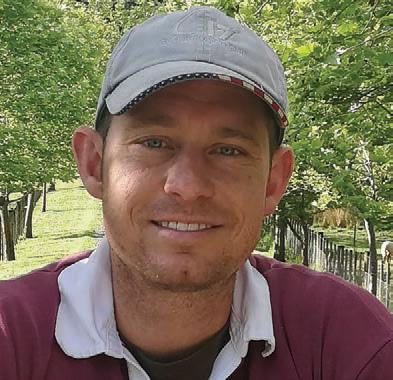
The story starts with Mum at Uni, coming home to family dinner and enlightening a fervently capitalist Grandad about the finer points of class warfare and the role of the petite bourgeoisie. The story ends with broken plates and a midnight drive back to uni. Amid all the talk of woke agendas and identity politics today, I find the story comforting. This is normal.
So normal, in fact, you could argue that history is even built on it. At its core, the human story is one of revolution and reaction. The spectrum of this endless yin and yang struggle is vast – from bloody political revolutions that sow continent-wide chaos, to social revolutions where the battlefield is a gender-neutral bathroom.
In this series, the lads go woke
MUM often tells the story of how she used to argue politics with her dad. It’s one of my favourites – because I also like to argue politics.
Through the big picture lens of history, woke isn’t new. It’s just a new name for the same old struggle. Twenty years ago we called it the nanny state and political correctness – with its talk of workplace safety, anti-smacking legislation and a vision for a smoke-free generation.
If the forces of reaction had the term “woke” at the time, I imagine it would have been applied to everything from the gay marriage debate to the anti-apartheid protests, the Māori renaissance
and resurgence movement of the 1970s-’90s, self-expression and counter-culture in the 1960s, the Suffragette movement and even the old-school social troublemakers who had the gall to
VIEWS: Generation Z (those born between the 1990s and 2010s) are now the largest generation in the history of our species. Generally, they’re okay with multiculturalism and gender diversity, says Daniel Eb.

disparage the king and suggest the people rule themselves.
While each of these chapters of history is different, the same underlying clash runs through them. The surging force of social change meeting the stationary force of the way things are.
This is normal. This is how societies feel change – one loud, angry clash between revolution and reaction at a time.
These days, this age-old clash is supercharged through the darker sides of the digital era – social media algorithms upweighting outrage, digital echo chambers and soundbite media being the main culprits.
This amplifies the extreme voices in each clash, lifting minor episodes from irrelevance into the cultural battlespace.
Case in point – 20 years ago, my single sex school switched to coed with zero controversy. A boy’s school in Sydney recently did the same and landed on the frontlines of the culture war with accusations of woke agendas and out-of-touch
Continued next page
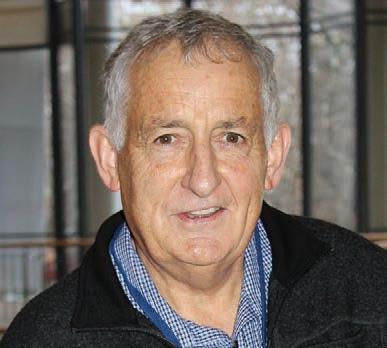 Keith Woodford MD at AgriFood Systems kbwoodford@gmail.com
Keith Woodford MD at AgriFood Systems kbwoodford@gmail.com
NEW Zealand’s economy is in trouble. It is not just inflation and the cost of living. It is something much more fundamental.
New Zealand has for a long time imported more than it exports. Ministry for Primary Industries data shows that 80% of the exports come from food and fibre industries. There is no easy solution to the problem of too many imports and too few exports.
We also have the problem that NZ is running big deficits on international services payments. This means that the income we receive from tourists, overseas students and interest payments from overseas is considerably less than what we currently pay out for international services.
The big ticket service expenditure items are our own international holidays, plus interest and dividend payments to overseas investors for all those previous investments they have made.
The overall foreign exchange balance on trade in the combined categories of goods and services is called the current account balance. If we earn more than what we spend then there is a surplus.
If we earn less than what we spend there is a current account deficit.
In NZ, we have tended to run current account deficits for many years. However, in the post-covid world those deficits have increased greatly, with the ratio of currentaccount deficit to national GDP now higher than any other country in the OECD.
In an open economy, any current account deficit has to be balanced by an equal inflow of overseas capital. For many years we achieved this by encouraging
Continued from previous page
mindsets flying across no-person’s land.
Other mundane episodes elevated to “woke” clashes include outrage at a United States military recruitment ad targeting young women with a message about social justice, Blackrock CEO and god of corporate capitalism Larry Fink giving the nod to environmental-social-governance investing, the Wiggles adding
overseas investors to send their funds to NZ.
To a large extent, that was to buy our manufacturing companies, develop our tourist industries, buy our retirement villages and also buy forests. We also encouraged foreigners to fund internal government deficits by the purchase of Treasury bonds.
The problem right now is that the current account deficits have become much bigger in the past four years, and are currently bouncing around from about $25 billion to over $30bn per annum.
Can we continue to suck in more and more capital to balance those deficits? How much of NZ’s future productive capacity will we ourselves own?
The answer is that something has to give. And that is why NZ’s medium- and long-term future is now grim. We have got ourselves into a pickle for which there is no painless answer.
Speaking in general terms, we have to export more and import less, but that is easier said than done. My own judgment is that in the medium term our NZ dollar must fall in value. That will make imports more expensive and exports more valuable.
As to when the dollar might fall, that is harder to estimate. Ironically, it will come when foreign investors get scared that it is going to happen. Then, by their actions of declining to invest in NZ, they will collectively make it happen.
It might be in six months or a year, or perhaps in two years. It may even take longer, but it will happen.
Now, I come to the issue of how kiwifruit enters into the story. The reason is that kiwifruit is one of the few export categories with significant potential to increase in scale. A focus on increased exports is the only way we can reduce the pain that lies ahead.
Right now, the 2024 kiwifruit harvest season is just beginning. In my household, the fruit bowl contains some of the new Zespri RubyRed variety. The flavour is good if the fruit is eaten at the right stage of softness. This is the third year of limited RubyRed sales, but at this stage they are less than 1% of total kiwifruit volume.
Within days, the SunGold kiwifruit should be in the local market with exports already underway. Then will come the new season Zespri Green.
The last two seasons have been very difficult for Zespri, which, with the exception of Australian
more racially diverse troupe members and the removal of the term “fieldwork” from some universities for its association with slavery.
When you’re only dealing in the extremes, it can all get ridiculous pretty quickly – and is best left ignored.
It seems that the two big woke issues are race and gender. These clashes can be harder to laugh off. The names we give our ministries (Māori or not), what age and how
destinations, has a global monopoly licence to export all NZ kiwifruit. In 2022 it was serious post-harvest quality issues, which led to fruit of unacceptable quality arriving in export markets. Then, the 2023 season was disrupted by a series of storms including Gabrielle just before and during harvest.
However, the future in coming years is promising. Zespri expects NZ production of kiwifruit to increase 50% by 2028. China has become the biggest growth market with 26% of sales being made there in the June 2023 year. This is likely to increase further. Japan is the second biggest market. Then come the European Union, Korea and the United States.
Most of the growth will be in the SunGold variety, but RubyRed could become increasingly important once Zespri develops experience in the logistics and storage requirements. This is because RubyRed requires different post-harvest management than either SunGold or green kiwifruit. There is more to learn.
become used to not eating kiwifruit for about five months. There is another key reason why continuous market supply of SunGold is essential. Greece and possibly other countries now have their own varieties of gold kiwifruit. Hence, a lack of SunGold from NZ in the northern autumn and winter creates space that others will start to fill.
Kiwifruit is one of the few export categories with significant potential to increase in scale.
Zespri has already sold nearly 5000 hectares of grower licences in France, Italy, Japan and Korea for growers there to produce SunGold, which Zespri will then market under the Zespri brand. Within a few years this will produce about 48 million trays of SunGold per annum but more will be needed.
The most controversial issue is what to do in China. Back in 2021, Zespri sought approval from NZ growers for SunGold kiwifruit

The production of the less profitable green varieties will further decrease as existing growers seek licences to convert across to SunGold.
The most challenging issue for Zespri to manage is provision of SunGold licences for northern hemisphere countries. This is needed to get a 12-month supply of Zespri product.
This is essential to maintain continuity of shelf space in supermarkets and avoid the need to crank-up consumer marketing each year, with consumers having
we teach kids about sex, how our museums integrate (or don’t) te ao Māori principles into their work and what kind of support we offer for gender-affirming care are controversial because they matter. I don’t have the word count to debate each of these in turn – so instead I offer a rule of thumb: demographics.
Generation Z (those born between the 1990s and 2010s) are now the largest generation in the history of our species. Generally,
international plant variety rights, meaning the growers currently have no legal right to grow or market the fruit.
The first challenge is that this has to be dealt with in the civil courts and not the criminal courts. So, it is not up to the Chinese government to prosecute these farmers, some of whom have very large-scale operations, probably bigger than those of any NZ grower. There are also some thousands of other growers with very small operations. It is up to Zespri to take the court cases across China.
Zespri is in the process of litigation, but even if Zespri wins, and it probably will, it does not have the resources to ensure follow-up across China. It would be much more feasible if Zespri had Chinese partners to keep nonlicensed competitors of scale at bay.
Rumour has it that Zespri will soon go again to its growers to obtain support for a China operation that should be a winwin for both sides, with the big Chinese growers already having the capacity to grow quality fruit and manage associated logistics.
If NZ fails to develop a local Chinese industry in partnership with the locals, then China always has the option of breeding its own gold kiwifruit from the native varieties that are already there. I am a little surprised this has not already happened. Perhaps it is happening but away from the glare of publicity.
One thing for sure is that China has all of the necessary breeding expertise to achieve this, just as NZ did.
Of course, kiwifruit alone is not going to solve the economic problems that NZ faces. Even if the kiwifruit industry doubled its export earnings, these earnings would only be 20% of the dairy industry export earnings.
licences to be sold to approved Chinese growers but just failed to get the necessary 75% support. That failure was a great pity.
Given that China is the largest market for SunGold, there is a need for off-season production in that country.
This is much more efficient than having to transport expensive product from Europe.
The problem is that China apparently already has over 8000ha of SunGold kiwifruit vines – whose growers have no licences for this variety. Zespri holds the
they’re okay with multiculturalism and gender diversity.
Just like the Boomers – who bent history’s long arc of justice towards female empowerment, racial tolerance and counterculture – numbers and time will turn today’s woke clashes into tomorrow’s so-whats.
No doubt new issues will rise to take their place. Maybe technological body implants, AI spouses or second lives lived virtually.
And those additional earnings would cover less than 10% of the current-account deficits we have been running in the most recent years. But we have to start somewhere.
Coming back to those greater problems, and with the NZ population growing rapidly – at the highest rate in the OECD –there has to be a much greater focus on exports.
What are some other export industries for which NZ can claim a comparative advantage and which have capacity to grow here in NZ? It is going to be a huge challenge.
If those turn into the social revolutions of tomorrow, sign me up for Team Reaction!
In short, it’s good that some of us feel uncomfortable about change. It means things are normal – that we are on standard operating procedure. Franky I would be more worried if we weren’t lurching from one woke clash to another –that would signal that we’re not changing as a society. Because things that don’t change, generally don’t last.
A Canterbury couple say the sector has given them everything – and they’re making a Co-operative Difference to it, too. Annette Scott reports.
CANTERBURY dairy farmers Kerry and Aimee Burt are proud to be at Te Tihi, the highest ranking under the Fonterra Co-operative Difference programme towards strengthening future dairy farming practices.
The young couple sharemilk over two properties in Canterbury, 580 cows on their 146 hectare home farm just out of Leeston, near Lincoln, and another 440 cows on a 129ha property at Lowcliffe, south of Ashburton.
They say if New Zealand didn’t have a strong dairy co-op like Fonterra they likely wouldn’t be dairy farmers.
“All the farms I have worked on have supplied Fonterra,” Kerry says.
“I have an enormous sense of pride in the co-op and what it stands for. It sets the benchmark for our industry and I wouldn’t be farming if it wasn’t for Fonterra and what it means for NZ farmers and NZ as a whole.
“Every time I see a tanker on the road or visit our local Farm Source store it brings a smile to my face.”
Says Aimee: “Kerry literally waves at every tanker driver on the road.”
Kerry grew up on a sheep and beef farm near Whakatane, but staying on wasn’t an option.
“Dad says he couldn’t pay me enough and there wasn’t an option of farm succession.
“He told me to do an automotive course to have a trade under my belt, even though I knew it wasn’t what I wanted to do. He asked me what I wanted, and I says I wanted to own a farm.”
Realising that dairying was the best pathway to achieve that goal, Kerry moved to the South Island in 2011 “with two pairs of gumboots, some overalls and a $5000 car”.
“I saw there was a true career path: if I put my head down and took in everything that I could, one day I will dig that fence post on my own land.”
Kerry started at the bottom rung, working as a farm assistant on a few different farms.
During that time he met Aimee, who was studying at Otago.
“During her uni holidays Aimee worked at a cafe where I used to buy my milk and lunch. It took me a bit to pluck up the courage to ask for her number so while buying my sixth bottle of milk for the week I finally asked her!”
A dairy farmer’s daughter, Aimee told everyone at age 15 that there was no way she would be a farmer and went on to gain a Bachelor in Fashion Design.
“Then I realised I was doing the wrong thing and that I was actually pretty passionate about farming and it came naturally to me. “I love the life that comes with farming, the options, the growth it
gives you and your family and the things we’ve learnt,” Aimee says.
The couple started contract milking on Aimee’s parents’ farm in Waimate, but the urge to progress remained and four years ago they moved into their sharemilking role on the Leeston farm.
One thing the couple highlights as crucial to their career in dairying is not being afraid to ask for help.
“We have learnt a lot, but we never pretend that we know everything,” Kerry says.
“We have an awesome relationship with our sustainable dairying adviser, Sean Spencer. He’s like a mate to us and he’s always on hand if we have any questions or issues we need advice on.
“I think calling on that help is something some farmers could do more of.
“Yes, compliance and regulation can be hard, but Fonterra has some excellent resources and people that can help ease that burden.
“We know that the requirements on us are for good reasons and Fonterra isn’t just putting things in place just to make our lives harder.
“Whether you are a farmer or the CEO, we are all part of the same team and we all want the same thing.
“It’s important that Fonterra is here to let us farmers do what we
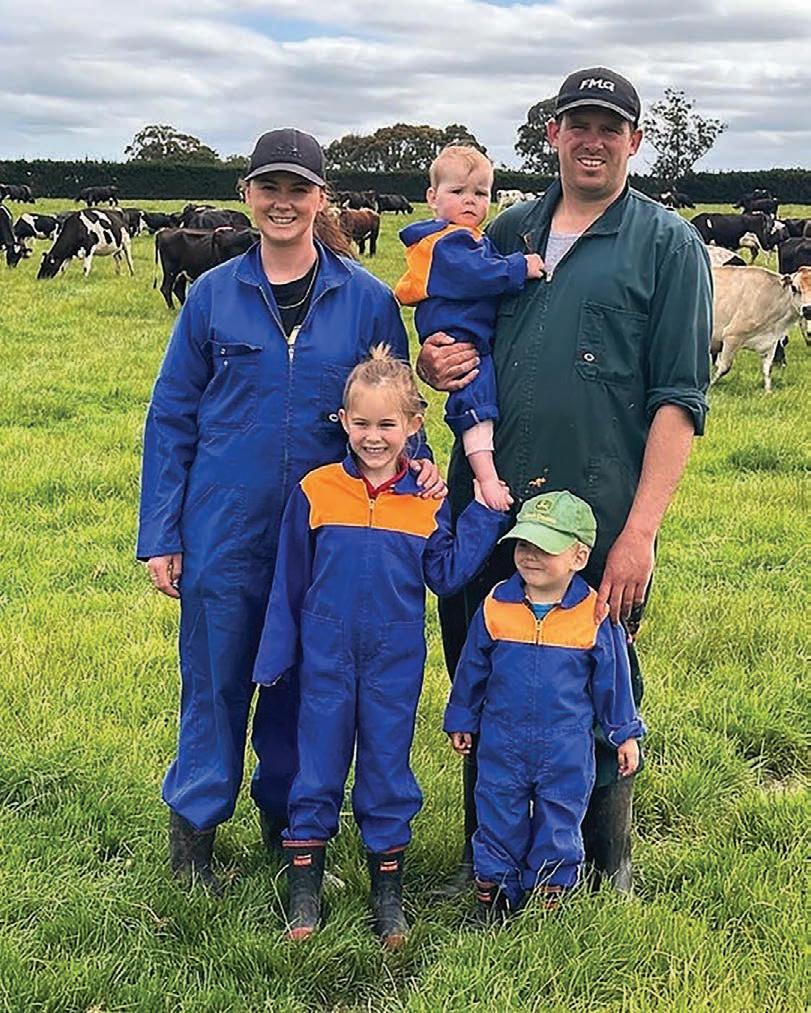
I saw there was a true career path: if I put my head down and took in everything that I could, one day I will dig that fence post on my own land.
Kerry Burt Canterburydo best – make top quality milk and share it around the world.”
The couple strive to be in the top 5% of everything they do and the
look of their farm is important to them and their team, who share the pride they have in the industry.
“I really enjoy showing people that dairy farms aren’t just cow shit and mess.”
Kerry and Aimee identify a worklife balance as a big aspect of their business, for themselves, their employees and their family.
“We want to be in a position to give all our children opportunities for their future.
“Having the time to enjoy life outside of the farm and spend time with family and friends is really important to us.”
THE finalists in the 2024 Ahuwhenua Young Māori Farmer Award have been announced.
Ben Purua, Tainui, 29, is the farm manager at Waimakariri Lands Ltd, near Tirau in Waikato, which runs 540 cows. He is a previous finalist in the AYMF award.
Purua faced adversity in his upbringing in Pukekohe, including exposure to gang life, substance abuse and domestic violence. This led him on a journey in and out of youth prison and eventually to Waikeria Prison. Working on the prison farms ignited a passion for farming and provided Purua with a path to positively redirect his life.
Hannah Speakman, Ngāti Kahungunu, 21, is employed as the 2IC for Woodlands Farming on Pine Hill Dairy farm in Enfield, near Oamaru. The Craigmore farm is 170 hectares and milks 560 cows.
Speakman spent her childhood in Elsthorpe, Hawke’s Bay on Edenham, a sheep and beef farm that was managed by her dad, John. It was there where her
passion for whenua and livestock began.
In 2019, during the first coronavirus lockdown, Speakman’s final year of high school was put on pause and she found herself back home working with her old man every day.
It was then that she decided to

pursue a career in farming.
Shayden Gardiner, Te Āti Haunui-a-Pāpārangi, Ngā Rauru, Ngāti Rangi, 21, is the assistant farm manager for Ma Taua Dairies, Rylib Group, near Ashburton in mid-Canterbury – a 354ha farm that milks 1120 cows at peak.
Gardiner is a dad to three

tamariki, Te Reimana, 4, Tāwhirirangi, 3, and Maddison, 2, and with the unwavering support of his partner Ellie, they are his proudest achievement in life. He said he wouldn’t be where he is today without them.
Gardiner was born in Whanganui and raised living a rural lifestyle.
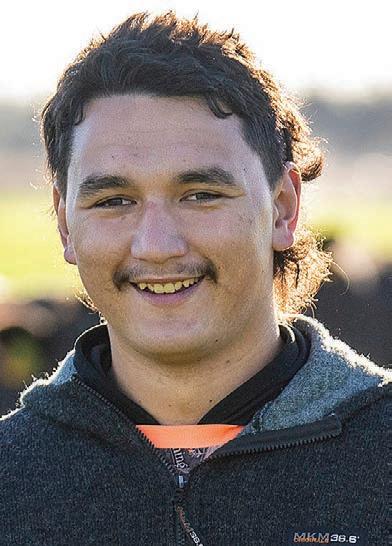
His father and his Koko instilled in him a passion for the whenua, passing down their knowledge as farmers and hunter gatherers themselves.
The Ahuwhenua Young Māori Farmer Award was inaugurated in 2012 and is designed to recognise up and coming young Māori in the pastoral and horticulture sectors.
Lead judge Matiu Julian of Primary ITO said every year the award attracts young farmers and growers who are invested in their futures and want to advance their careers, and as judges it is a privilege to be involved.
Julian said providing an opportunity for young Māori farmers to grow and connect as Māori is an investment in the future growth of the sector. What attracts many young Māori to the award is the realisation they are part of a legacy of Māori endeavour, of resilience and tenacity.
The experience is uniquely Māori and it’s about representing their whānau and the communities who have invested in them.
The winner will be announced at the Ahuwhenua awards dinner in Hamilton on May 17.
There is a corner of a foreign field that is pretty much New Zealand-developed gene-edited pasture. Richard Rennie, in Australia to find out how the neighbours are tackling methane emissions, reports.
ON AN anonymous, remote, windblown paddock in southwestern Victoria grows what may become the first commercially released genemodified clover crop – one with its roots firmly in GMO-free New Zealand.
The clover is based off a NZ cultivar and its development is part of a joint venture between AgResearch’s commercial arm Grasslanz and PGG Wrightson
Seeds, part of the DLF Group.
The version being trialled kicked off over 10 years ago when researchers inserted a gene from the closely related hare’s foot clover. This switched on an existing pathway in the plant so condensed tannin was produced in the leaves, rather than just the flowers.
The goal was to deliver farmers a clover with lower bloat risk and – equally importantly for the industry – a clover option that results in lower methane emissions when eaten by livestock.
Kiwi-born plant breeder Matt Francis oversees the contained field trial in Australia, which is now well into its second year, with previous field trials run over three years in the United States.
“That gene has been about allowing the plant to express high levels of condensed tannins in its leaves.
“When you insert that gene there is a bit of a trade-off in production or yield. The breeding focus has been to bump up the level of condensed tannins to an acceptable level and to be able to
breed for vigour so the plants will be robust, and will survive,” he said.
In the early stages of trial work back in 2018, he said, the plants lacked vigour, but conventional selective breeding since for the high tannin trait and plant vigour has closed the gap significantly.
“We are now up to the level of a commercial cultivar for production.”
Estimates are methane emissions could come down by as much as 20%, and possibly eliminate bloat risk.
The end of the lengthy development period is closing in as the breeders sort out the bestperforming 2500 seedlings from the latest generation, which will ultimately be used to produce seed for animal feed trials, possibly in New South Wales.
For Francis and agronomist Liz Barr, managing and overseeing the project is a big part of their job descriptions, where Francis is also responsible for overseeing PGW Seeds lucerne breeding.
For him the high expressed tannins project represents a tough gig in the business of plant breeding.
“There can be a number of aspects of plant production affected when you modify a species.
“Condensed tannin production is one of the more challenging traits to work on with gene modification, although we have not noticed any loss in seed production, which can occur.”
Barr is required under Australia’s genetic technology regulations to

file a monthly report, ensure there are no crop outbreaks from the containment zone, and to dispose of all grass and clover clippings by burning after mowing around the area’s buffer zone.
“And once a year we will have a visit from the OGTR [Office of the Genetic Technology Regulator].”
Another project also being run in Victoria with Grasslanz and PGG Wrightson Seeds involves geneedited endophytes in ryegrass, where the function of a gene has been stopped without introducing

THE Ministry for Primary Industries wants to allow exporters of day-old chicks and hatching eggs to establish biosecure compartments that can be certified free from particular diseases.
The MPI is now looking for feedback on a notice titled Regulated Control Scheme –Production of day-old chicks and hatching eggs within a compartment for export.
A compartment is defined as a subpopulation with a specific health status.
“In this case, poultry companies involved in the production of hatching eggs and day-old chicks for export would independently establish a compartment around
the part of their company involved with production of hatching eggs and day-old chicks for export.”
The compartments would be targeting disease such as avian influenza, Newcastle disease and specified salmonella serovars.
Importing countries will have confidence that exported products are not a potential risk.
Michael Brooks Poultry Industry Association of NZ
It is possible additional diseases will be added later, the MPI said.
The proposed scheme would include measures such as listing of compartments, requirements for a documented biosecurity management plan, infrastructure requirements, traceability,
sanitisation, verification requirements, disease monitoring and surveillance requirements and requirements for independent evaluators, the MPI said.
This proposed notice would issue export requirements and impose a Regulated Control Scheme under the Animal Products Act 1999 on companies choosing to take part in the scheme to administer and provide oversight of listed compartments, the MPI said.
The executive director of the the Poultry Industry Association of New Zealand, Michael Brooks, said this would give exporters more certainty that they could continue exporting even if there was an exotic disease outbreak somewhere else in the country.
Importing countries will also have confidence that exported products are not a potential risk, Brooks said.
In 2022, fertile eggs and day-old
in Australia presents a far more viable option to the NZ option, where the regulatory process is challenging. Gaining approval for such field trials in NZ has not been attempted for over a decade as a result.
He, like many in the Crown Research sector, has been calling for another look at the gene technology regulations, something the new government has promised it will undertake.
We are now up to the level of a commercial cultivar for production.
Matt Francis DLF SeedsNegative feedback on the Australian trials had been near zero and the site is not subject to overly restrictive containment demands, with mesh type containment housing to keep pollinating insects out.
Caradus is hoping that any review here will result in the NZ government taking a step back and seeing that systems globally, including Australia’s, may enable NZ to explore the benefits that could accrue from the technology.
any foreign DNA. The targeted gene-editing technology CRISPR has been used to modify the ryegrass endophytes to deliver better animal health outcomes by removing the expression of toxins that can produce problems with heat stress and staggers in livestock.
These, too, are well advanced and destined for widespread agronomic trials across Australia this year.
Grasslanz CEO John Caradus said the gene-edited and GM field work
He particularly favours the Australian and Canadian systems that focus on research and trial works’ outcomes, rather than just the process.
“I have been impressed with the OGTR. They have been and inspected the sites and been engaged right throughout the whole activity and given good, timely guidance.”
He said he has enjoyed the same with NZ’s Environmental Protection Authority.
“But the problem in NZ are the regulatory rules that they have to work with.”
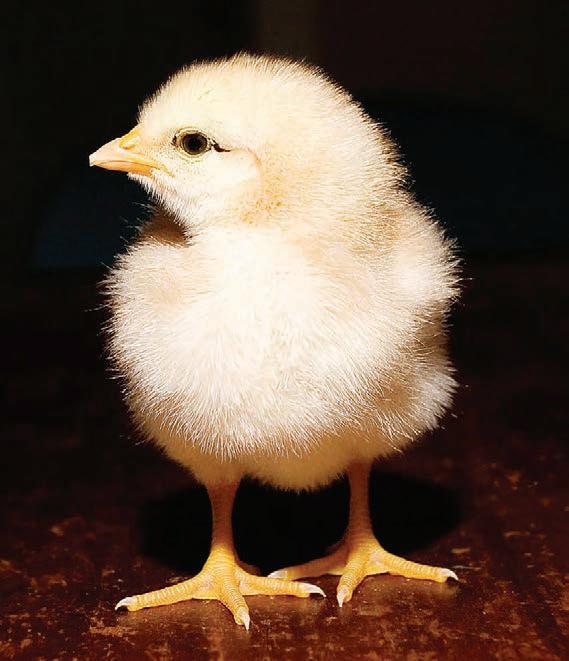
chicks were worth an export value of $55,400,000, he said.
Statistics from the MPI showed last year 3,189,406 day old chicks were exported, with 6,184,941 hatching eggs exported.
The establishment of compartments is a detailed process and development to this stage has taken a lot of work by both the MPI and the industry, he said.
PLANS: Exporters of day-old chicks and hatching eggs could hopefully soon establish compartments on farms that are certified to be free of specific diseases.
If egg and chick growers want to create such a compartment on a farm the new standard will set out biosecurity standards that must be met and proven by way of audit that the required steps have been taken, he said.
New markets could open if importers have the confidence that exporters are not a risk, Brooks said.

Richard Rennie in Melbourne TECHNOLOGY Climate change
BY 2030 more than a third of Australia’s cows will be housed indoors as the sector responds to the ever-pressing impacts of climate change.
“We estimate at present 20% of Australian milk production comes from these [indoor] systems.
Estimates are that by 2030 that may be nudging 35-40%,” said Dr John Penry, Dairy Australia’s principal scientist.
Work by Dairy Australia has found the impact of climate change over the past decade and going forward amounts to a negative .4% to .6% a year.
“That is a pretty scary number and as a headwind it is already affecting us, while farmers are now having to think of ways they can adapt their farm systems to climate change.”
A sector response has been to adopt more containment-style milking operations in one of three forms, which include the standard United States-style system.
The ability to use the contained systems to control the negative impacts of a warming climate are a key driver, keeping animals cooler in summer.
“Where it is really being driven is in places where irrigation water pricing has been more volatile, and where issues are experienced over the ability to grow perennial ryegrasses in hotter conditions,” Penry said.
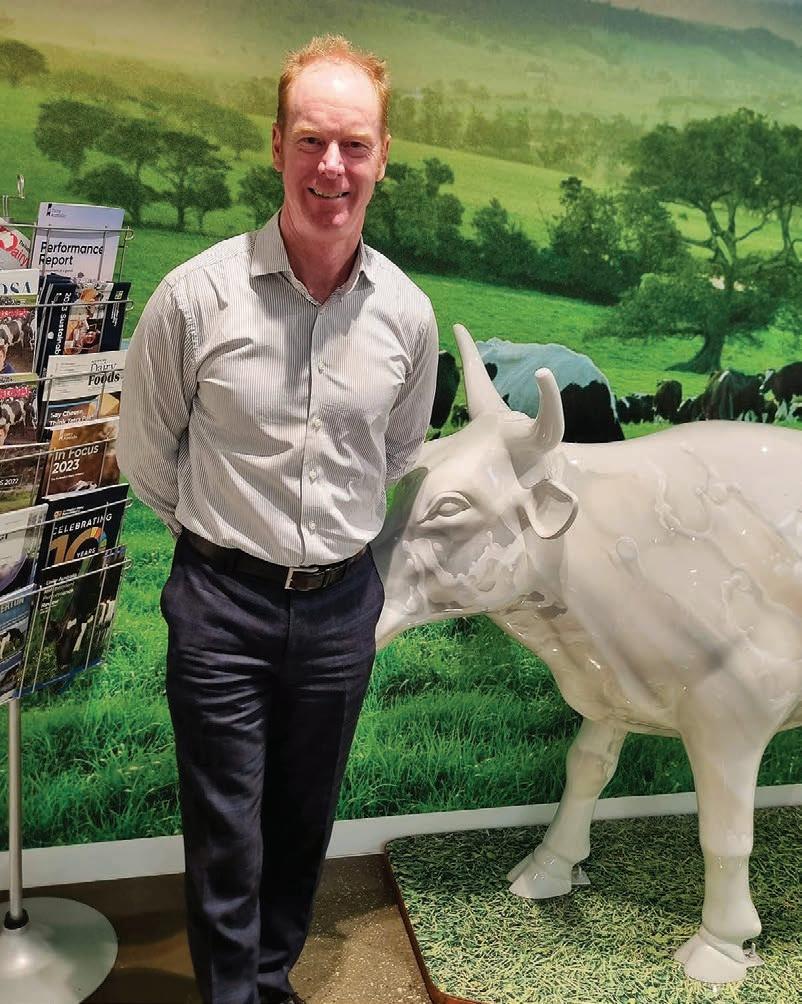
Some properties are now experiencing pasture runout only five years after planting because of heat’s effect on ryegrass, and inconsistent rainfall patterns.
“For example, this February most of Victoria only had 5mm of rainfall.”
Amid sliding cow numbers,

Richard Rennie in Melbourne TECHNOLOGY Climate change
WITH Australia’s dairy sector accounting for only 2% of the country’s greenhouse gas emissions, dairy farmers there face considerably less heat from the spotlight than their counterparts in New Zealand, who account for a quarter.
The sector is still compelled, along with all others, to contribute to the Australian government’s goal to meet its Paris Accord targets, and dairying is aiming to reduce emissions by 30% by 2030.
Dairy Australia’s head of climate and energy, Elissa McNamara, said it remains unclear whether the Federal government will be setting specific and regulated sector reductions in its economywide plan for Australia to meet its targets.
“The target we have at this stage is a voluntary target, and Dairy Australia has provided input to the Federal process, while you also have individual states pursuing their own goals too,” she said.
One area the sector has doubled down on in preparation for whatever requirements may come is in helping dairy farmers “know your numbers” on greenhouse gas emissions.
“Until now there has been no incentive or regulatory driver that requires them to know their numbers. But we already have 15% of farmers who have done it already, those that are comfortable working with data, and want to be in front on this.”
This contrasts to NZ, where the new government has given no indication it intends to repeal the requirement that farmers reduce emissions by 10% by 2030, and a further 24-45% by 2050.
Unlike NZ, where there are now
Penry said when he started his career in the early ’90s the sector boasted 14,000 farmers. Today that has dropped to 4100.
Farm consolidation took care of a portion of the reduction early on. But in the past two years the sector has lost almost a million cows to total 1.5 million, with production dropping from 11.6 million tonnes of milk to 8.5 million tonnes.
The change is also being driven by the impact that climate change is having on farm systems themselves.
Dairy Australia, a levy-funded organisation like DairyNZ, has spent the past five years building resources to help farmers determine what containment system is best for their location and goals.
“It’s important to get it right. The costs to build the infrastructure for such systems are $A2500 [just under $2700] to $A4000 a cow.”
The changes are being made largely by family farm operators, who also see the shift as an opportunity to, in many cases, double the operation’s size.
more labour, recently a major issue for Australian dairy farmers and one that prompted many to exit to beef.
But government initiatives to get more migrant workers on farms have proven successful, and as in NZ, Filipino workers are now common among staff members.
That is a pretty scary number and as a headwind it is already affecting us, while farmers are now having to think of ways they can adapt their farm systems to climate change.
Dr John Penry Dairy Australiadepleted export volumes and overall lower production, the Australian dairy sector is also repositioning itself in an environment where competition for domestic milk supply has intensified. The amount exported has declined to an all-time low of about 30% of total production.
“It is all about how do you de-risk a dairy operation around a more volatile climate, and also achieve better water use efficiency? It also helps reduce milk price risk – if you can have a flat supply curve over 12 months, supply is more reliable and there’s less seasonality.” He said the economics of conversions indicate that profitwise there is an upside in the conversion option.
The larger farms do require
Australia’s eastern states face a significant “milk border” with twothirds of its dairy based in Victoria, requiring transport to the majority market in Sydney and northwards. Conversion to containment systems may provide an opportunity to base herds closer to those population centres that need raw milk supply.
Meantime for those farmers wanting to convert, the time has never looked better financially. Due to the tighter milk supply, dairy farmers’ milk is in hot demand, and returns are isolated from lacklustre global values with them being paid the equivalent of A$9-A$10 per kg.
“They are operating well and truly above their net farm operating target of A$1.50.kg milk solids.”
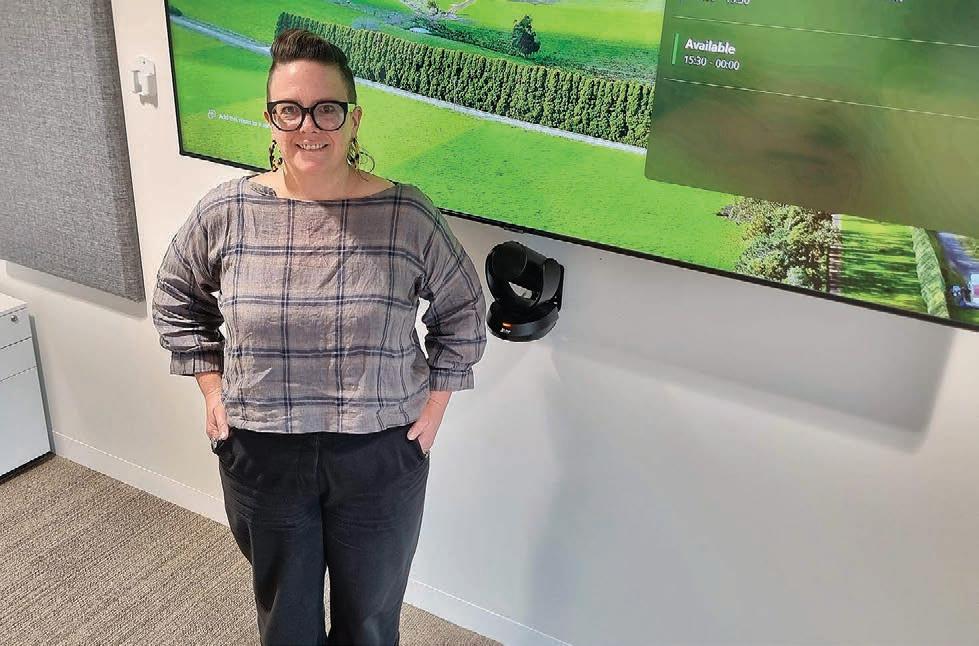
There is no ‘stick’ here yet, this is very much about trying to keep it that way, it is about supporting and enabling farmers.Elissa McNamara Dairy Australia
multiple tools for calculating farm GHG emissions, the Australians have steadfastly focused on only having two tools, with the main one being the Dairy Carbon Calculator (DCC).
“We have seen that having multiple tools does not support
a united voice when addressing government, and it is confusing for farmers.”
Built with dairy levy payments, the DCC is free to all farmers.
While the Federal government is about to legislate on mandatory emissions reporting, it does not directly capture dairying at this stage – though farmers are likely to be required to provide the data through dairy processors’ Scope 3 emissions reporting. At this stage processors’ Scope 3 emissions targets are not clear.
In NZ, Fonterra has laid out a 30% reduction in Scope 3 farm emissions target to be achieved by 2030.
NO STICK: With their lower contribution to national GHG emissions, Australia’s dairy farmers face considerably less focus on compulsory lowering of emissions than their Kiwi counterparts do, says Elissa McNamara.
“There is no ‘stick’ here yet, this is very much about trying to keep it that way, it is about supporting and enabling farmers,” McNamara said.
Research to help mitigate the sector’s GHGs include research into genetic traits that deliver a lower intensity of gas per kilogram of milk solids produced.
Collaborative research partnerships on mitigation tech includes working with DairyNZ. While red seaweed is an Australian discovery proving to help reduce methane in beef feedlots, McNamara said it still remains to be fully proven in free-range pastoral applications.




















With wild deer, pig, wallaby and goat numbers on the rise, cost-cutting by the Department of Conservation simply must not come out of pest and wild animal control budgets, Federated Farmers says.
As Finance Minister Nicola Willis looks to slash public service spending annually by $1.5 billion, most government departments and agencies have been asked to nd savings.
DOC needs to cut its spending by 6.5% ($46 million), but Federated Farmers president Wayne Langford says it would be short-sighted and irresponsible of DOC to take that money from urgently needed wild animal control work.
“Hunters, processors, Federated Farmers, DOC representatives and others met recently to discuss how we could work together to reduce wild game numbers and, potentially, use meat from those animals for community good, such as foodbanks.
“We need a sustained e ort from everyone involved to get on top of feral deer and goat numbers in particular.”
Conservationists have talked about the young plants in our bush understorey being completely wiped out, “so it’s no wonder deer are looking to farmland for food”, Langford says.
“Sheep and beef farmers have enough costs piling on them without feral animals undermining their livelihoods.”

Just before last year’s general election, Federated Farmers, Forest & Bird, and the NZ Institute of Forestry sent a joint letter to politicians asking for greater commitment to controlling large mobs of feral browsing pests.
The letter said the current suite of control e orts, including farmerfunded pest control, recreational hunting and DOC of regional council-deployed hunters “are failing in many areas to adequately control populations”.
Langford says increasing populations of feral browsing animals take a heavy economic and environment toll, and risk the
spread of diseases such as bovine tuberculosis.
“Not only do they destroy vegetation planted by farmers for riparian and biodiversity protection, but they undermine farm economic viability by chomping through vast amounts of grass – feed that’s perilously short in dry districts.
“One deer eats the same amount as two adult sheep or a one-yearold heifer, and one wild goat is the equivalent of one sheep. It’s a serious problem.”
Langford acknowledges some farmers value having deer on their properties for hunting.
“The next-door farmer might have
a completely opposing view, so it’s not always straight forward.”
Asked by Federated Farmers whether DOC’s cost-cutting would a ect its pest control work, deputy director-general regional operations Henry Weston says no decisions have been made yet.
He agrees browsing feral animals are on the rise.
“Wild deer, pigs and goats have increased across all land tenures, including public conservation land,” he says.
DOC’s monitoring programme shows wild deer, goats, tahr and chamois are at 82% of sites on public conservation land, an increase from 63% in 2013.
Federated Farmers Waikato meat and wool chair Reon Verry, who farms at Te Kuiti, says DOC is a “bad neighbour” as far as pests go. He says pigs and goats come o the adjacent DOC estate, the former rooting up his pasture and the latter eating grass and digging holes under fences. Wild pigs have also been known to chase and eat lambs.
While the problem on his farm is no worse than in previous years, it’s no better either, Verry says.
“If DOC has to nd savings, it should come from the department reducing its litigating in planning arenas, such as Waikato’s Plan Change 1 hearings, where it opposes food and bre producers and generally makes life tougher for farmers.
“I nd it ironic they make a lot of e ort ensuring there are rules to
keep stock out of waterways, but the feral animals they seem to worry less about come out of their estate and invade our farms.”
Meanwhile, the NZ Taxpayers’ Union claims DOC’s resources are spread so thin because of its “everygrowing backroom bureaucracy rather than delivering on improved conservation outcomes”.
It says, since 2017, DOC’s head count has grown by 28.2%, including an extra 134 managers and at least 319 more sta in back-o ce roles.
“This is the same department that spent almost $12,000 on a funeral for a turtle and more than $5000 on retirement gifts for its former director-general,” the union says.
Weston says that while much of DOC’s sta growth has been in the ‘back-o ce’, “this relies on a broad de nition of ‘back-o ce’ that includes roles like scientists and technical advisors.
“These roles have valuable, relevant expertise in topics vital to DOC’s remit. Reduced ‘back-o ce’ or administrative work for rangers means more time doing frontline work in the eld, and having dedicated sta do that work is more e cient.”
On the comment that DOC can be a bad neighbour, he says the department has more neighbours than anyone else in New Zealand.
“While there are challenges, there is also a huge opportunity to work together with councils, farmers and others. We are eager to work more closely with the community on these controls.”



Farmers looking for a better deal from their bank need to be showing up with a clear budget and strategy, and demonstrating how they perform against that, ASB’s rural general manager says.
Speaking on the Federated Farmers Podcast, ASB’s Aidan Gent said there are actions many farmers could take today to strengthen their position with the bank.
“The first step is to have a really good conversation with your banker to understand how they view your farm business.
“The worst thing you can be doing is having your head in the grass, afraid to have that conversation.”
The next step is to identify risks in your business – such as exposure to interest rate movements or commodity prices – and explain how you would plan to mitigate them, he says.
This could include cost control in the near term; and balance sheet strength, hedging policies or
diversification of revenue streams in the medium term.
“It’s showing us how you’re thinking about the medium-term viability of your business and how you might start to manage a bit of that risk.”
Articulating where you want to take your business, and presenting clear budgets and financial projections, are also key, Gent says.
“What’s your strategy for your business?
“Do you want to buy your neighbour’s farm in five years’ time, or a bach at Whangamata, or bring your kids through the farm and, therefore, potentially bringing a 50/50 sharemilker on?
“What does that strategy and budget look like? What are the parts you’re not happy with and what you might you adjust? We want to know that stuff.”
He suggests farmers spend time with their accountant, farm advisor and other trusted advisors to figure out the business’s direction, and
then clearly communicate it to the bank.
“Because if we can understand where you’re trying to take your business, it makes it a lot easier for us to support you.
“It’s not a case that you’re then held strictly to what’s written a piece of paper; it’s just about helping articulate to us what the road looks like for you.”
Gent says the banks also want to see how a farmer behaves – or will behave – when a downturn hits, because that’s a huge indicator to a business’s longer-term success.
“Anyone can make money when returns are high and interest rates are low, but in an environment like now, especially in the red meat sector, how do you think about adapting your decisions on-farm?
“A lot of farmers do this by gut –it just happens. Fonterra drops its payout and so you just don’t order the next month’s palm kernel. But how do you articulate that and spend time thinking about what

you’d do if the payout dropped to $6.50 or $7?”
All of those steps ultimately help the bank to see your farm business as less risky and, therefore, offer a cheaper interest rate, Gent says. He says, once farmers have had those initial conversations with the bank, it’s crucial to then follow through on your plans over the next few years.
TALK: ASB’s Aidan Gent says there are actions many farmers could take today to strengthen their position with the bank.
PLAN: ASB’s Aiden
Gent suggests farmers spend time with their accountant, farm advisor and other trusted advisors to figure out the business’s direction, and then clearly communicate it to the bank.

“There’s not much point in Beauden Barrett having the best bronco in All Blacks training if he then goes out on Saturday and gets chased down by a front rower. You have to put in that performance on the field.
“So, when you’re thinking about the next two to three years, it’s your chance to start demonstrating the things you want to be proud of. The banks will look at how you’ve performed.”
Although spending time budgeting, strategising, and analysing your business might well get you a better deal with the bank, it also just makes good financial sense, Gent says.
“Yes, you might get an improved risk score from the bank, and
What does that strategy and budget look like? What are the parts you’re not happy with and what you might you adjust? We want to know that stuff.
Aiden Gent ASB
therefore a cheaper interest rate, but at its very simplest what we want our customers to be doing is making more money, strengthening their balance sheets, and then continuing to do awesome things for food and fibre.
“So, doing these things because you get a better interest rate certainly needs to be a consideration, but the far greater impact is actually on you and your family’s wealth and future prosperity.”
Listen to Aidan talk more on this topic, plus share his thoughts on a rural banking inquiry, in episode five of the Federated Farmers Podcast –fedfarm.org.nz/podcast



Irecently wrote a piece for Farmers Weekly titled ‘Can the last shearer out please turn off the lights?’ where I spoke about the crisis our wool producers are currently farming through.
I called for bold leadership and innovative new solutions, and concluded with an open-ended question for our sheep farmers to ponder:
Are we content to sit back and watch the future of wool slowly fade to black, or are we going to stand up and fight for its survival?
Since that story went to print, I’ve had an overwhelming response from our rural community, with farming families from across the country reaching out in support.
Like me, they’re sick and tired of sending their wool clip to auction only for it to sell at a price that doesn’t even cover the cost of shearing.
Their businesses just aren’t making enough money to provide for their families. Their budgets are splattered with red ink.
Those families aren’t alone in their predicament.
As Federated Farmers meat and wool chair, I attend my fair share of farmer meetings across the country, and everywhere I go, the room is full of people asking the same hard questions about the future of wool in New Zealand.
Some are saying there’s no money left in wool, but I disagree. There’s still plenty of money left in wool –the problem is that farmers aren’t seeing any of it.
Everyone else in the wool value chain seems to be making a dollar – the shearer, the exporter, the manufacturer – but the farmer is left to carry the loss alone.
We have to ask ourselves: what other business would continue to sell their product at a loss year after year, like we have with wool?
Most businesses could probably stomach a year or two in a crisis, but
it’s just not sustainable in the long run, particularly for small, familyowned businesses.
Eventually, you need to return to profitability and recover your losses. So, why do we as farmers continue to do it?
The problem is that 90% of our wool is sold on the international market as a low-value raw material, where we’re competing with cheaper synthetic fibres made from fossil fuels.
Our high-quality product is labelled as ‘general strong wool’ and sold in an auction system at high volumes, which erodes its value.
To add salt to the wound, our New Zealand wool is often blended with inferior wool from around the world to lift the overall quality for manufacturing.
If you ask me, this shows very little respect for our product.
It’s like mixing Jack Daniels into your single malt Scotch, topping up a glass of Dom Pérignon champagne with Lindauer, or throwing some Sizzlers on the BBQ next to your prime home-kill sausages.
Unfortunately, there’s very little we can do as farmers about the auction system, or what happens to our wool once it’s sold, but there are some things we can control, like what we do with our own wool clip.
To add salt to the wound, our New Zealand wool is often blended with inferior wool from around the world to lift the overall quality for manufacturing.
Toby Williams
Federated Farmers meat and wool chair
That’s why my family and I have told our broker we are no longer willing to sell our wool at auction. Instead, we are going to try to sell privately for a fair price.
Some of you will think I’m mad,

PAY UP: Toby Williams says if they want our wool, they’re going to have to come to us with a fair price that doesn’t
and maybe I am, but if enough farmers decide to stand together and join me, I think we can make a real difference.
If you do a great job of preparing your wool for sale, with a full team of rousies, and all oddments and poorer styles taken out of your main line, then you know you have the wool that buyers want most.
Let’s send a clear signal: if they want our wool, they’re going to have to come to us with a fair price that doesn’t send us broke, or continue to buy poorly presented and prepared clip from those who have given up.
Yes, a move like this comes with risk. Each farming family will have to make their own decisions, but the way I see it is that we need to try something.
I won’t be selling my wool at auction this winter. Are you with me?
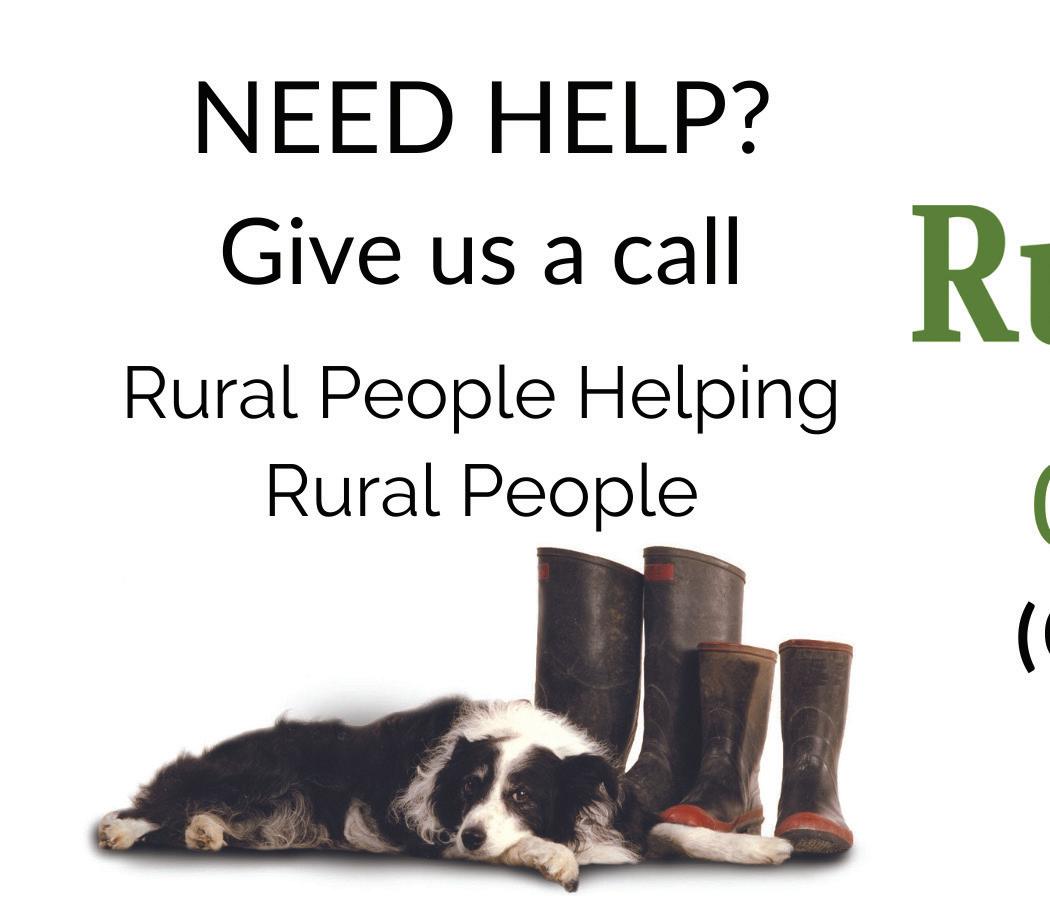
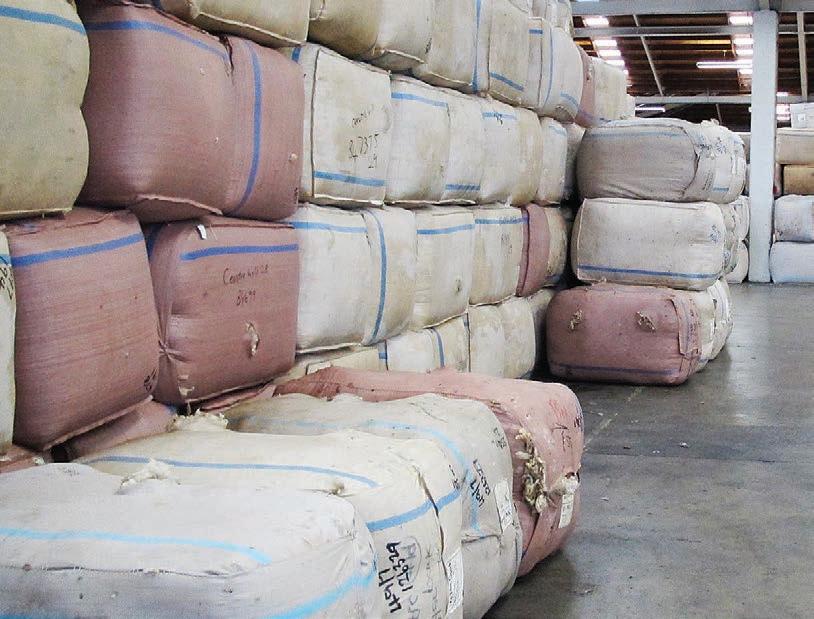
COMMODITY: New Zealand’s high-quality product is labelled as ‘general strong wool’ and sold in an auction system at high volumes, which erodes its value.

An about-face by Environment Canterbury on calls to save an Ashburton creek is a victory for common sense, says a Federated Farmers member who helped lead the charge.
Darryl Butterick says the change of mind by ECan to allow irrigation water to ow into Greenstreet Creek came in the face of mounting community pressure.
“Unfortunately, it was a bit bloody late for those tuna/eels, freshwater cray sh, bullies and other aquatic life that died,” he says.
“ECan are saying it’s only a temporary solution but that’s not the way we see it.
“This is just part of wider consent review issues.”
Greenstreet Creek, which runs for about 5-6km adjacent to the Ashburton River, had dried up to nothing but a few dwindling pools by mid-March.
While irrigation water has been used to top up the creek’s ow during very dry spells in the past, changed consent conditions now block this.
ECan introduced new rules last July that impose minimum ow restrictions for all consent holders in the catchment.
Butterick says he raised concerns with the Ashburton Water Zone Committee in February, stressing an urgent need to use irrigation water to preserve the creek’s excellent habitat.
Apart from one email and one phone call, his pleas to ECan, and those from other farmers and lifestyle block owners, met with silence from the council, he says.
“Everyone is pissed o ,” Butterick told media on March 20.
“I walked a section yesterday with a bucket and a little net and found one beat-up kōura still alive.
“Within 12 hours, we could get irrigation water in there and there might be just enough life left for [the creek’s ecosystem] to revitalise over time, but ECan aren’t budging.”
The next day, with media now

The bigger picture is that we are amidst the impacts of the El Niño weather pattern and climate change, here and now, and we’re seeing very dry riverbeds across Canterbury.
Darryl Butterick Federated Farmers member
interested, ECan did budge.
Chief executive Dr Stefanie Rixecker announced irrigation water ow at a rate of 1.5 litres/second could be diverted into Greenstreet Creek.
She acknowledged the community’s frustration and agreed the council hadn’t kept people well-informed.
“The bigger picture is that we are amidst the impacts of the El Niño weather pattern and climate change, here and now, and we’re seeing very dry riverbeds across Canterbury.”
The Ashburton River/Hakatere is an over-allocated catchment with signi cant challenges, Rixecker said.

“This means challenges and the need to make trade-o s – tough calls that weren’t made by previous generations – are here and now.”
Speaking prior to ECan’s backdown, Mid-Canterbury Catchment Collective co-ordinator Ange Cushnie said farmers and lifestyle block owners were feeling “cranky, disappointed and a bit heart-broken” at seeing sh-life stranded, yblown and bird-pecked.
“The part that grinds my gears is that ECan is talking about a 24% rates increase.
“A signi cant portion of that goes towards biodiversity restoration and looking after ecology and mahinga kai.
“It seems hypocritical that we have an opportunity to protect an already-thriving ecosystem but the locals who have looked after it for many years have had to sit back and watch it go to ruin.”
Cushnie said some locals had been “run ragged” moving tuna, kōura and other critters from the creek to Ashburton River, and Fish & Game members also stepped in to help the rescue mission, Butterick recalls, at the consent hearings, the independent
STREAMING:
Watching irrigation water that will ow to Greenstreet Creek after a change of mind by Environment Canterbury are, from left, ECan councillor Ian McKenzie and local landowners Darryl Butterick and Lyndon Webb.
In announcing ECan’s March 21 u-turn, Rixecker said more conversations over “just transitions” are needed “in the interests of the community, our rūnanga partners and the environment itself”, she said. Butterick, who chairs the Greenstreet Irrigation Society, says these conversations need to take more heed of food producers and landowners.
“These are the people with onthe-ground experience of these waterways, and the ones who are bleeding from being shafted by consent decisions.”
He says signi cantly higher minimum low ows set for the likes of O’Shea and Mt Harding Creeks, with adverse impacts for irrigators, are “unrealistic” and seemed to be about getting ow to the northern branch of Ashburton River.
commissioner asked an ECan expert witness if he thought farmers’ warnings about Greenstreet Creek were being overstated.
“His reply was ‘yes’,” Butterick says.
“But everything I told them was going to be an adverse consequence of their changes has happened basically within eight months of the new rules coming in.”
This northern section goes dry and heads underground in summer, and has done for decades, Butterick says.
“I’d argue the consents need to be opened up for debate again, and if ECan won’t do that, maybe it needs to be a ministerial directive.
“What’s the point of changed consents that create all this damage for bene t to no-one, including the environment?”
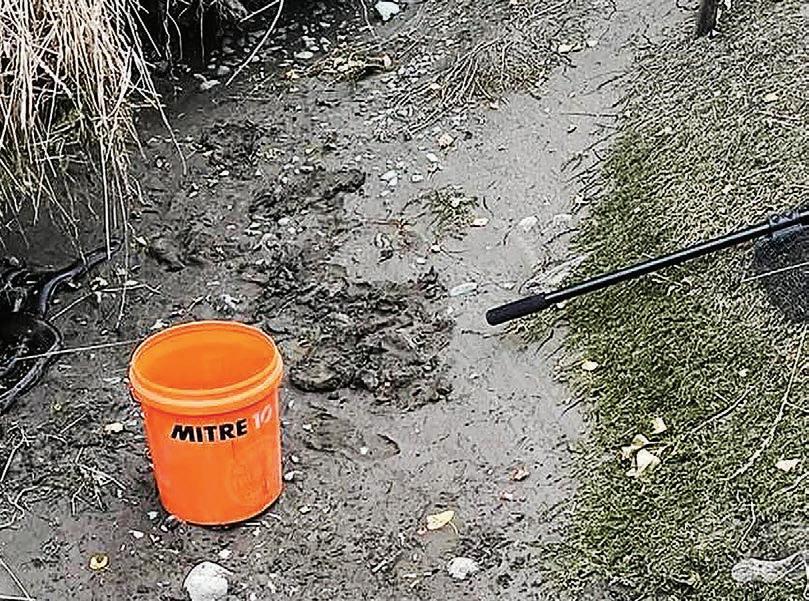
BEACHED: These tuna/eels left high and dry in Greenstreet Creek were rescued and transferred, but many other eels and sh have died.
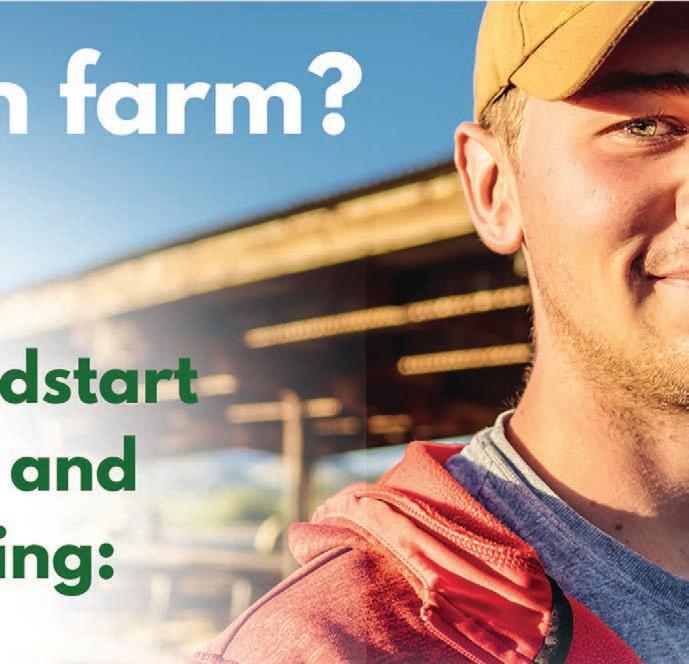


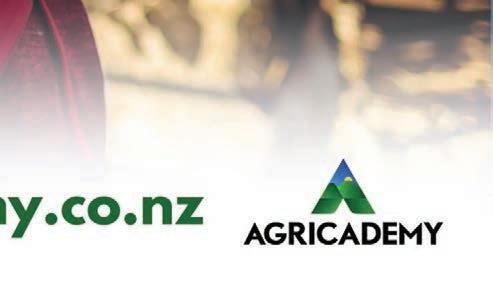

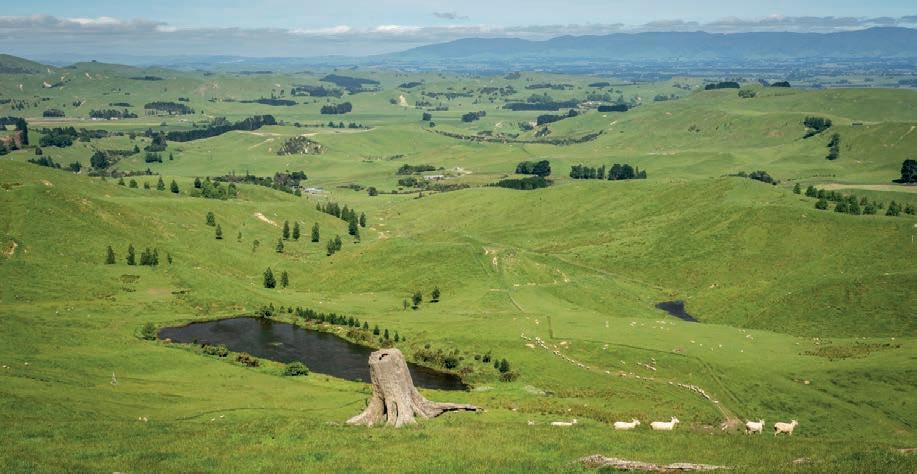


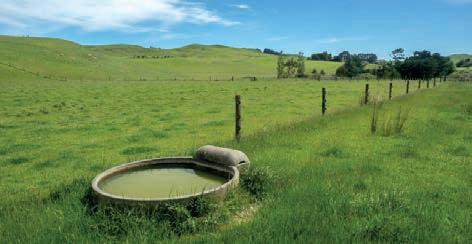


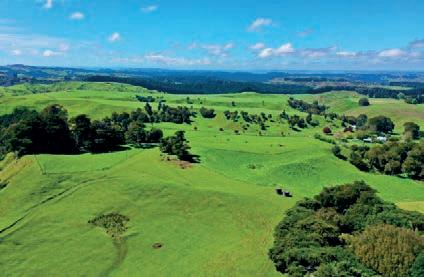

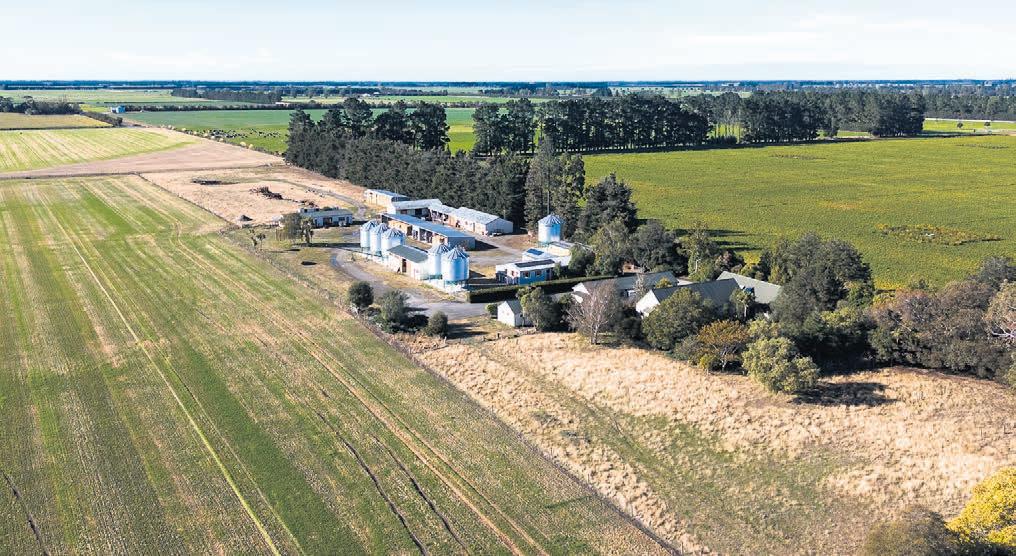

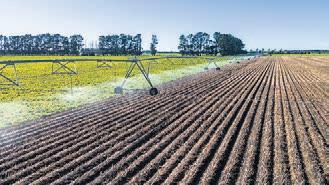
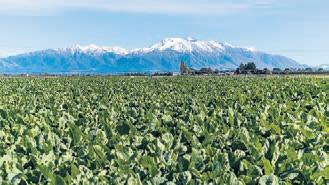
Located in the highly regarded Winchmore area we are privileged to offer this high quality dairy support and intensive arable support unit. At 118.8 ha this is an optimum support unit for both grazing, finishing or feed for medium to larger dairy farm platforms or strategic fit for a multiple farm portfolio. Formerly part of the Winchmore Research Station the farm has undergone a significant transformation under the current vendors ownership and is presented in excellent condition. The property features a full allocation of ALIL shares, highly effective irrigated area via efficient Zimmatic pivot and lateral irrigators.

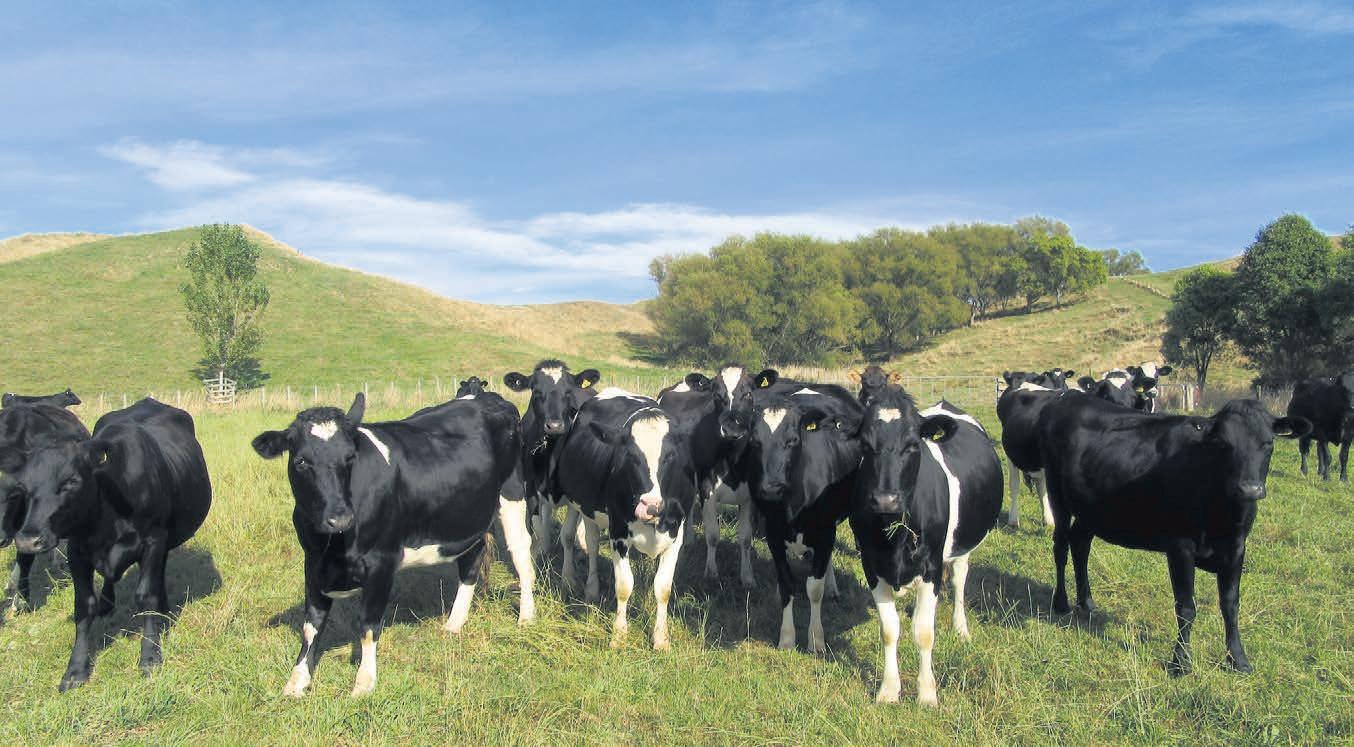


Glenloch, 232 ha located at 382 Kairakau Road, Central Hawkes Bay, presents a unique turnkey farming opportunity as a significant player in dairy grazing, heifer finishing, alongside breeding operations. Beyond its prime location near Kairakau beach, Glenloch's superiority lies in its commitment to quality. The fencing, stock water infrastructure, soil fertility, along with pasture management, all meet exceptional standards, showcasing the current vendor's unwavering dedication to high level farming practices. With the added benefit of good all-weather access through a metaled lane, this property ensures ease of stock movement for efficient farming operations. The property features a three bedroom homestead that has been the family residence for the current vendor, with an in-ground pool on private grounds, providing a retreat from the farming activities. A straightforward sale, as per the vendor's instructions.

3 1 Auction 2.00pm, Tue 9th Apr, 2024, Property Brokers, 306 St Aubyn Street West, Hastings
View By appointment Web pb.co.nz/HR178564


Simon Hunt
M 021 404 079 E simon.hunt@pb.co.nz
Pat Portas
M 027 447 0612 E patp@pb.co.nz

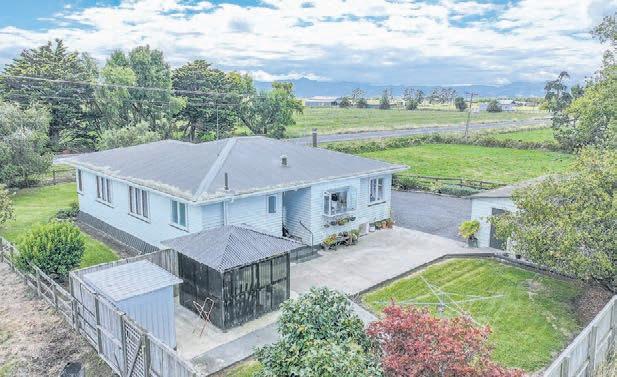
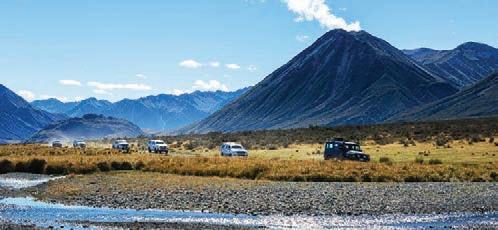






HORTICULTURE






NZ KELP. FRESH, wild ocean harvested giant kelp. The world’s richest source of natural iodine. Dried and milled for use in agriculture and horticulture. Growth promotant / stock health food. As seen on Country Calendar. Orders to: 03 322 6115 or info@nzkelp.co.nz
LEASE LAND WANTED
2000-4000SU SHEEP AND beef lease block. Anywhere in New Zealand considered. Mid 40’s couple, approximately 30 years experience. References available. Phone Karyn 027 246 9668.
LIVESTOCK FOR SALE
THE GULLIES Wiltshire & Low Input Rams. SIL; FE and worm tolerance. Lower your shearing costs. Look after your bottom line. Richard Morrison, 021 626 513, richard@thegullies.nz
OXFORD EWES, PUREBRED and registered. Southland based. Phone 027 448 1013.
BOOK AN AD.
only ad in Farmers
Classi eds section.
0800 85 25 80
ADS.
WANTED FOR up to 150 Cross-breed or Friesian R2 Heifers. Cambridge. 10yrs Grazing Experience. References Available. Phone 021 325 038.
BOOK AN AD. For only $3.30 + gst per word you can book a word only ad in Farmers Weekly Classi eds section. Phone 0800 85 25 80 to book in or email wordads@agrihq.co.nz
RAMS FOR SALE
WILTSHIRES-ARVIDSON. Self shearing sheep. No1 for Facial Eczema. David 027 2771 556.
SHEEP SCANNING AVAILABLE SERVICING SOUTH
WAIKATO. King Country, Ruapehu, Taihape areas. Experienced operator. EID and Foetal Ageing. Phone 027 479 4918.













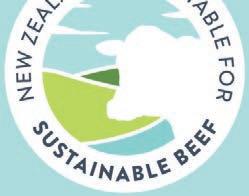



A/c P Curnow & J White
Date: Thursday 4th April 2024
Address: Matamata Saleyards
Start Time: 12.00pm
will be available for online bidding
COMPRISING:
90 x In-Milk Friesian/Friesian Cross Cows (3 digit herd code)
DETAILS:
• BW189 PW213
• 371M/S, 118,000 SCC
• Breed 60% Crossbreed, 40% Friesian
• BVD Tested and Lepto Vaccinated, TB C10
AUCTIONEERS NOTE:
Very attractive in-milk cows milked twice a day and supplemented with baleage.
These cows come forward in working condition and will shift well.
DELIVERY/PAYMENT TERMS:
Within 14 days of sale.
Delivery day of the auction.
CARRFIELDS LIVESTOCK AGENT:
Paul Collins
M: 027 304 8994

A/c Ashley Family Trust (Shane & Jacque Ashley & Family)
Date: Friday 12th April 2024
Address: Matamata Saleyards, (114 Waharoa East Rd)
Start Time: 11.30am
will be available for online bidding
COMPRISING: 130 x In-Milk Friesian/Friesian Cross Cows (4 -7 year olds)
DETAILS:
• BW289 PW480. 649M/S (to 4th March 24)
• Still producing 2.1m/s on 10th March 24. 115,000 SCC
• DTC 15/7/24 to AB Friesian for 4 weeks only (vetted in-calf on 2/4/24)
• System 3, rotary shed. Lepto Vaccinated, TB C10, EBL Free
• Mycoplasma Bovis not detected
AUCTIONEERS NOTE:
Our vendors are exiting the industry and are selling the farm. This capacious, strong uddered spring portion of the herd (best 130 cows) are available for purchase. The auction cows are a portion of a 900-cow herd, with the autumn and Jersey content already sold. Don’t miss the opportunity to purchase these highly recommended cows.
PAYMENT TERMS / DELIVERY:
Deferred payment due by the 20th September 2024.
Delivery on the day of the auction. For those outside of the region, or those without farm access until the 1st June, the cows will be transported back to the farm and milked until transport can be arranged or dry cowed for delivery no later than 20th June (Vendors cost).
CARRFIELDS LIVESTOCK AGENT:
John Price 027 594 2544
OUR VENDOR:
Shane Ashley 027 248 8570




SALE TALK
A lawyer runs a stop sign and gets pulled over by a policeman.
Cop says, “License and registration, please.”
Lawyer says, “What for?”
Cop says, “You didn’t come to a complete stop at the stop sign.”
Lawyer says, “I slowed down, and no one was coming.”
Cop says, “You still didn’t come to a complete stop. License and registration, please.”
Lawyer says, “What’s the difference?”
Cop says, “The difference is, you have to come to a complete stop. License and registration, PLEASE!”
Lawyer says, “If you can show me the difference between slow down and stop, I’ll give you my license and registration.”
Cop says, “Exit your vehicle, sir.”
At this point, the cop takes out his nightstick and starts beating the lawyer and says: “DO YOU WANT ME TO STOP OR JUST SLOW DOWN?”





On A/c Jack & Gladys Stuart
Friday 19th April 2024 12 noon
923 Oeo Road, Awatuna
Comprising:
On A/c Neil & Jackie Whitehead
Monday 22nd April 2024 – 11am
438 Tikorangi East Road, F/N 43415
Tikorangi, Taranaki
Comprising:
160 In Milk Friesian & Friesian/x Cows
BW 269 PW 293 100% RA
60 Incalf Friesian Heifers BW 311 PW 309
Due 20/7/24 to Jersey Bulls
Auctioneers note:
Tuesday
•
Weaner
Wednesday
•
For
Wednesday
•
Thursday
•
•
Voelkerling, Loch Linnhe Farm, Masters Farming, Takiri Family Trust, S&K Rainey, Porewa Farming, TG Lowry, Meads Farming Ltd, Terawhiti Station, Arranmore Farms, Mike Will, D&C McKenzie, Tarata, Hedgeley P/Ship, Hillbrae Agri, G Shannon.
For more details please contact:
Maurice Stewart 027 246 9255
Tony Gallen 027 590 1711
•


118 Frsn & F/X incalf heifers
Ave BW 288 PW308
BW’s up to 400 PWs up to 432
Auctioneers note”
These heifers are vetted incalf to the Jersey Bull due to calve from 20th July 2024.
Bull out 20/12/23. These top condition heifers are TB clear & Lepto vaccinated. Grazing available for new & shifting farmers until 30/05/24 at your own risk.
Light luncheon provided.
Catalogues available at the Stratford office and at www.mylivestock.co.nz
Contact Vendor Agent
Steve Quinnell 027 552 3514
This outstanding one LIC PTPT code closed herd comes to auction having no prior marketing.
Our vendors offer their herd and incalf heifers for sale after 40 years of farming.
Undoubtedly this is a top-class herd which gives purchasers a grand opportunity to purchase quality cattle.
Due from 20/7/24 to LIC Friesian 5 weeks tailed beef bulls with only 13 cows calving in September.
Consistently 400 milk solids per cow under System 2 on a very challenging farm. Date pregnancy tested this herd contains 1 LIC contract cow and all cows will come forward to auction in correct health and condition.
The incalf heifers are a superb line and recommended to all intending purchasers requiring well-bred heifers.
TB status C10, BVD bulk milk tested negative.
An auction not to miss if requiring top quality dairy stock.
Inspection prior to auction is welcomed.
Catalogues available. Online Bidding available
Delivery from 23/4/24 – Payment 1/6/24
Enquiries:
Steve Quinnell 027 552 3514
Thursday 11 April 2024 - 11.00am
On Farm - 198 Kakahu Road, Te Poi, Matamata
Dairy # - 77700. A/C Rosemark Farms Ltd – (MA & RJ Thorne-George)
Comprising:
• 321 Friesian/Friesian X 2yr to 5yr old Inmilk and Incalf Cows, BW 276, PW 344, RA 98%. BW’s up to 434, PW’s up to 801
Our vendors have instructed us to offer at auction, the pick of 2yr - 5yr Friesian/Friesian X cows out of their 950 cow herd. These cows have not been offered for sale before.
This outstanding herd has been owned by Mark and Rosemary for 20 years, and their breeding policy has focused on production, fertility and udders while maintaining a strong Friesian/ Friesian X cow.
This herd is milked on a rolling to steep farm under the Kaimai Ranges with long walks and are producing 390-410kg MS/Cow on a system 2/3. Ave SCC 110,000.
TB Status C10, BVD Negative, Mycoplasma Bovis not detected, EBL Free, Rotary shed.
Calving from 18 July to LIC Friesian with a handful of Hereford straws used. AB for 6 weeks and then tailed with Jersey bulls for 20 days. SGL semen was then used until 23 December. Cows have been scanned to dates.
Delivery - Immediate delivery unless prior arrangement is made before the sale.
Payment - 4 June 2024.
Online bidding available via BIDR, to register please visit www.bidr.co.nz
If you are in search of quality young Friesian/Friesian X cows, we strongly recommend you attend this fixture.
For more information contact: Hamish Wills 027 232 4813
Wednesday 17 April - 11.30am
Feilding Saleyard Complex
We will be offering on:
A/C Sue Brothers, Ohakune
Approx: 450 Wnr Steers TBD
• 450 Wnr Heifers TBD
Enquiries to:
Gareth Williams 0275 264 613
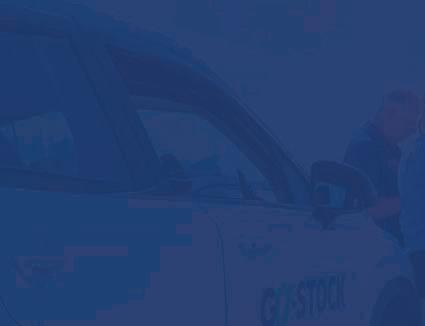


 LK0118263©
LK0118263©
Summer gains in wharfgate prices were unfortunately built on rickety foundations, and prices have already begun to weaken.

EXPORT log markets rolled through late spring and summer in a much healthier state than was witnessed in the five months prior.
Over that time prices for A-grade logs at the wharfgate shifted from an average of $93-$115/JASm3 –roughly equivalent to a per-tonne price – up to $120-$135/JASm3.
While this may not appear like a huge swing, it makes a significant difference to the bottom line once harvesting and transport costs are taken into account – particularly for those in the South Island, who are paid less due to the higher cost of getting ships into port.
Unfortunately, these lifts were always built on rickety foundations and prices have begun to weaken since. While there are vessels delivering logs to the likes of South Korea, Japan, and India, combined they pale in comparison to the volumes taken by China.
And the lift in the market through the back end of last year was almost all based on
fewer log shipments making their way to China, rather than an improvement in underlying demand.
Through November-January,
China imported only 5.6 million tonnes of softwood logs (pine and similar varieties), 3.0 million tonnes under the average over those months in the previous five years.
The massive drop in supply mainly came from fewer logs entering from Europe, partially due to issues with the Suez Canal making transport too costly, though both North and South America have been quiet too.
New Zealand is one of the few markets that has upped its supply over recent years.
But our rush to capitalise on the firmer market meant we shipped a record volume of logs to China in February – 2.08 million m3 –and in the process twisted the market from undersupply back to oversupply.
The fall hasn’t been overly harsh yet, around $10/JASm3 as of midMarch, but it is a little concerning given the market has usually tracked sideways or upwards between February and March over the past 10 years.
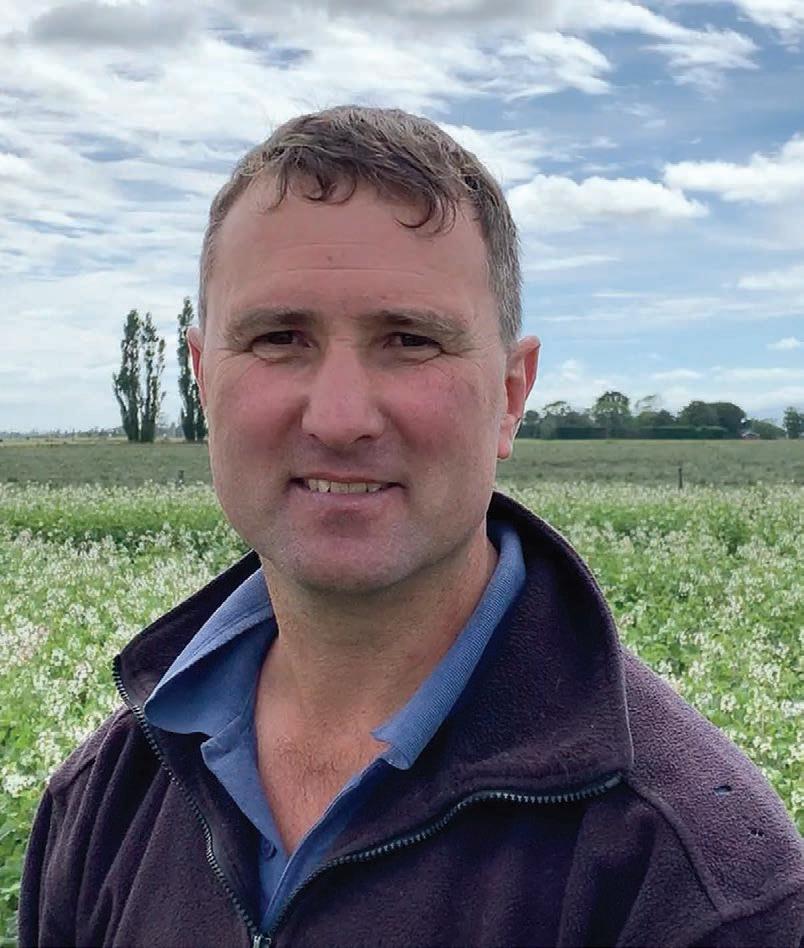
Proudly sponsored by
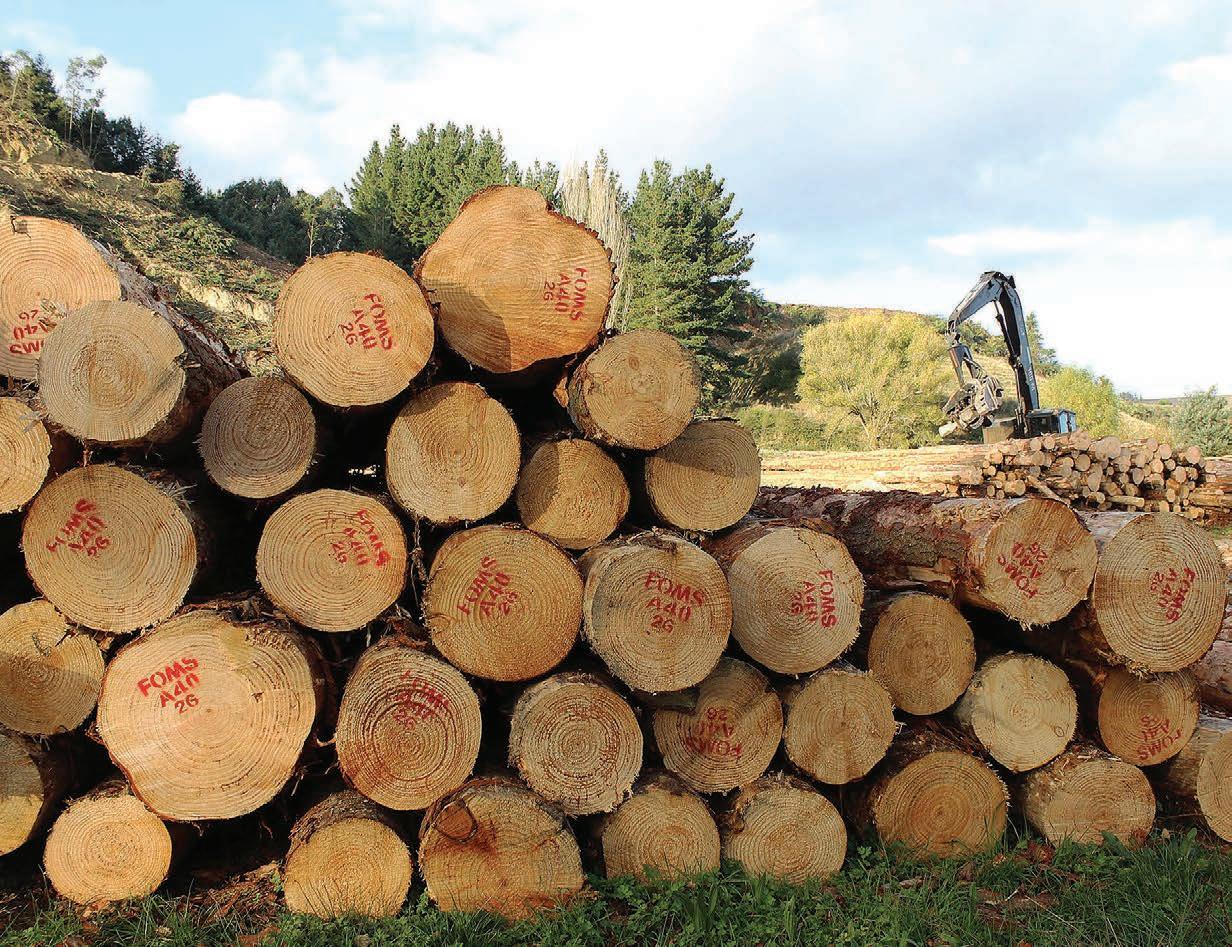
It’s not all about supply, though, as all indicators point to log usage within China remaining subdued over the coming months, potentially for the full year.
Earlier this month China Vanke, the second-largest property developer in China last year, had its credit rating downgraded to “junk” due to doubts about its ability to pay short-term debt requirements.
Another big developer faltering isn’t anything out of the ordinary based on the past three years, but there was a perception that this developer was more secure due to having government backing.
Real estate construction in China fell to the lowest level since 2007 last year at 954 million
m2. Through 2018-2021 this was consistently 2.0 billion m2 and 2.3 billion m2.
Our rush to capitalise on the firmer market meant we shipped a record volume of logs to China in February, twisting the market back to oversupply.
New Zealand log suppliers aren’t as exposed to China’s property sector as in the 2010s. However, these issues are significant in terms of investor and consumer confidence and therefore cause ripple effects across all sectors of the economy.
One example of this is the fact that personal savings within China recently reached all-time highs.
Locally, it is all a lot less dramatic. Mills have reported a much smoother start to the year for timber sales, helped by the fact that many have managed to sell down stocks that were stacked on-mill through much of last ear.
With this said, there’s unlikely to be a jump in demand anytime soon based on an even slower start to the year for new housing consents – though the reduction in windthrow logs being harvested through the central Plateau will ease supply through this part of the country.
“ I certainly do because it gives us up to date information on the markets and all the relevant farming news every week.”
David Birkett
Leeston arable farmer and Federated Farmers National Arable Chair
The weaner fair season continues to progress for the North Island and calf sales are getting underway in the South. Throughput at Matawhero for the steer and bull fair was the lowest on record at 1567 head and half that of 2019. Most traditional steers over 270kg fetched $1005-$1065 but per head budgets came into effect at the lighter end and 158-177kg Angus & Angus-Hereford earned $780-$840, $4.75/kg to $4.94/kg. Four-figure returns have also been posted at Wairoa, Brightwater and Cheviot for the top steers. Traditional heifers over 200kg at these three sales have ranged from $650 to $760 in most cases and reached $805 at Cheviot.
R2
Weaner
Weaner
Weaner
Rangiuru | March 26 | 341 cattle, 47 sheep
R2
Prime
Frankton | March 26 | 693 cattle
Aut-born
Weaner
Weaner
Coalgate | March 21 | 210 cattle, 6095
Canterbury Park | March 26 | 476 cattle, 2661

RED HEADS: Straight Hereford accounted for just 36-head at the Matawhero steer and bull weaner fair. The heavier of the two pens, 281kg, collected $1005 in line with other traditional variations.
Temuka | March 25 | 904 cattle, 8989
Temuka | March 21 | 1477 cattle


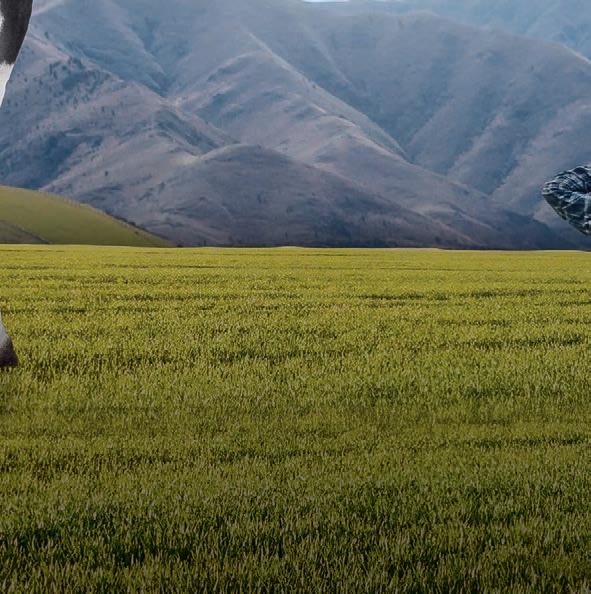

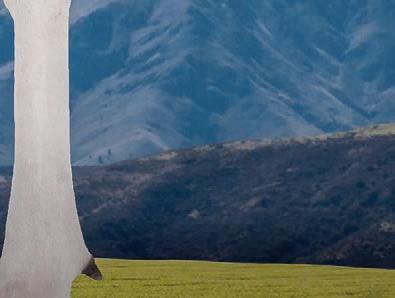

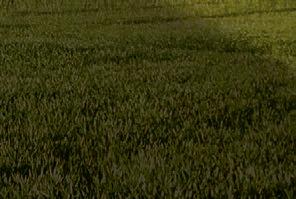

Lorneville
Store
Prime
Prime
Beef
|
| 1567
Brightwater |
| 588
Cheviot | March 21 | 928 cattle
Weaner

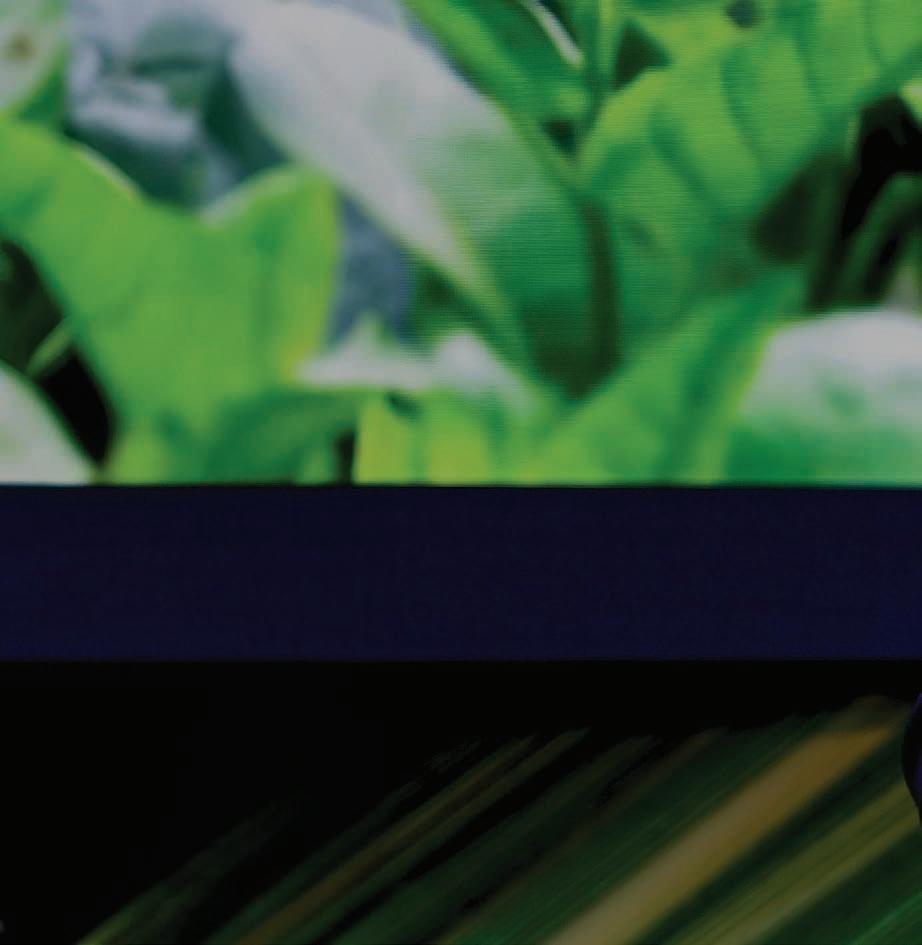
Cheviot
Feeder
Tuakau
Frankton | March 26 | 1241
Feilding | March 25 | 40 cattle
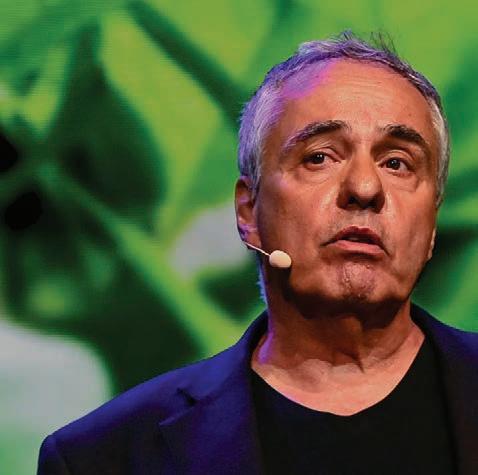



















 TPhilip Duncan NEWS
TPhilip Duncan NEWS
HE direction our weather comes in from matters a lot. Is it up, down or sideways on the map?
El Niño, autumn and spring all produce a lot of sideways weather – that is, weather that comes from the west or east with a lot of westerly or easterly driven winds.
When air moves from the side of us it’s usually not a lot warmer or colder. Generally easterlies can be a little cooler off the open Pacific Ocean and westerlies a little warmer coming out of Australia and the Tasman Sea regions.
El Niño encourages a bit of both “sideways” airflows (more westerlies) and “up” weather (occasional southerlies) into New Zealand.
So when the winds come “up” they are southerlies off the Southern Ocean and are colder (as we saw late last week).
When the winds come “down” from the sub-tropics they are milder (as we had last year with La
Niña producing so many tropical lows and northerly quarter winds).
El Niño and this part of autumn means NZ will be on the edge of more sideways (westerly driven) and up (southerly driven) weather. Sorry, Southland, that means more of the same for you.
In fact in the final week of March the NZ soil moisture maps showed a classic El Niño set-up with the wettest weather in that southwestern corner of the South Island – the first regions to get those westerly and southerly flows. This placing Marlborough and Nelson, Wellington, Horowhenua and Wairarapa and now Northland too into rain shadows.
With the first quarter of 2024 now done, here’s the State of the Nation as we kick off the next quarter.
North Island: The eastern side of Northland is now much drier than average, more so than any other region compared to normal. Driest areas are from Whangārei to Coopers Beach.
Parts of Auckland, Bay of Plenty, Hawke’s Bay, Wairarapa, Horowhenua and Wellington are
Earn a fixed return of 11-12% p.a. with interest paid monthly secured by first mortgage.
Minimum investment of $100,000 Wholesale investors only
No costs or fees deducted
Returns are pre-tax
Finbase provides private investors, family offices and high net worth individuals who meet relevant wholesale investor criteria an investment backed by First Mortgage Security.
Investor security:
Funds are utilised to provide First ranking mortgages to commercial borrowers for the purposes of short term property projects, maximum 12 month term of any loan.
Maximum lending of 60% of property value.
We will cover your legal and accounting fees of up to $2,500 to discuss this investment opportunity with your professional advisors, with no obligation for you to invest after doing so.*
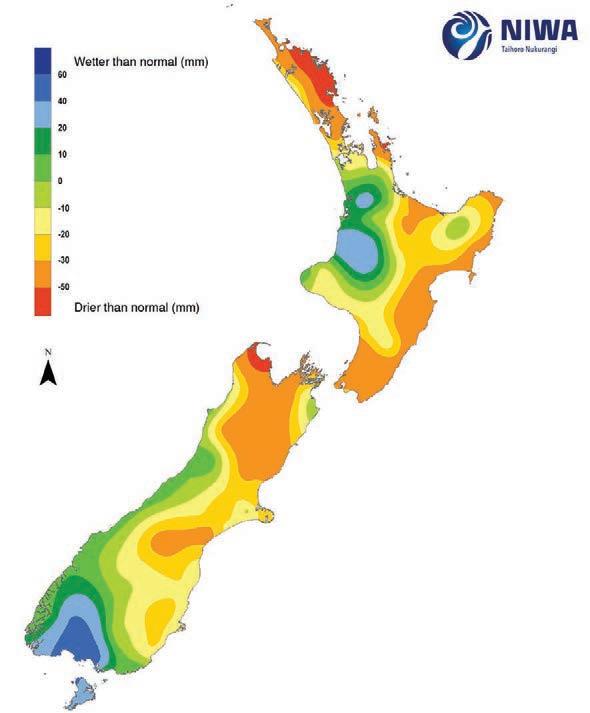
Soil moisture anomaly (mm) at 9am on 26/03/2024
ANOMALY: A soil moisture anomaly map showing the El Niño look to
all dry too, but have had more showers recently. Wettest areas from a soil-moisture point of view are the western North Island (as they have been all through summer).

Observed rainfall 9am 01/03/2024 to 9am 26/03/2024
ALL THE FALL: Rainfall so far this March (up to the time stamp on the map).
You can thank the sideways westerlies for that up there, but the sou’west lean at times is why the lower North Island has been in a rain shadow caused by the Southern Alps. South Island: Obviously Marlborough and
Nelson and Tasman Region, but also some parts of Canterbury could all do with a drink. The upper South Island is the driest with only some rain relief in the ranges for some waterways, rather than over land itself.
Recently funded investments: ADVERTISEMENT
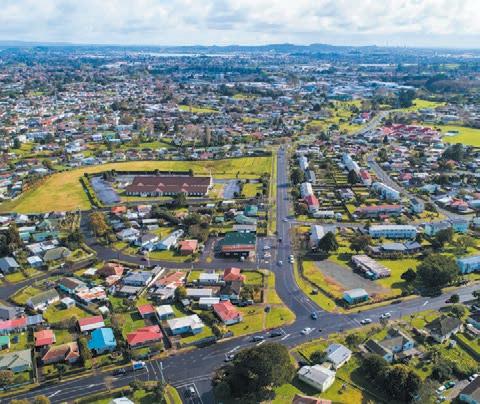
Papatoetoe, Auckland
First mortgage security
Security description: Residential unit with a floor area of circa 90m² on a cross-lease title
Purchase price: $450,000
Loan request: $256,500
Loan to value ratio (LVR): 57%
Term: 12 months
Interest rate: 11%p.a. paid monthly in arrears
Purpose of funds: Funds are being used to purchase the security asset
Exit strategy: The borrower will renovate the security asset before selling to repay the debt
Finbase is proud to have never missed an investor interest payment nor suffered a single loss of investor capital.
For more information visit our website at www.finbase.nz
Finbase
Financial Services Provider
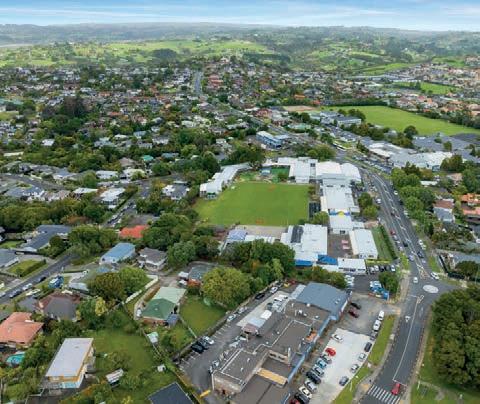
Cockle Bay, Auckland
First mortgage security
Security description: Circa 600m² freehold section (land only)
CV: $900,000
Loan request: $321,504
Loan to value ratio (LVR): 36%
Term: 12 months
Interest rate: 11%p.a. paid monthly in arrears
Purpose of funds: The borrower will fund the construction of a new build dwelling on the section
Exit strategy: Sale of the property once construction is complete

Pokeno, Auckland
First mortgage security
Security description: Freehold Section, circa 490m². All services on site ready to build.
Valuation: $375,000
Loan request: $221,000
Loan to value ratio (LVR): 59%
Term: 12 months
Interest rate: 11%p.a. paid monthly in arrears
Purpose of funds: Residual stock lending
post title issue from development lender
Exit strategy: Sale of the property
For investment opportunities contact our portfolio managers
Pernell Callaghan Hayden Thompson Jordan Evans
021 143 4291 pernell@finbase.nz
021 253 7816 hayden@finbase.nz
021 375 636 jordan@finbase.nz